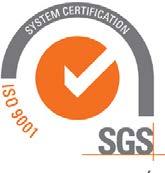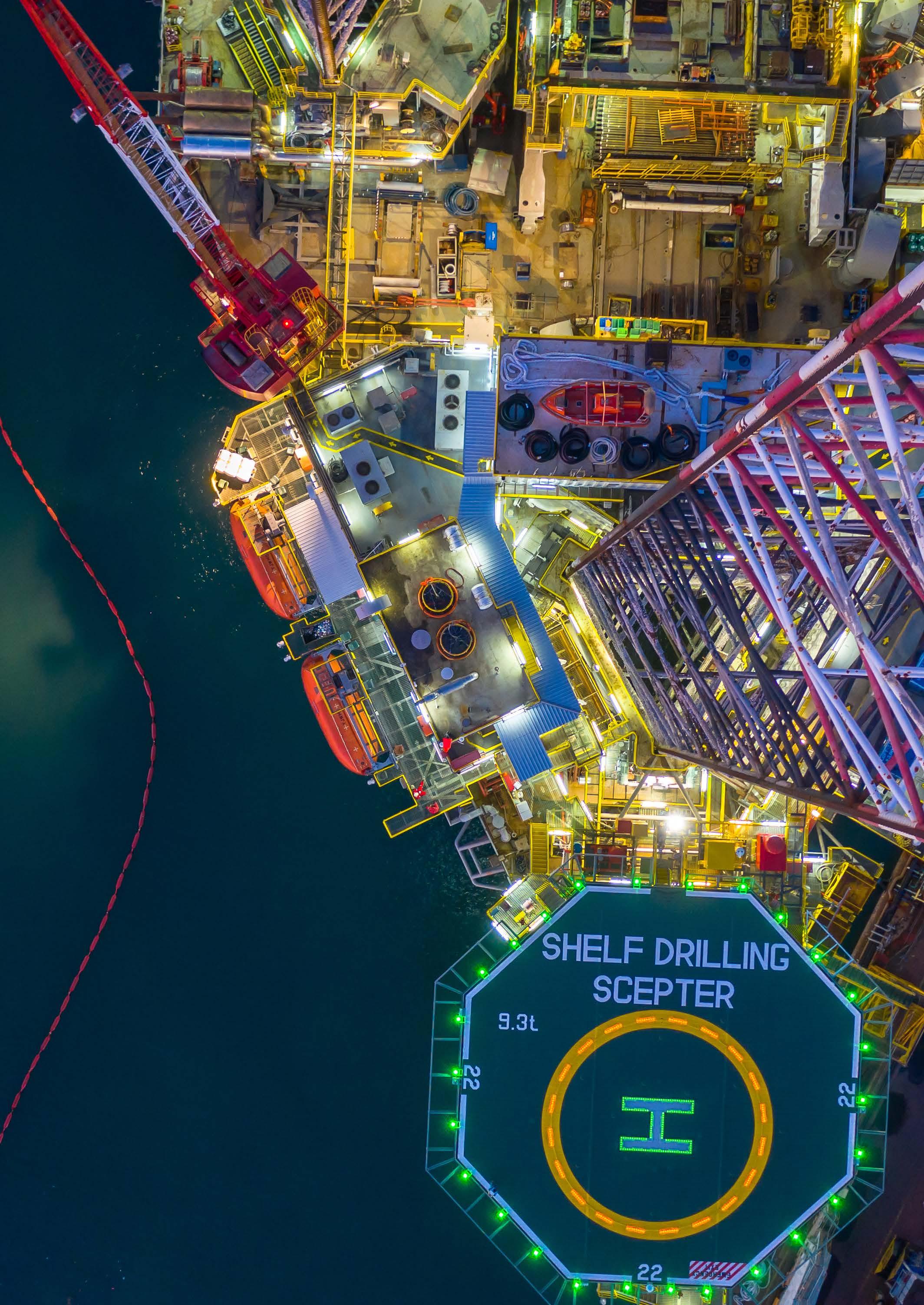
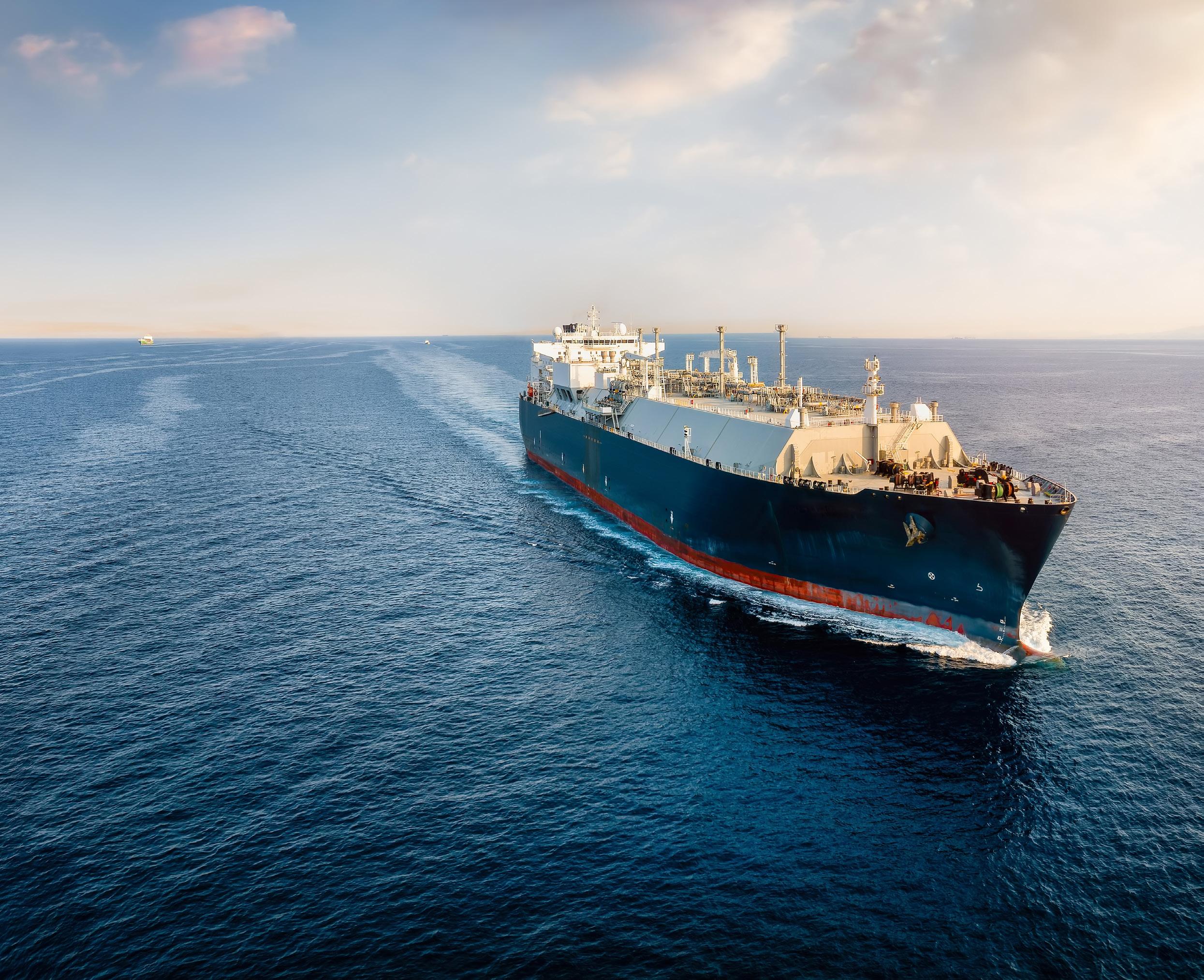



We strive to act as local guides through the unique and varied terrain of shipping and port logistics, always mapping out the best avenues for our clients and walking them through the tricky areas. Showcasing our expertise inspires the trust that remains the primary ingredient in our relationships and the key to our success.
Expert Advisors in Your Camp:

Editor-in-Chief Carley Fallows editor@littlegatepublishing.com
Advert Space Director Emlyn Freeman emlynfreeman@littlegatepublishing.com
Project Director Andrew Richards andrew@littlegatepublishing.com
Commercial Manager James Hamilton james@littlegatepublishing.com
Lead Designer Adam Knights
Research Kristina Palmer-Holt
Editorial Research David Craig
Corporate Director Anthony Letchumaman anthonyl@littlegatepublishing.com
Founder and CEO Stephen Warman stevewarman@littlegatepublishing.com
For enquiries or subscriptions contact info@littlegatepublishing.com +44 1603 296 100
ENDEAVOUR MAGAZINE is published by Littlegate Publishing LTD which is a Registered Company in the United Kingdom.
Company Registration: 404 2112 62
VAT registration number: 13572767
343 City Road 60 Thorpe Road London 79 Norwich
EC1 V1LR NR1 1RY
Littlegate Publishing Ltd does not accept responsibility for omissions or errors. The points of view expressed in articles by attributing writers and/or in advertisements included in this magazine do not necessarily represent those of the publisher. Any resemblance to real persons, living or dead is purely coincidental. Whilst every effort is made to ensure the accuracy of the information contained within this magazine, no legal responsibility will be accepted by the publishers for loss arising from use of information published. All rights reserved. No part of this publication may be reproduced or stored in a retrievable system or transmitted in any form or by any means without the prior written consent of the publisher.

Copyright© Littlegate Publishing Ltd
We’ve blinked and suddenly it’s June, and that means we’re already halfway through 2025! With just 6 months left of 2025, we look forward to sharing how companies across the world are focusing on ending the year just as successfully as they started it.
We kick off this edition with a focus on energy development in Nigeria with Shell and ExxonMobil. We got to see how Shell Nigeria has spent more than 50 years working across all aspects of the country’s energy development. It’s great to see BQub Engineering Services, Survival System International and Python Engineering Co. Ltd. supporting this feature as key suppliers helping Shell’s energy development in Nigeria.
For ExxonMobil Nigeria, we saw how its work across the upstream energy sector is delivering vital oil and gas resources for Nigeria focused on 5 key deepwater blocks. We’re excited to highlight XL Security & Protection Service Limited’s support for the article.
We then turn to B2Gold Corp. who are providing vital yet responsible mining operations across the Fekola mine in Mali. For this, it’s great to see Les Amis De La Nature returning to support this feature, highlighting its key role across the West African mining industry.
Across this edition, sustainability remains a key priority, with energy companies, ports and mines alike looking at ways to reduce their emissions whilst still delivering their vital operations to support industries worldwide. We look forward to seeing how this focus on sustainability continues to guide their operations over the coming months.
by Carley Fallows


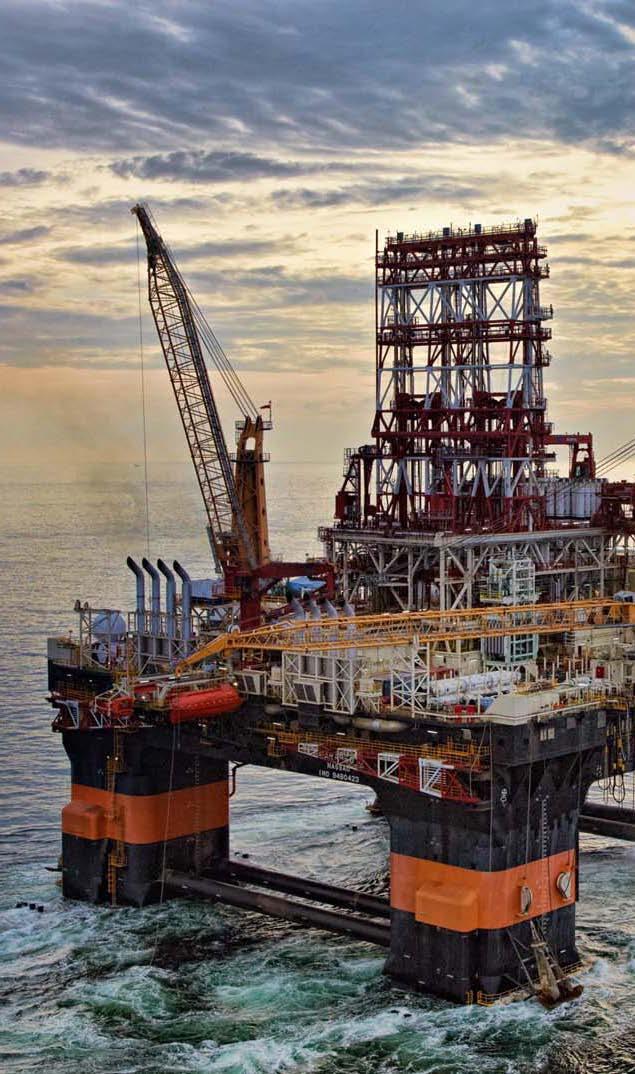
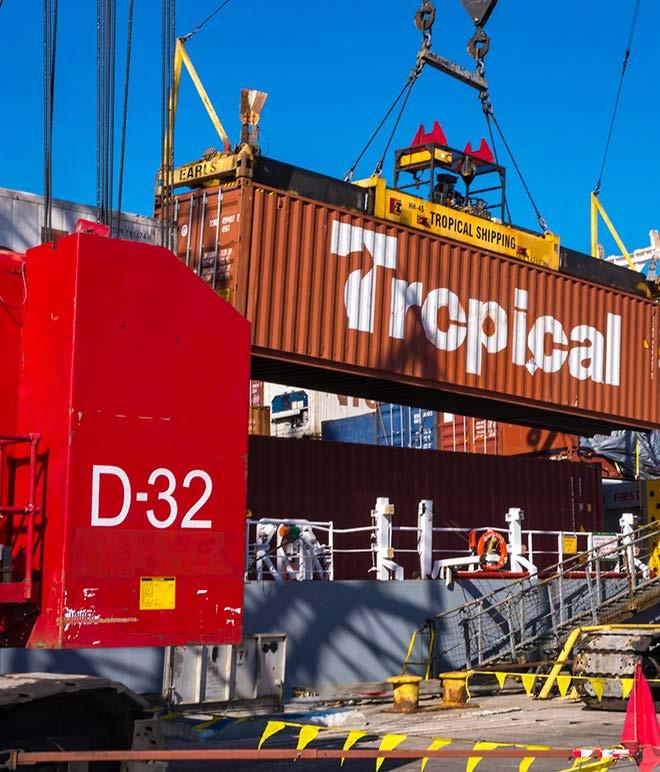
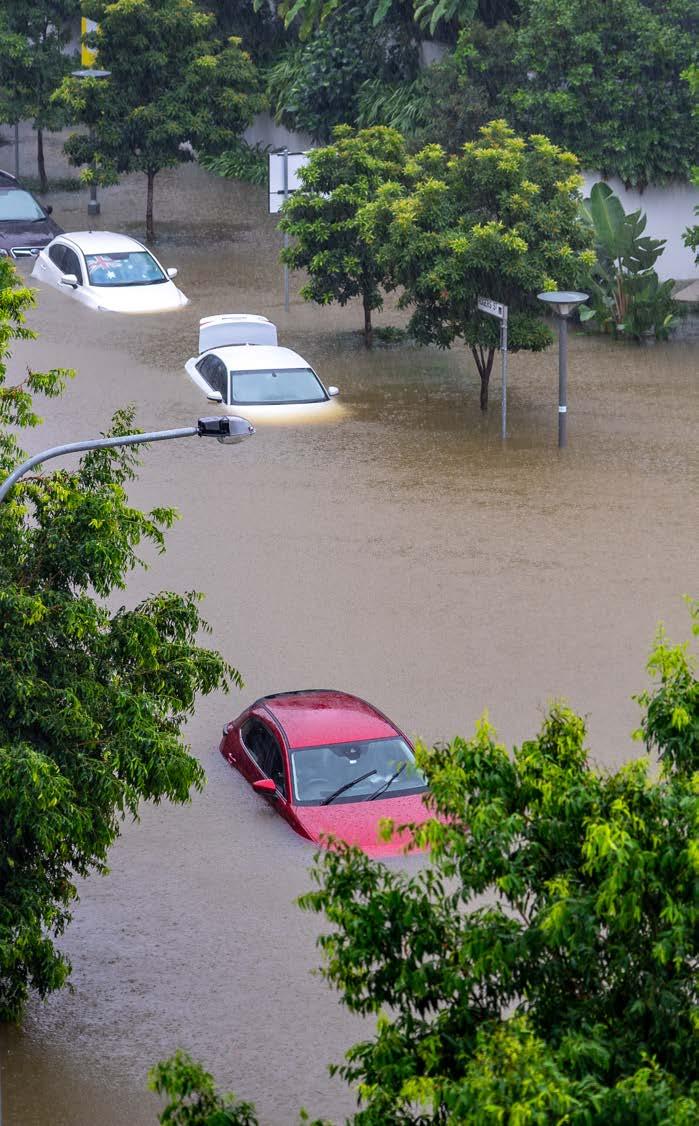

Prime Ministers from the UK and India have met to outline a historic trade agreement that would benefit both countries. Under the agreement, it will be easier for UK companies to export their products to India, especially for products such as whisky and vehicles. In return, India will cut taxes on its clothing and footwear exports to the UK. By making trade between the two countries easier, it will boost the movement of products between the two countries and so bring great economic benefits for both countries.
Also included in the deal is that some Indian and British workers will be able to access a threeyear exemption from social security payments. This exemption is for staff of Indian companies which have moved to the UK temporarily, and the same for UK workers transferred to India. This deal is set to come into effect over the coming year.
Extreme flooding in New South Wales has resulted in widespread devastation across the region. Heavy rains began over Sydney and Newcastle, with the southern parts of the state seeing the worst of the weather. 150 flood warnings were rolled out across the country as 50,000 people became isolated by floodwaters. As a result of the flooding, at least four people are thought to have died with others still missing.
One of the worst hit areas was Taree along the Northern Coast, with close to 10,000 homes at risk of flooding. The New South Wales State Emergency Service received hundreds of calls from stranded individuals, as it worked across more than 650 rescue operations across the flooded areas. The rainfall seen across the region has continued to grow in recent years, with this disaster being one of the worst cases of flooding seen in the area for many years.
Indian author, activist and lawyer Banu Mushtaq was announced as the winner of the International Booker Prize 2025 for her novel Heart Lamp. The book brings together 12 short stories that were written by Mushtaq between 1990 and 2023, outlining the hardships of Muslim women living in Southern India. The win has made history as the first book to be awarded the prize that is written in the Kannada language and translated into English.
The International Booker Prize is an annual literary award that is awarded to the best of translated fiction. The award is thus split between the author and the translator, highlighting the great written works and translation efforts that go into a novel. Mushtaq was awarded £50,000, which will be split with Deepa Bhasthi the translator of the short stories. Other novels on the shortlist included A Leopard-Skin Hat, Perfection, Under the Eye of the Big Bird, Small Boat and On the Calculation of Volume I.
Across the world electric vehicle adoption has been on the rise, and in Africa, the electric vehicle market has seen significant growth. However, the market usually focuses on urban and male clientele, but in rural Zimbabwe, electric vehicle markets are seeing women utilise electric tricycles more and more. Mobility for Africa, a Zimbabwean start-up, is focused on the women who are often forgotten about in the typical EV market, and today 77% of its customer base are women living in rural areas of the country.
Women in rural Zimbabwe are choosing electric tricycles, which are often preferred by female riders are they don’t have a straddle-style seat and provide greater stability – especially on uneven roads. Mobility for Africa is set on making these vehicles more accessible to women in rural areas to help deliver a more sustainable future whilst also making them efficient for the needs of rural use. The development of electric vehicles for use in rural areas opens up a large market, especially when typical electric vehicles are marketed to urban areas where there is a greater population density.
War across Sudan has left the country in a severe humanitarian crisis, and now a public health disaster is feared for the country. The International Rescue Committee (IRC) has warned that the county is on the brink of a public health disaster as cholera and other diseases are spreading across the country. Damage to power and water purification stations due to the ongoing conflict has left water untreated. This has led to people being forced to drink unclean water which has seen a rise in cases of cholera in the country. Doctors Without Borders has warned that there could be thousands of suspected cases of cholera across the capital city. Whilst most people with cholera have mild or no symptoms at all, the disease can be fatal in some extreme cases. With the medical facilities in the country already under intense pressure from the war, it is feared that the rise in cholera outbreaks could have severe effects across the country.

Poaching is a big problem in southern Africa, with conservation efforts across the region trying to stop poaching activities and protect wildlife. However, a non-profit organisation, Dogs4Wildlife may have found a solution with dogs. The organisation is training its dogs to support anti-poaching units to help protect the endangered species from being hunted.
The dogs are trained much like police or military dogs to focus on obedience, tracking and scent detection. This will allow the dogs to sniff out and track rhino horns, elephant ivory and bushmeat. The dogs are super valuable to anti-poaching teams across the sub-Saharan African countries, as they can cover 6.2 miles an hour when tracking and even at night which helps anti-poaching teams tackle poachers at all hours of the day. Dogs4Wildlife hope that one day it will be able to open a specialised training and canine school in Africa, to help future generations protect wildlife and stop poaching.

Tropical Forests are essential to protecting the world from climate change as they take in significant amounts of carbon dioxide from the atmosphere. However, fires across tropical forests worldwide have caused significant damage to these ecosystems, with researchers estimating that 67,000 square kilometres of old-growth forests were lost in 2024. For many years the main cause of forest destruction was due to land clearances for agriculture, however, fires were responsible for most of the destruction in 2024.
A key site that is of concern is the Amazon Rainforest, which takes in a significant amount of carbon dioxide from the atmosphere. However, with the rainforest facing both fires and drought, its role in helping reduce carbon dioxide in the atmosphere is shrinking. One of the other key problems with the destruction of such forests is the wildlife that they house, as with a reduction in the size of tropical forests, more species are displaced which could disrupt ecosystems and food chains.
Birds in the Jundiai River in Sao Paulo have been dyed blue following what is thought to have been a blue dye leak. The Brazilian environmental authorities are currently looking into a possible river contamination following what is thought to be a chemical spill caused by a truck accident. The truck is thought to have been transporting containers of blue dye solutions, and the collision led to the cargo rupturing releasing the chemical into a manhole connected to the Jundiai River.
The dye involved in the spill is thought to have been the type uses in the production of Styrofoam packing and egg carton, however this has not been confirmed. Currently authorities are looking into the spill and accessing the environmental impact on wildlife and aquatic ecosystems.
Images released by NASA show what is being dubbed a ‘space rainbow’. The images were created by putting together three images taken from NASA’s new PUNCH mission. PUNCH is a research mission to measure the corona and solar wind of the sun in 3D by studying the direct light travels through 4 small satellites which are in low Earth orbit. Thus, the satellites are equipped with cameras which took the three successive pictures which shows the rainbow effect image. The different colours seen in the image is thought to represent the different strengths and directions of light, which also gives scientists new information about the movement of the solar wind.
This is the first time a rainbow-coloured view of the sky has been captured by NASA, and the images will be used to help the space agency to gain a better understanding of the entire inner heliosphere of the sun.




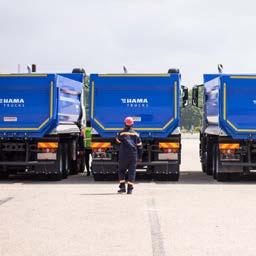


A United Nations-backed report has outlined that global hunger has reached a record high with conflict, extreme weather and economic crises being leading causes. According to the report, acute food insecurity and child malnutrition rose for a 6th consecutive year in 2024 affecting more than 295 million people worldwide. A key focus for food insecurity in recent weeks has been across Gaza as aid and food have been prevented from entering the region. This has left thousands of people starving and at risk of famine according to the World Health Organisation.
Extreme hunger as the result of war has also been seen across other worn-torn countries such as Sudan, Haiti and Mali. However, the growing economic crisis across many countries has also played a big role in growing hunger levels. Inflation has pushed 59.4 million people into food crises in 15 different countries including Syria and Yemen. Another key factor is extreme weather, including El Nino which brought droughts and floods, which have caused widespread destruction to crop fields and farming land.


Officers serving in the UK Naval Support Facility in Bahrain were alerted to cries from animals under a shipping container. The officers were surprised to find 5 kittens that were not more than three weeks old. It is thought that the mother of the kittens, which the officers knew of, had died and so the kitten had not been weaned properly. The offices serving at the facility have been taking turns to foster, handfeed and care for the kittens whilst they look for a forever home for the animals.
The discovery of the kittens comes at a vital time as temperatures across Bahrain have been reaching highs of 40°C. At these temperatures and without food from their mother the kittens would have likely died. However, thanks to the rescue by the Officers, the kitten will now be given a forever home.
Walt Disney has announced it will open a new theme park in the United Arab Emirates (UAE), in a collaboration between them and Miral who are the local entertainment company in the country. The theme park will be located on Yas Island and will be the first Disney Park to open in the Middle East. The Walt Disney theme parks attract customers from all over the world, and so the recent announcement of a park to be opened in the UAE is vital for the country’s tourism sector.
Every year 120 million passengers travel through Abu Dhabi and Dubai every year, and so the country makes a great location for a new park. The project will be completed in collaboration with Miral who are responsible for the development of Yas Island as a tourist destination. The Yas Island is already home to a SeaWorld Park and a Warner Bros World.

Beavers have been spotted for the first time in Wales after having disappeared from Britain around 400 years ago when wild beavers in Britain were hunted to extinction. In Wales alone, there are 4 managed enclosures that house beavers. However, there is an unknown number of species living in the wild.
The government in England recently approved the reintroduction of beavers into the wild, and it is thought that there could be 500 of them living in the country either in enclosures or in the wild. This follows the reintroduction of beavers in Scotland many years ago, where there are now thought to be more than 1,500 in the wild. Therefore, the sighting of the beaver suggests the species population is growing in Wales. In fact, those from the Wildlife Trust Wales have said there is evidence that the semiaquatic animals were breeding along the waterway.
A small village in Switzerland has been partially destroyed following a chuck of a glacier crashing down into the valley and covering the village of Blatten. The glacier caused many homes to be completely flattened; however, the village had been evacuated many days before due to fears that the Birch Glacier had been disintegrating. Thankfully no one has been reported to be harmed, however, one person has been reported missing. Following the fall of the glacier, the Swiss government has promised funding to make sure residents can stay in the local area.
One of the main causes for the glacier disintegration is thought to be due to climate change, which is causing the glaciers to melt faster. The melting of permafrost which held the mountains above the village of Blatten together seems to have melted, which resulted in the fall of the glacier to the valley below. Researchers who monitor the glaciers have warned for many years that alpine towns and villages could be at risk of such events, with many villages evacuated over the years out of fear of glacier disintegration.

Following the death of Pope Francis in April, the conclave met at the Vatican to choose the next Pope. The conclave is made up of cardinals from across the world, who all descended on the Vatican to vote in the next Pope. Once inside the Vatican, the cardinals are not allowed to leave until a new Pope is chosen. Every day the Cardinals would hold a vote. If black smoke appeared from the Vatican chimney, it signified that they had not reached a decision. However, white smoke would signify a new Pope has been chosen. The vote for the new Pope took only 2 days, which was relatively quick compared to other years.
The conclave chose Robert Francis Prevost, who will be known as Leo XIV. Pope Leo XIV was born in Chicago and is of Spanish and FrancoItalian descent. Whilst Pope Leo XIV is regarded as the first American to fill the role of the Pope, he is considered to be a cardinal from Latin America due to the many years he spent as a missionary in Peru.



Shell has been in operation in Nigeria for more than 50 years with its first developments beginning in 1937. Over the years, Shell has been vital in delivering pioneering onshore, shallow and deep-water oil exploration and production projects. These projects are delivered by one of the four subsidiary companies as part of Shell Companies in Nigeria which collectively contribute majorly to the economy thanks to the energy they produce and the revenue this generates for the country. Aside from the development of energy, these companies are also vital in supporting the supply chains, local content and social investment of the country’s energy industry.
The largest Shell company in Nigeria is Shell Petroleum Development Company of Nigeria Limited (SPDC), a joint venture between Shell and the government-owned Nigeria National Petroleum Corporation (NNPC). As part of the SPDC JV, NNPC holds a 55% share, with SPDC holding 30%. The remaining shares are owned by Total E&P Nigeria (10%) and ENI-owned Agip Oil Company Limited (5%). SPDC was responsible for producing the country’s first commercial oil exports in 1958. Today, the joint venture is focused on onshore and shallow water developments to produce oil and gas in the Niger Delta, with assets spanning 50 oil-producing fields. Across these assets, SPDC JV has a network of 5,000km of oil and gas pipelines and flowlines, 5 gas plants and two major oil export terminals.
For deepwater oil development, Shell holds 100% interest in Shell Nigeria Exploration and Production Company (SNEPCo) which has focused its development primarily on the Bonga Field. Across the Bonga field, Shell is responsible for the production of more than 200,000 barrels of oil per day (bpd) and 10 million standard cubic feet of gas per day (mmscf/d). As the first deepwater
development for Nigeria’s oil and gas sector, Shell has played a key role in pioneering this industry for the country, which in 2005 saw Shell increase the country’s offshore capacity in Bonga. Today, almost a third of Nigeria’s deep-water production comes from the Bonga and Erha oil fields, reaching depths of more than 1,000 metres.
In 2014, SNEPCo continued its expansion of the country’s deepwater developments with the establishment of additional deepwater developments in Bonga North West. These offshore deepwater projects have been vital to the social and economic development of Nigeria, with the developments delivering much-needed employment, training and business opportunities for local people. In fact, the Bonga Field developments have helped establish the first generation of Nigeria’s oil and gas engineers with experience in deep water development.

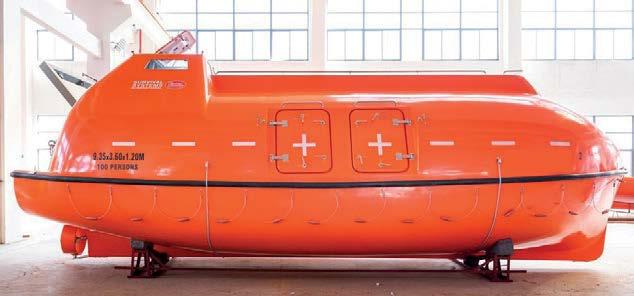
Keeping Lifeboats Operational, Safe & Compliant for 50+ years
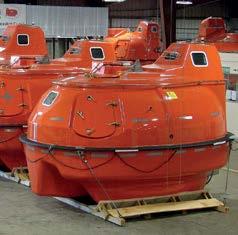
For over 50 years, Survival Systems International (SSI) Africa has been a trusted leader in lifeboat safety, offering comprehensive services including multi-brand lifeboat inspections, maintenance, and repairs. Our patented Triple5LX hook system and ISO-compliant practices ensure your crew’s safety and compliance with international standards.
Services include: Maintenance & Inspections • Repairs & Refurbishments
• Load Testing • Hire Equipment • Life Rafts
Ensure your lifeboats are always operational and compliant. Partner with SSI Africa for unmatched safety and reliability.
T: +234(0)8106687469 richard.omokri@ssiwa.com.ng survivalsystemsinternational.com





BQub Engineering Services Ltd. has provided top notch Automation Solutions to clients in diverse industries for over two decades since it’s inception.
BQub Engineering Services Ltd. delivers top-tier engineering services in Industrial & Process Automation, Instrumentation, Power Electronics, and ICT.

Key Offerings and Commitments:
• Control system design & commissioning
• Skilled support for turbines, compressors & treatment plants
• System upgrades & multi-vendor integration
• Supply of panels, instruments & software
• On-site support & consultancy services
Trusted. Experienced. Reliable. Partner with BQub – Your One-stop Solution in Automation! Contact us today!


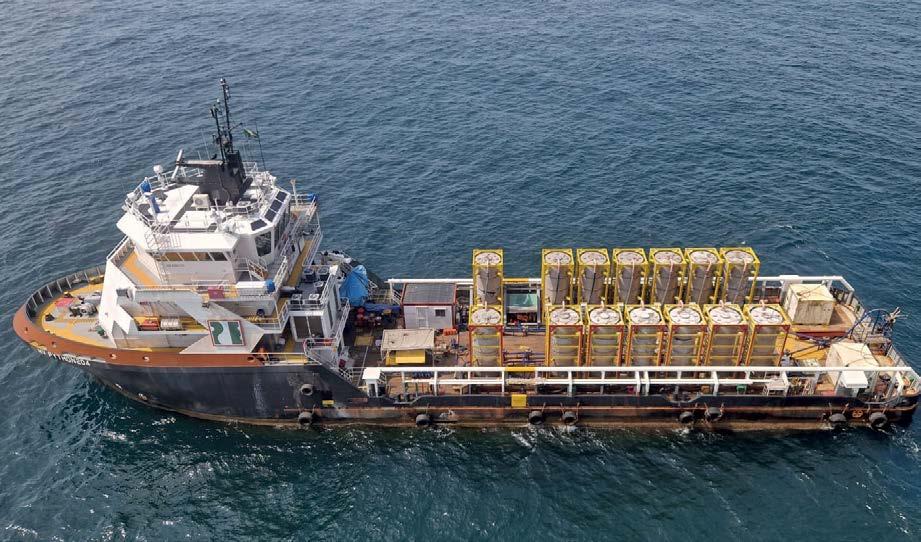



For over four decades, Python Engineering Company Ltd. has set the standard in West Africa’s marine sector. Operating from its expansive 9-acre marine base in Warri, Nigeria, Python Engineering offers a full suite of marine services—from vessel construction and dry-docking to steel fabrication and offshore support.
Boasting one of Africa’s most diverse and modern fleets, Python’s vessels are built to exacting European & US standards and are tailored for the demanding conditions of both inland and offshore operations.
OUR SERVICES INCLUDE
MARINE SERVICES
From the maintenance of marine vessels, barges and tugboats in her shipyard at 47 Enerhen road, Warri, in the early 90s, PECL has acquired a vast experience in shipyard services and then progressed to the construction of different marine vessels, such as houseboats, ramp barges, flat top barges, fuel barges, water barges, dredgers, pontoons, offshore and onshore Port A Cabins and even tugboats. PECL provides wide range of offshore support services in the oil and gas sector from the logistics and transportations to security patrol services to supporting rigs in their daily drilling operations through provision of various types of offshore vessels
CIVIL & CONSTRUCTION SERVICES
Our Civil design and construction team has executed several projects starting from residential projects, roads & infrastructure, helipads and runways, office complex buildings, to integrated projects ( as Field logistics bases and plant buildings)
Python Engineering Company Ltd has combined its expertise both in marine & civil services and has designed, fabricated, installed and executed several camps both on land and on offshore barges and locations by construction of accommodation units, office units, kitchen and messing units, recreational units, self-contained toilet units and technical units.
FACILITIES MANAGEMENT & MAINTENANCE SERVICES
Python Engineering Company Limited is a leading Facilities Management & Maintenance Services Company; since incorporation PECL was & still rendering her services successfully to the Major Oil & Gas Companies with the highest safety standards.
Whether it’s accommodation barges, tugboats, or offshore logistics vessels. Python ensures every asset delivers comfort, safety, and efficiency.
Trusted by leading IOCs, energy and infrastructure firms, Python Engineering is more than a marine services provider—it’s a strategic partner powering progress across the continent.
Partner with Python Engineering for reliable, stateof-the-art marine services tailored to your project’s needs. Explore our capabilities and discover how we can support your operations.
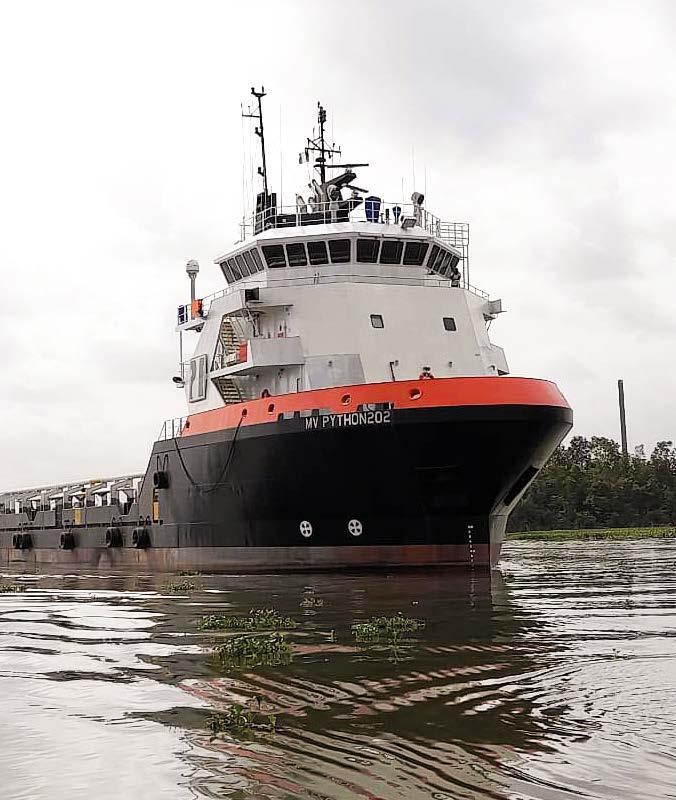

For gas development, Shell Nigeria Gas (SNG) is the only international oil and gas company established as a gas distributor to industry customers across Nigeria. SNG, incorporated in 1998, has spent more than 25 years focused on the downstream distribution of gas to industries across Nigeria. The company provides manufacturing and industrial customers with access to a clean, reliable and low-cost alternative to liquid fuel. To achieve this, SNG operates a growing world-class gas transmission and distribution network spanning 138km of the country. In recent years, SNG has been focused on a growth phase, and so in recent years has expanded its gas distribution capacity by over 150%. Its network is now able to distribute over 150 mmscf/d of dry processed gas to more than 300 industrial customers nationwide, with more than 100 industrial customers already connected to its gas grids.
To help support SNG’s networks, the company has built strong relationships with virtual pipeline operators, which are focused on developing compressed natural gas and mini-LNG grids
across the country. By working closely with these operations, SNG can continue to deliver vital energy infrastructure to meet the needs of the country, and in turn bring more social investments into the local communication through its value chains, revenues and employment opportunities. For this reason, SNG has established itself with a firm identity as a safe and credible gas distributor.
The final company operating under Shell Companies in Nigeria is Nigeria LNG Limited (NLNG). The company is a joint venture with Shell holding 25.6% share, and NNPC, Total E&P Nigeria and ENI holding 49%, 15% and 10.4% respectively. The focus of its operations centres around the NLNG Plant on Bonny Island, where the facility has 5 processing units with a total processing capacity of 22 million tonnes a year of LNG. In addition to this, the facility can produce up to 5 million tonnes of natural gas liquid (liquefied petroleum gas (LPG) and condensate). The facility is responsible for powering more than 200,000 homes and businesses on Bonny Islands, through a rural electrification scheme, Today, NLNG accounts for approximately


7% of the world’s total LNG supply, highlighting the valuable role Nigeria and Shell play in delivering this vital energy to market for a more sustainable future. In recent months Shell completed the sale of SPDC to a consortium called Renaissance for $1.3 billion. The divestment of SPDC is set on helping Shell simplify its presence in Nigeria, through its exiting from the onshore oil production in the Niger Delta. Instead, its focus for the future would remain on investing and developing Nigeria’s deepwater and integrated gas positions. Renaissance, renaming SPDC to Renaissance Africa Energy Company (RAEC), will therefore take over Shell’s previous 30% stake in the joint venture, leaving the company now owned by Renaissance, NNPC, Total E&P Nigeria, and Agip Energy.
Across Shell’s operations in Nigeria, there is a keen focus on making the most of the country’s oil and gas reserves to serve the people and economy of Nigeria. With every aspect of the oil and gas development sector focused on delivering vital resources, Shell continues to invest in people and businesses across Nigeria delivering a better future for the country both now and in the future. With the announcement of the divestment of SPDC to Renaissance, we look forward to seeing how Shell will continue to expand its deepwater and integrated gas positions across Nigeria to deliver vital resources for the future of energy development.
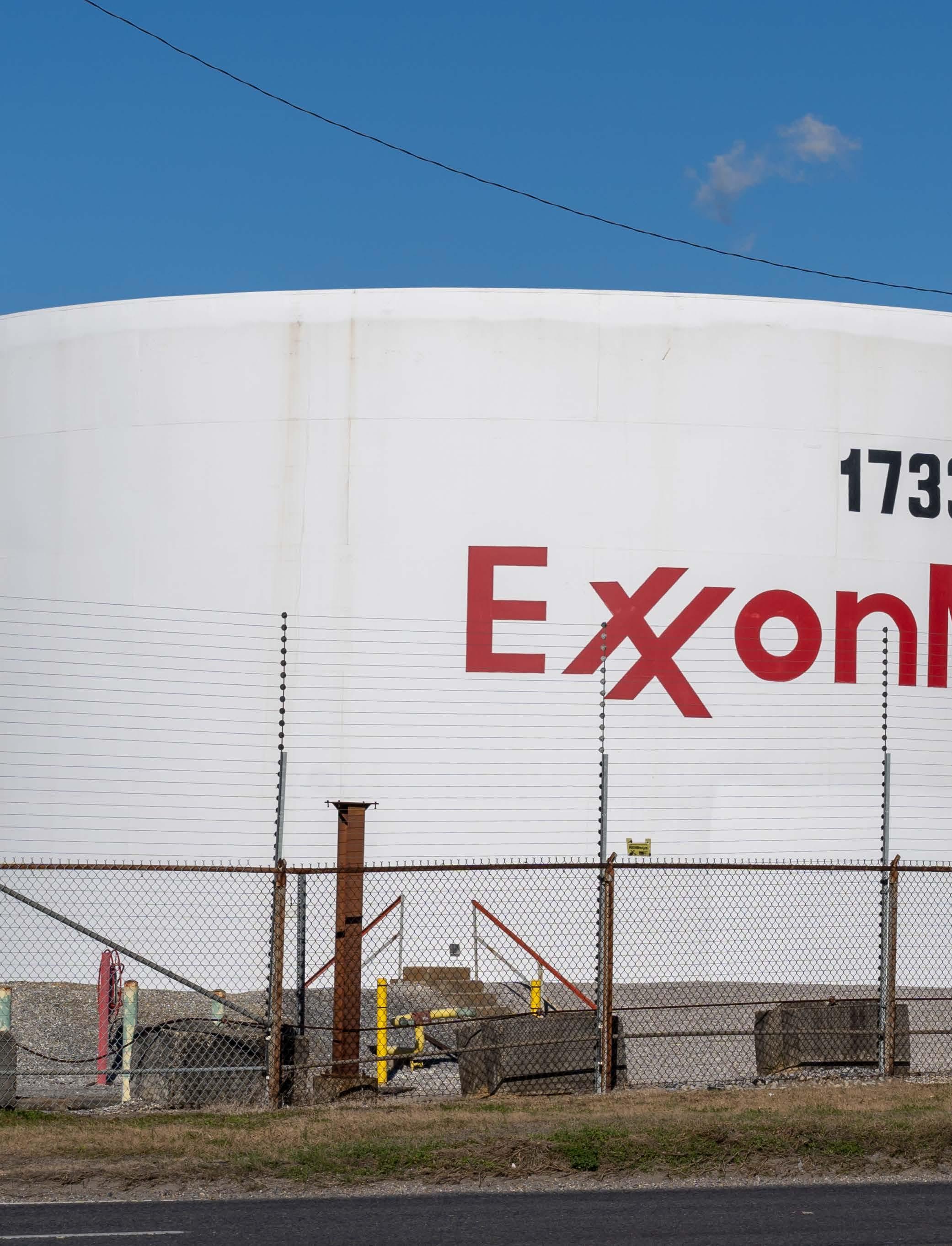
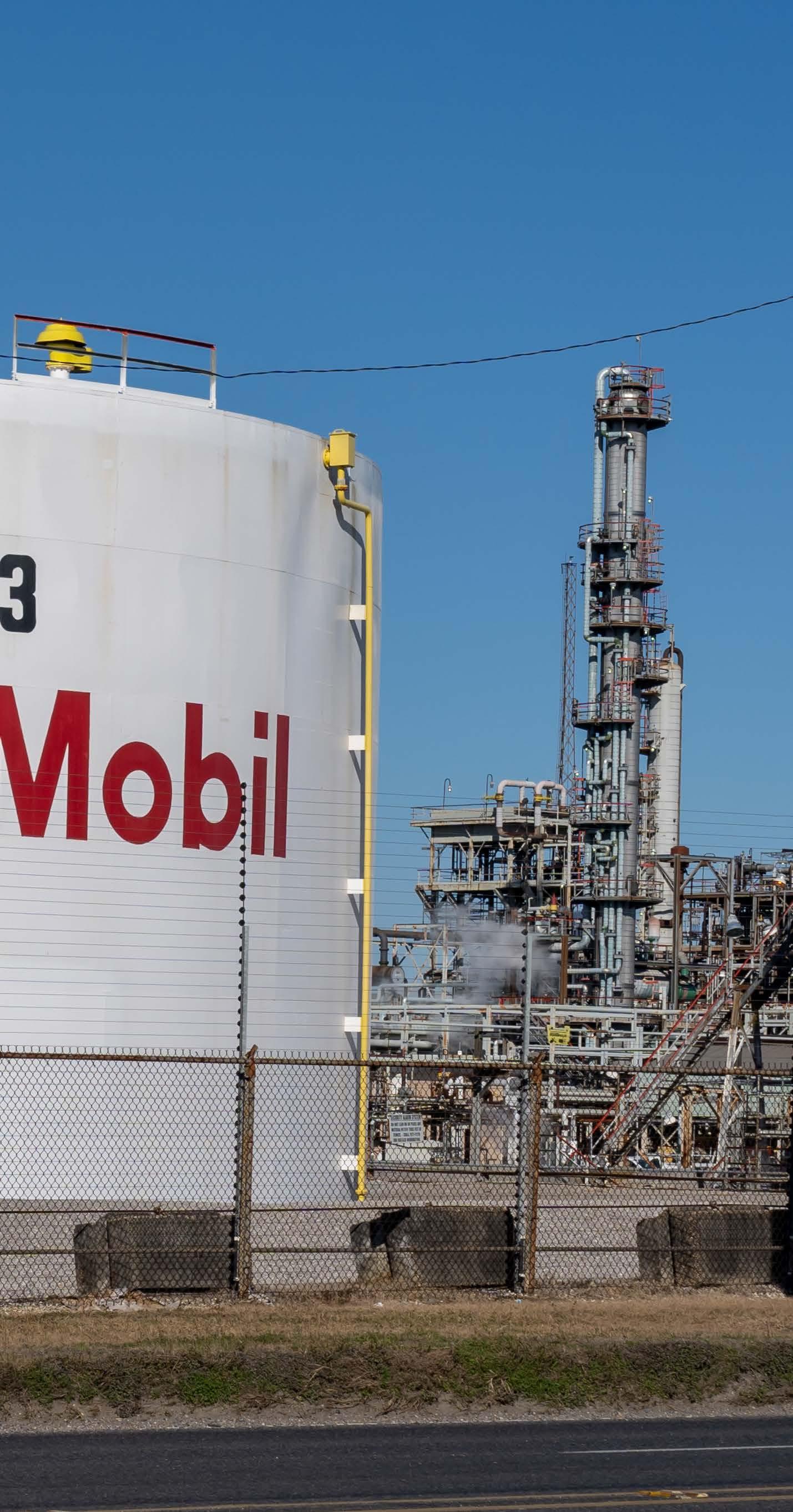

Nigeria is one of the largest oil and gas producers in Africa. Consequently, many global energy players have vital operations throughout the country aimed at bringing these essential resources to market. For ExxonMobil, its operations in Nigeria focus on exploring and producing crude oil and natural gas, while manufacturing petroleum products to support the country’s energy sector. Given Nigeria’s reputation for substantial energy production, it is unsurprising that the oil and gas sector contributes significantly to the country’s economic growth. Through a variety of affiliate companies, ExxonMobil has long played a crucial role in Nigeria’s energy sector, delivering energy resources to meet global energy demands in the most responsible manner possible.
Across Nigeria, ExxonMobil is heavily focused on the upstream aspects of oil and gas production, with its primary focus covering the exploration and production of crude oil and natural gas. Across these operations, the company then covers the transportation and sale of crude oil, natural gas and petroleum products. For this reason, ExxonMobil is a vital manufacturer and marketer of such commodities across Nigeria and the global market. In Nigeria specifically, ExxonMobil has 5 upstream affiliate companies which cover 5 deepwater blocks. These include Esso Exploration and Production Nigeria Limited, Esso Exploration and Production (Offshore East) Limited, Esso Exploration and Production Nigeria (Deepwater West) Limited, Esso Exploration and Production Nigeria (Upstream) Limited and Esso Exploration and Production Nigeria (Deepwater Ventures) Limited. Across these 5 companies, ExxonMobil spans some of the most vital offshore fields surrounding Nigeria to deliver vital oil and gas products to market.
One of the most notable fields for ExxonMobil and Nigeria’s energy development is the Erha Field


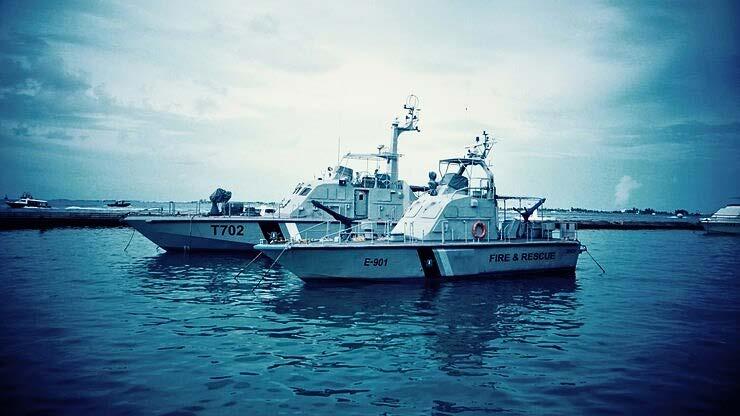
located off the Nigerian coastline, roughly 85 nautical miles from the Port of Lagos. Within this field, Esso Exploration and Production Nigeria Limited (Esso E&P Nigeria) operate the Erha development inclusive of the Erha terminal. The terminal consists of a spread-moored floating production and offloading (FPSO) unit, which can store 2.2 million barrels of crude oil. The development of the terminal began over 10 years ago in 2003, with production starting in the first quarter of 2006. The terminal remains a key focus for Esso E&P Nigeria today and is now one of the largest FPSO platforms in the world. Today, the Erha Terminal can store 2.2 million barrels of oil (MMbbl), with a capacity to handle 210,000 barrels per day (b/d). In addition to this, the terminal has a capacity of 340 thousand cubic feet per day (Mcf/d) of gas for reinjection, with a 150,000 barrels per day capacity for water reinjection.
Across Erha there are three subsea centres, these are named Erha DCE, DCW and DCN. Both DCE and DCW have a total of 24 wells, of which 15 are producers, whilst 4 are water injection and the remaining 5 are gas injection. DCN has 8 wells, half
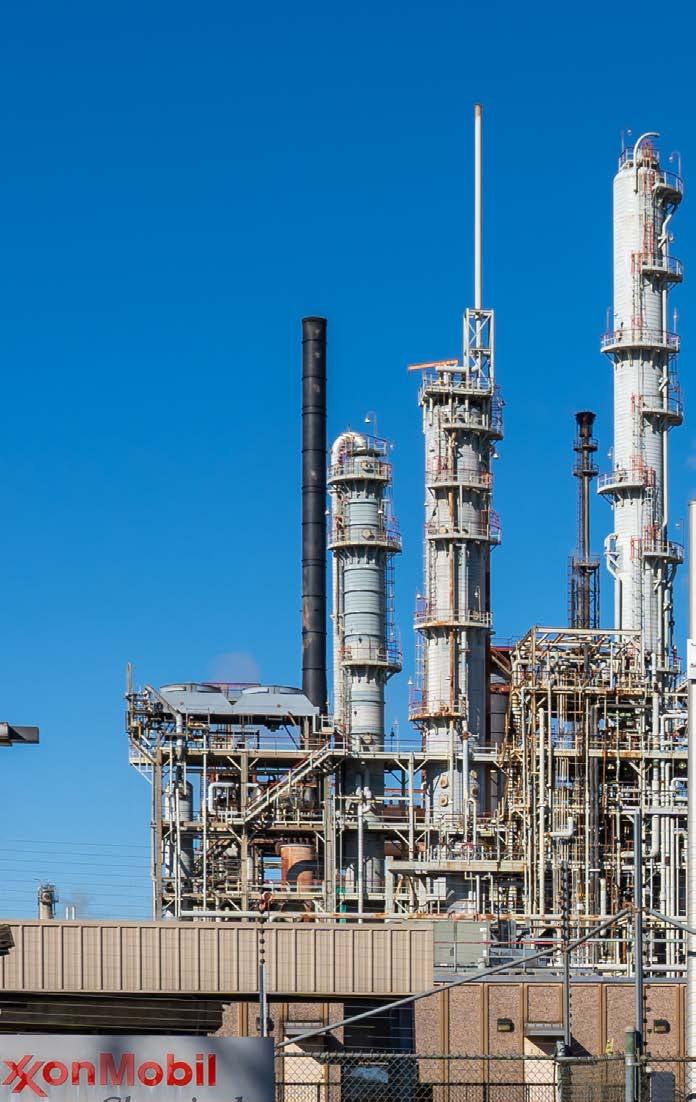
are used for production and the other half are used for water injection. The development is operated by Esso E&P Nigeria, which holds a 56.25% participating interest in the OML 133 production-sharing contract area where the terminal is located. The remaining 43.7% is owned by Shell Nigeria Exploration and Production Company (Shell Nigeria E&P Co.).
A field that is currently undergoing vital development is the Usan Field located in the OML Block 138. The field, which is operated by

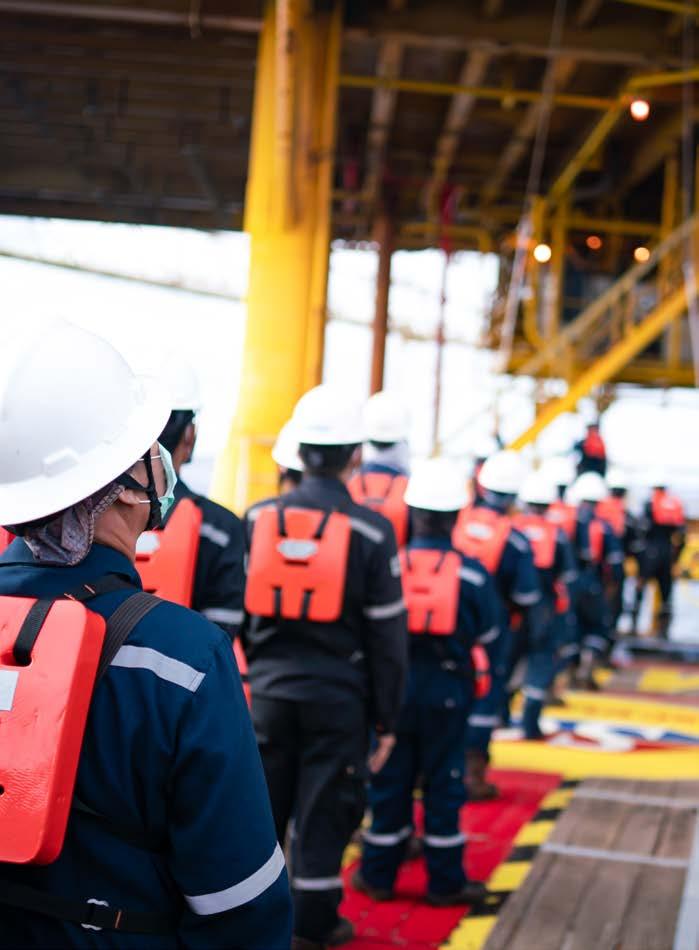
TotalEnergies Exploration & Production Nigeria (Total E&P Nigeria), is held jointly between Total E&P Nigeria (20%), Chevron Petroleum Nigeria (30%), Esso Exploration and Production Nigeria (Offshore East) (30%) and China National Offshore Oil (20%). Oil was first discovered in the region in 2002 and was approved for further development in 2008. Just 4 years later, the Usan field began production in 2012, and now the project spans 34 subsea production and injection wells, which are supported by 8 subsea manifolds.
Aside from ExxonMobil’s focus on delivering vital energy resources in Nigeria, the company remains committed to achieving its operations in a sustainable way. ExxonMobil is committed to improving the quality of life and so continues to invest in solutions and initiatives that will support tomorrow whilst delivering the vital energy resources for today. ‘Protect Tomorrow’ is the guiding principle


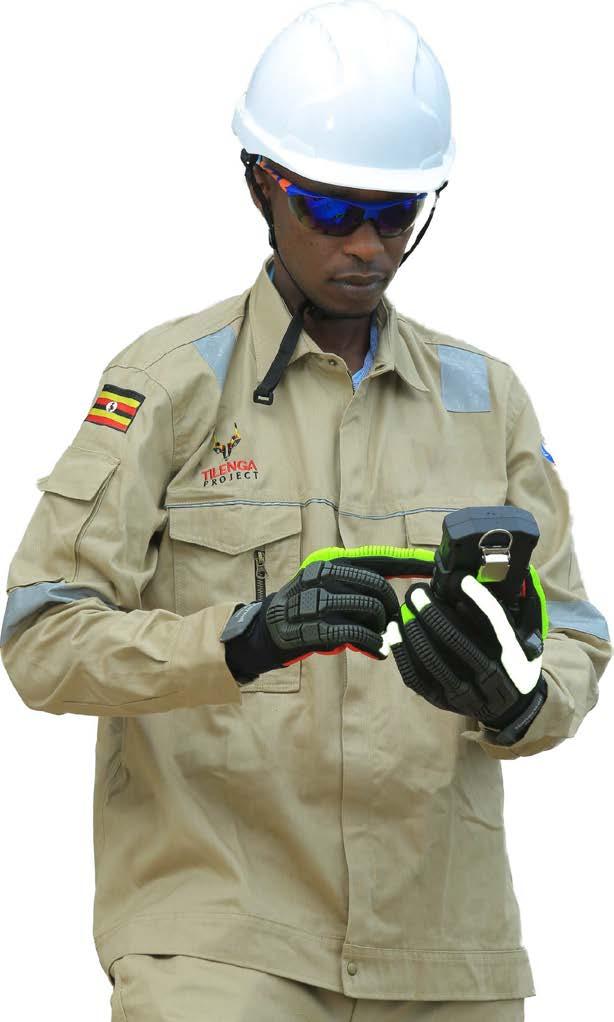
behind ExxonMobil’s sustainability approach, and it is with this in mind that the company is aiming to pursue $30 billion in lower-emission investment between 2025 and 2030. This is a mission that the company is already largely on track with, as it is actively focusing its business plans on reducing its overall emissions.
For ExxonMobil, achieving a more sustainable future is only possible through the implementation of technology and policies which are targeted to help the company achieve net-zero emissions by 2050. With this focus, the company strives for environmental excellence in every aspect of its operations. Beyond its sustainability measures within the company, ExxonMobil is also focused on working with local economies, communities and its workforce to deliver a culture and community that is respected, supported and safe surrounding its operations.
Whilst ExxonMobil’s operation in Nigeria remains vast, there is a key central focus to deliver the vital infrastructure, investment and development to help the country’s energy sector thrive. With vital operations spanning some of the most lucrative deposits along the West African coastline,








ExxonMobil Nigeria is set on delivering vital economic growth to the region supported by its dynamic and reliable energy delivery operations. As the company moves towards the future, it continues to balance the need for energy resources with a focus on reducing emissions on a global scale. Therefore, through vital energy delivery operations, it is set to continue to enhance the country’s energy development and help deliver these resources to key markets across the world.

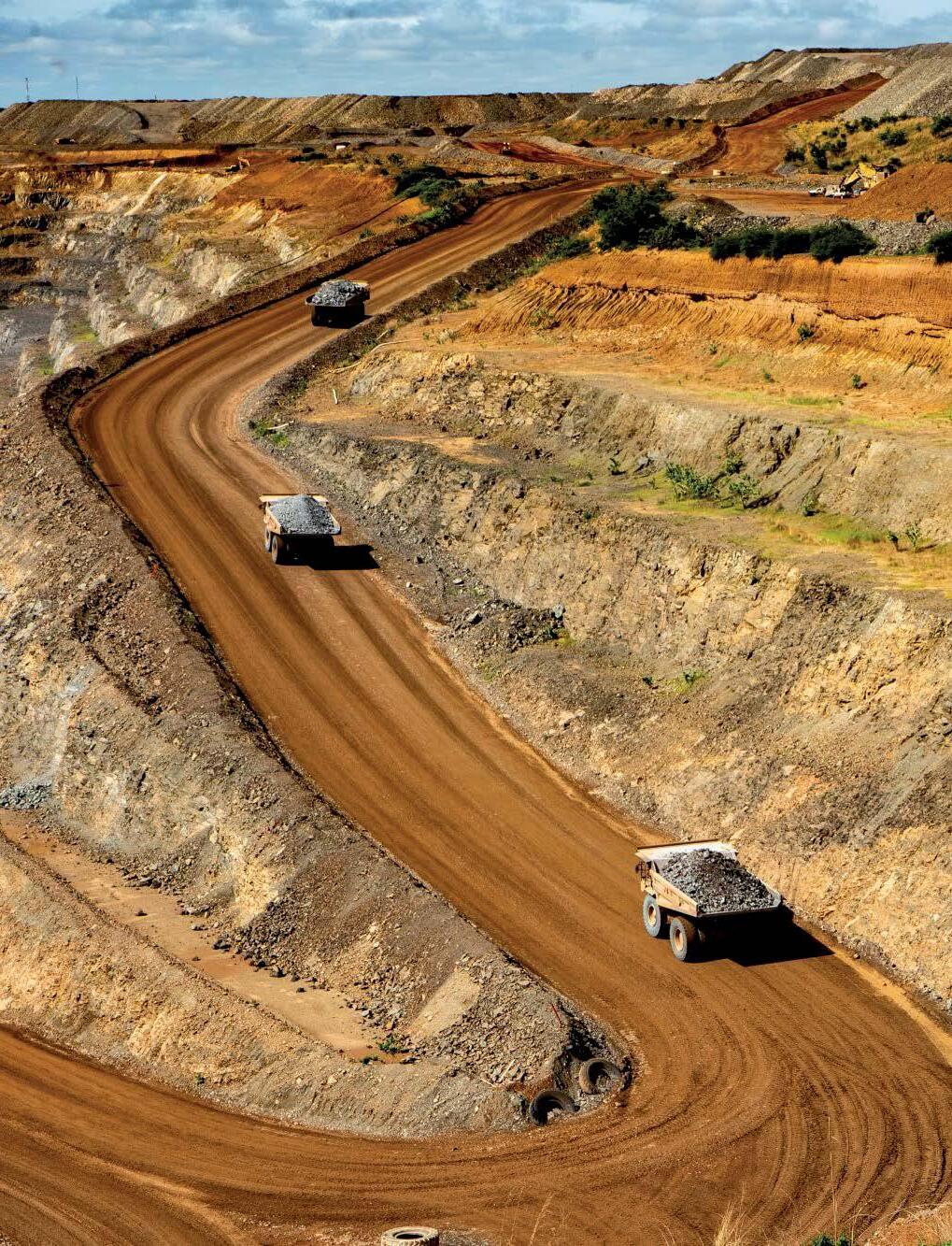

With a vision to be a responsible mining company, B2Gold Corp. is an international senior gold producer with vital gold mining operations across the world. Mali has long been a significant gold producer in Africa with both industrial and artisanal mining operations present across the country. Key mines in the country include the Yanfolila Gold Mine and the LouloGounkoto Complex which are operated by various gold mining companies. For B2Gold, its operations in Mali have centred around the Fekola Mine, which is a low-cost, world-class operation. Across its operations in Mali, B2Gold is committed to developing resources in a way that creates social economic development and so benefits local communities, stakeholders and the environment.
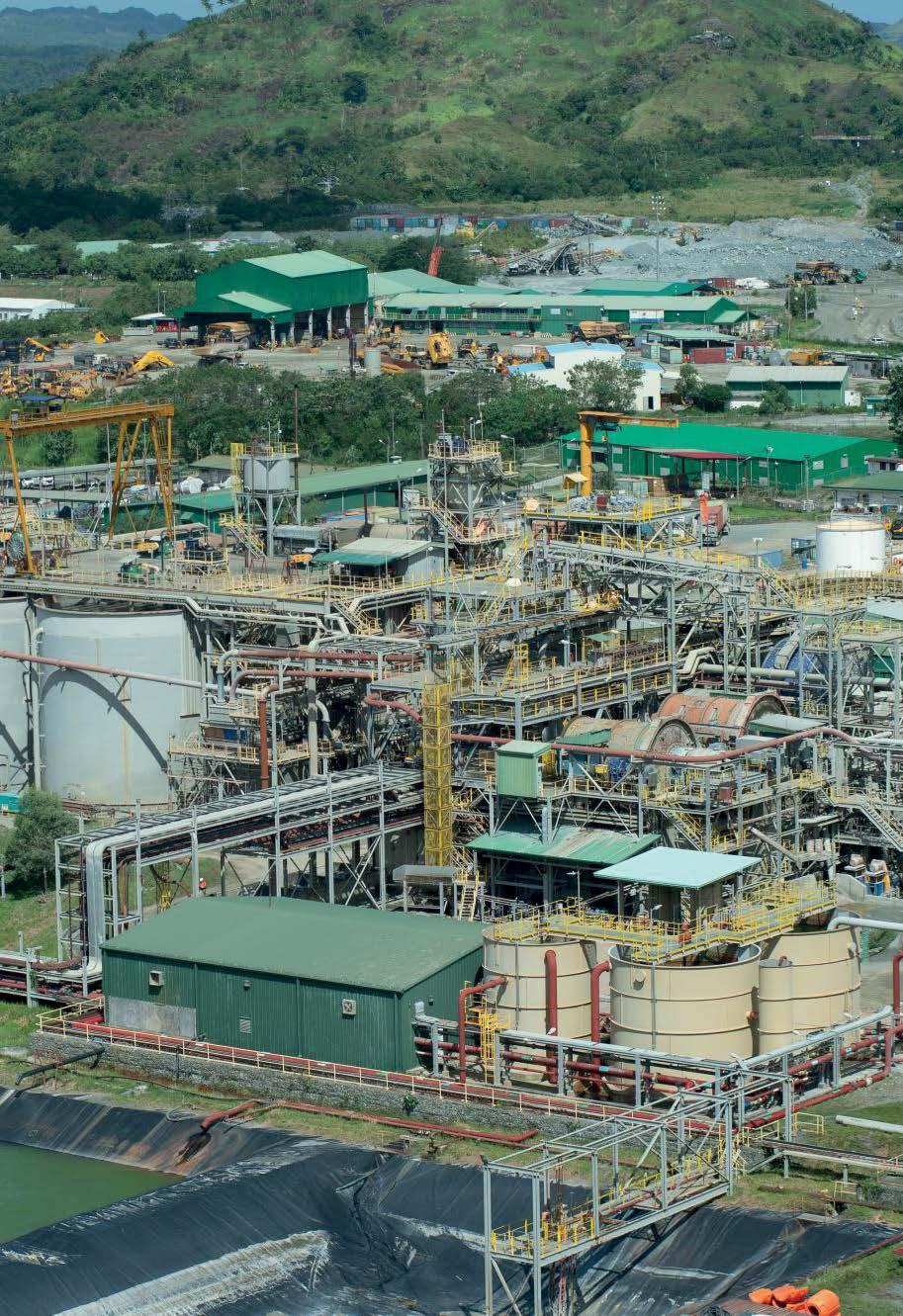
The Fekola Mine in Mali is an open-pit gold mine, located in the southwest of the country on the border near Senegal. B2Gold holds an 80% ownership in the mine, which has a processing throughput of 9.0 million tonnes per annum (Mtpa). The Fekola Complex comprises the Fekola Mine, Fekola Region and the Dandoko operations. The Fekola mine includes the Medinandi permit containing both the Fekola and Cardinal pits, and the Fekola underground operation; whilst the Fekola regional operation includes the Anaconda Area which spans the Bantako Menankoto and Bakolobi permits.
The history of the Fekola Mine under B2Gold extends back to 2014 when the company acquired the Fekola Mine through a merger with Papillion Resources Limited. Following the acquisition, early work activities on the site quickly began in 2015. By September 2017, B2Gold announced that it had completed the construction of the Fekola Mine ahead of schedule and commenced ore processing operations. The mine completed full commercial production just a few months later in November 2017. By April 2023, the Fekola Mine had produced its 3 millionth ounce of gold, just 5 years and 7 months after the construction of the mine was completed. This timely delivery of gold production exemplifies B2Gold’s commitment to delivering timely, costeffective and reliable mining operations.
Today, the entire Fekola Complex also includes a processing plant, which features a conventional flow sheet which consists of a single-stage primary crushing, a semiautogenous primary grinding mill with pebble crushing, and a secondary ball mill. These feed into a leach feed thickening with a thickener overflow treated through carbon in column circuit. Other operations include agitated leaching followed by carbon-inpulp absorption, elution, electrowinning, and gold recovery to doré, featuring cyanide destruction, tailing thickening, and a disposal circuit.
Across the facility, power is delivered through a combination of heavy fuel oil (HFO), diesel and solar power. However, as a company moving towards a more sustainable future, it has focused on the use of solar power in recent years. In 2021, B2Gold commissioned a new 30-megawatt alternating current (MWAC) solar power facility which was
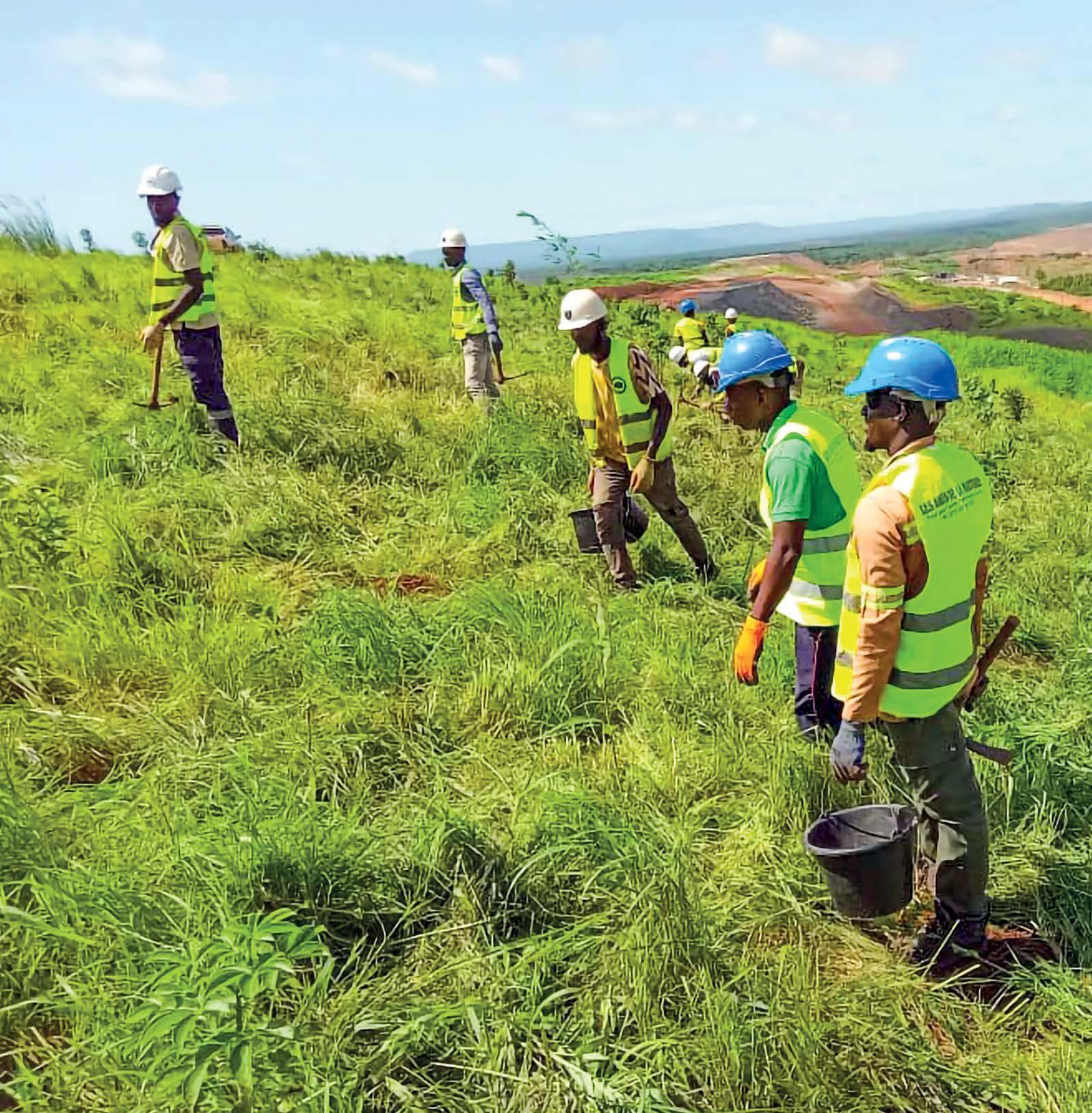
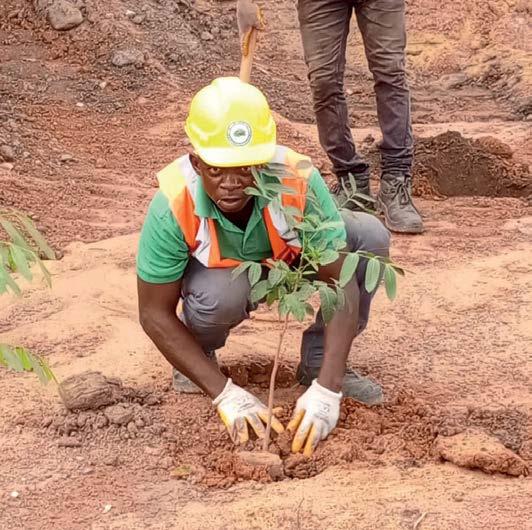


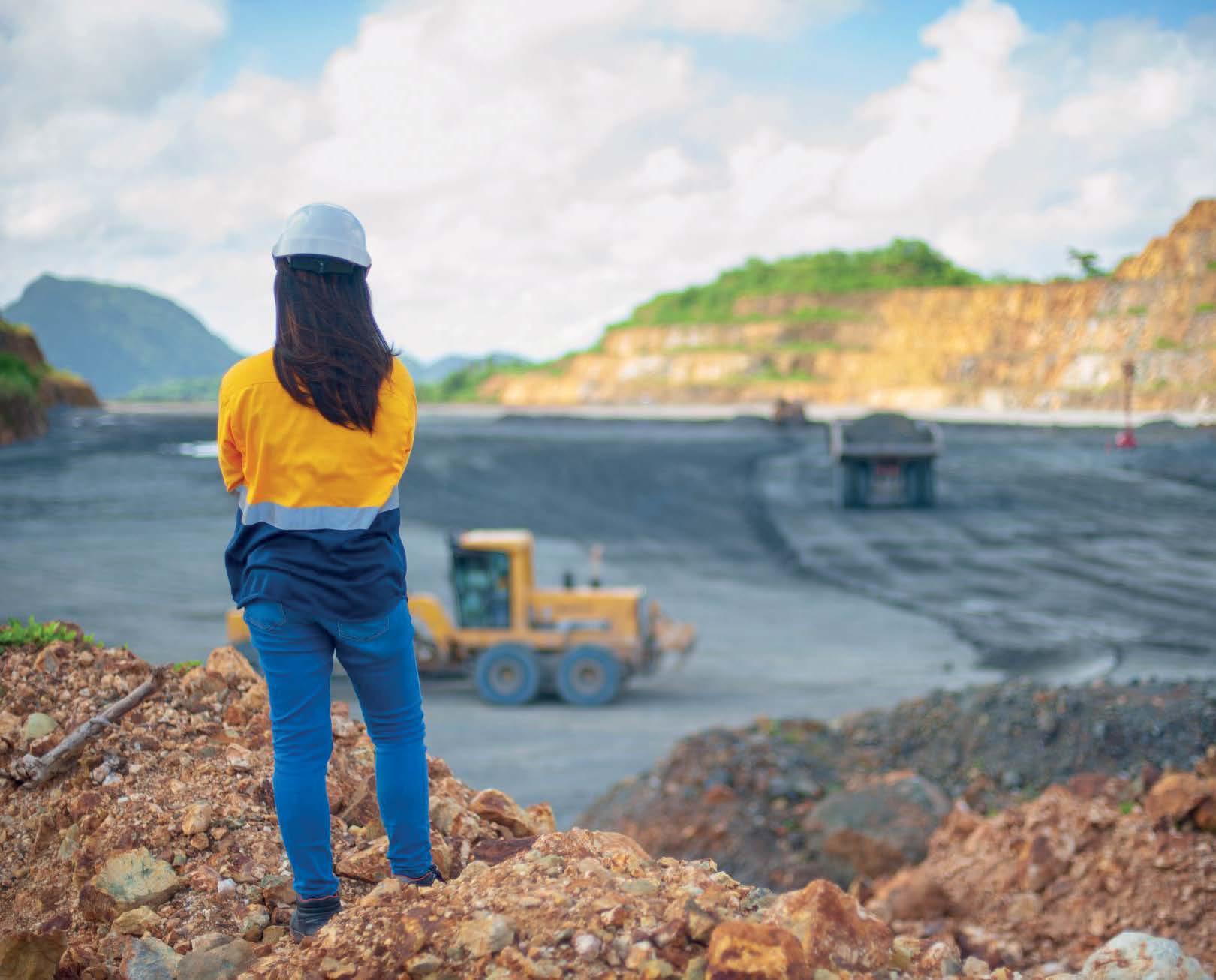
designed to help reduce greenhouse gas emissions by roughly 38,000 tonnes in 2022. Then, in 2023, further expansion to the solar power facility was announced with the expectation to reduce greenhouse gas emissions by a further 24,000 tonnes per year once completed.
In 2025, B2Gold announced that it had completed phase 2 of the expansion of the Fekola Solar Plant following the expansion plans laid out in 2023. Initial land clearing, road construction and physical equipment construction were quickly ramped up, completing the expansion phase in the 4th quarter of 2024, with the facility becoming fully operational earlier this year in January. The expansion includes the construction of 46,200 new solar panels, which increased the number of solar panels across the facility to a total of 142,912. The expansion thus will provide an additional 22 megawatts (MW) of solar capacity (52 MW total capacity) and 12.6 Megawatthours (MWh) of battery capacity. This expansion is expected to reduce the mine’s annual emissions of heavy fuel oil by an estimated 20 million litres and will supply approximately 30% of the site’s total
electricity demand. With such a capacity, the Fekola Solar Plant is considered to be one of the largest off-grid solar/HFO hybrid power plants in the world.
Ken Jones, B2Gold’s Director of Sustainability announced in the press release announcing the completion of the second phase of the Fekola Solar Plant in March, that, “the expansion of the Fekola Solar Plant is a significant initiative in support of B2Gold’s emission reduction target. The expanded facility will allow the Fekola site team to turn off the HFO plant for a portion of the day during times of sufficient solar radiation, a tremendous achievement for B2Gold and a testament to our commitment to implementing renewable energy solutions”. Jones’ comments highlight B2Gold’s mission to be a responsible mining company that is committed to meeting vital sustainability goals to protect the environment and people surrounding its operations. As B2Gold looks towards the future, this focus on developing its new and existing renewable energy sources to power its operations is vital to its current development. In the hope of decarbonizing its operations, B2Gold hopes to actively mitigate
climate risks and achieve the company’s target of a 30% reduction in Scope 1 and 2 greenhouse gas emissions by 2030, compared to its baseline recording in 2021.
In 2024, B2Gold allocated a budget of $10 million for exploration operations in Mali, with the aim of focusing on the discovery of additional high-grade sulphide mineralization across the Fekola Complex. This expansion was focused on supplementing feed to the Fekola mill. In addition, the exploration began work on the FNE target, north of the existing Fekola pit. The target aimed to add easily accessible resources close to the existing Fekola infrastructure, and a total of 20,000 million of diamond and reverse circulation drilling was planned for 2024. By the end of 2024, a total of $11 million was incurred on the Mali exploration. For 2025, B2Gold has allocated $9 million for ongoing expansion with the primary focus
covering the discovery of additional high-grade, sulphide mineralization across the Fekola Complex to supplement feed to the Fekola Mill. Overall, a total of 16,000m of diamond and reverse circulation drilling is planned for Mali in 2025.
Across B2Gold’s operation in Mali, there is a keen focus on developing the gold deposits in the most environmentally conscious way possible. The development of the Fekola Solar Plant, B2Gold can achieve lucrative mining operations, whilst mitigating its impact on the environment by increasing the usage of renewable energy and so reducing the overall greenhouse gas emissions of its operations. This commitment to developing resources in a way that is protective of people, and the planet is what has allowed B2Gold to deliver such vital results for the Fekola Mine in Mali.

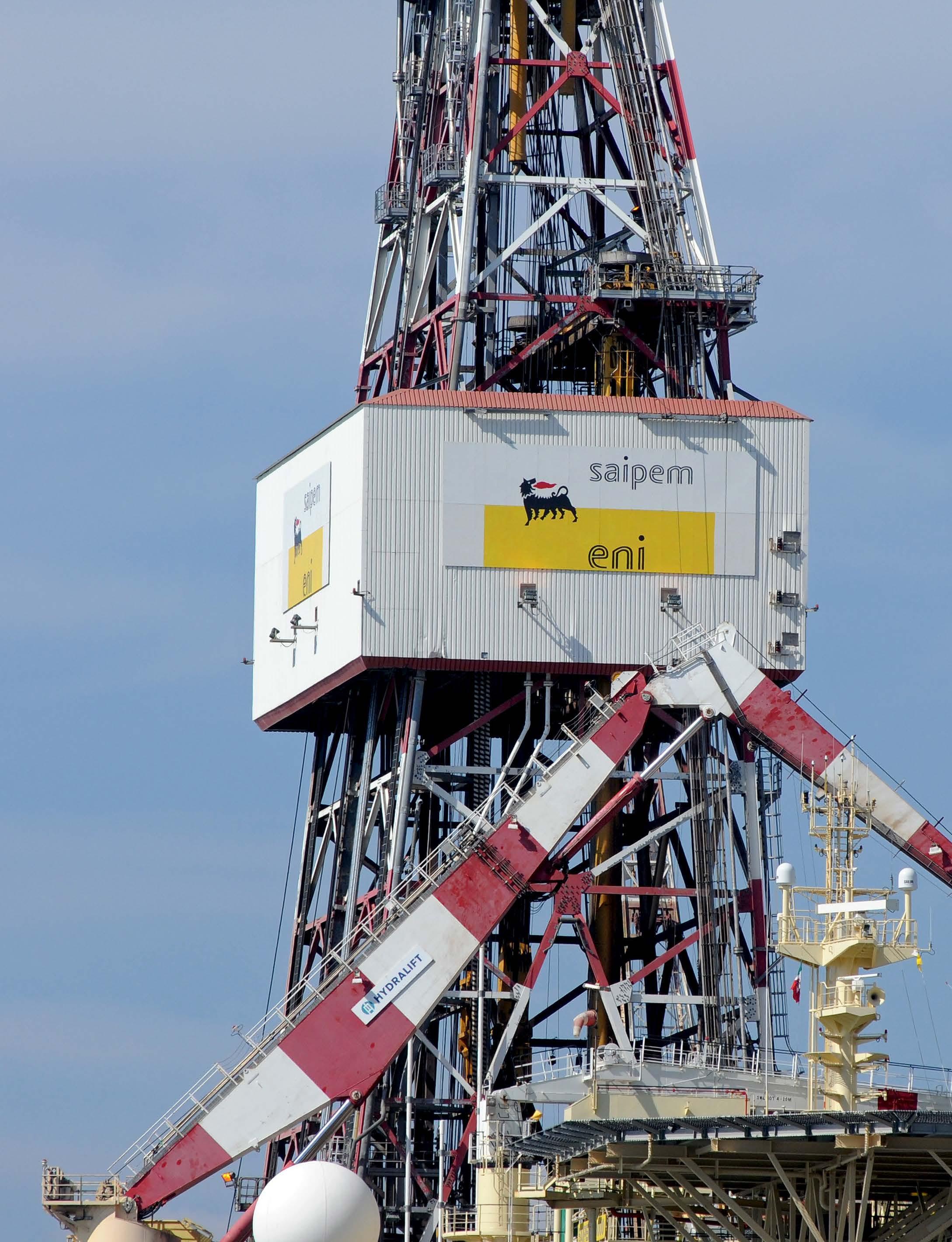


On a mission to deliver engineering operations to build a more sustainable future, Saipem is a leader in the design, construction and operation of a range of complex infrastructures and plant facilities for the energy sector. Saipem is passionate about overcoming engineering challenges to deliver essential solutions that help move its customers’ operations, and the world to a more sustainable future. Therefore, across its operations, technical innovation remains at the forefront, and it is through this that the company can deliver the most efficient and sustainable engineering solutions possible.
Saipem has been in operation since 1957 when the company delivered its first offshore platform as an independent company in Scarabeo. From this very first platform, Saipem exemplified its expertise in construction and engineering, and it is with this foundation that the company continues to develop today. Over the last 65 years, Saipem has only continued to build its portfolio of engineering and construction projects and now has played a vital role in many projects across the globe. Today, Saipem is a global leader in engineering with operations with its business broken down into 6 central business lines. These business lines include drilling, asset-based services, energy carriers, offshore wind, suitable infrastructure, robotics and industrialised solutions. Throughout its portfolio, Saipem works across every stage of project development, taking these operations from process and structural engineering, all the way to procurement and construction. Then, once constructed, Saipem offers maintenance, modification, and daily operations services which help to keep its customers’ projects running smoothly. Beyond the construction and delivery of such projects, Saipem also provides decommissioning services across plants and
platforms when they are no longer in use. By staying so close to every project, Saipem can ensure that it is delivering the maximum economic return of offshore field development whilst maintaining high levels of safety, reliability and performance.
Saipem employs over 30,000 employees spanning more than 50 countries of operation. Across the world, the company’s operations are often split into various region and country-wide divisions, for example in Singapore where Saipem’s operations are run by Saipem Singapore Pte Ltd. Saipem has been operating in Singapore since 1988 providing the company’s essential engineering services across the country and the surrounding region. Here, the company offer a vast array of services and solutions that help its customers in Southeast Asia design, procure, engineer and construct their energy projects.
Projects in Singapore include the expansion of the Singapore LNG (liquified natural gas) Terminal, which spans 40 hectares on the southernmost tip of Jurong Island. The terminal is vital to Singapore’s energy security and has been operating since

2013. The facility currently covers two jetties, three 180,000m3 storage tanks, and a further 260,000m3 tank. The terminal is currently responsible for close to half of Singapore’s total natural gas demand for power generation and so its expansion remains vital to supporting the country’s energy development. Saipem was awarded the initial construction agreement and has continued to play a vital role



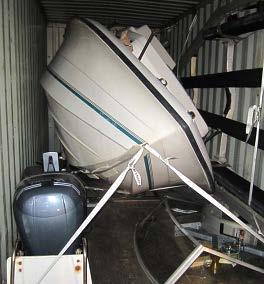


If you work on an FPSO, petrochemical plants, or any offshore or onshore installation where hydrocarbons flow and temperatures soar, you’ve likely seen our solutions in action.
At Best Technology Pte Ltd, we deliver Ancloz Engineering’s highperformance removable jacketing system - trusted for insulation, passivefire protection, and acoustic insulation on ESDVs, piping, valves, and more.
Our jackets are engineered for rapid removal and reinstallation, giving you fast access for maintenance without sacrificing safety.
Tested to withstand jet fires and hydrocarbon pool fires for up to 120 minutes, and certified by Lloyd’s Register, DNV, and ABS, Ancloz jackets protect your people, your plant, and your uptime.
Removable by design, our jackets allow rapid maintenance access - without ever compromising protection. Unlike traditional fireproofing, Ancloz jackets are engineered for fast installation and removal, reducing downtime and maintenance costs.
With over a decade of field-proven experience, we bring world-class solutions to your site - delivered promptly and backed by engineering expertise.
Discover why leading operators trust Ancloz. Contact Best Technology today for a consultation or technical demonstration.
T: +65 6747 5688 E: besttech@besttech.com.sg besttech.com.sg
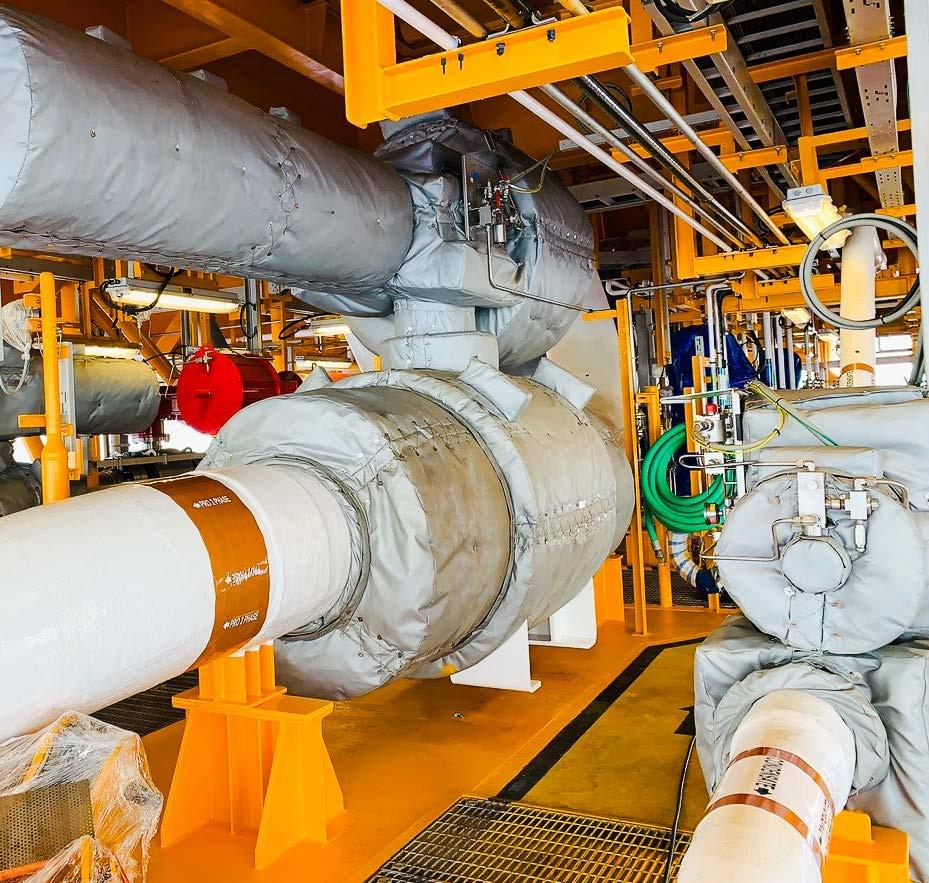
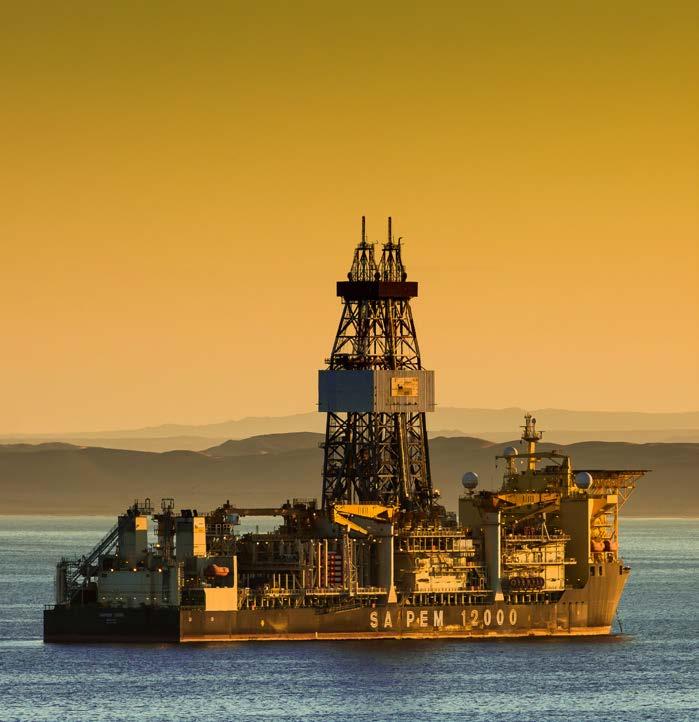
of energy for Nigeria, it highlights the company’s role as a leader in the global engineering service sector providing the essential design, construction and operations services to support energy developments on an international scale.
Across Saipem’s operations in Singapore, there is a real focus on enhancing the region’s energy sector through its vital engineering services. From its role in the expansion of Singapore LNG to working across the Peninsular Gas Utilisation pipeline development, the company continues to invest in Singapore’s energy sector, whilst expanding its portfolio in delivering innovative, sustainable and reliable energy infrastructures across the globe. With the company’s global portfolio only continuing to grow, we look forward to seeing how Saipem will continue to expand its role across Singapore’s energy sector to help deliver vital energy resources across the country now and for many years to come.


in signing further contracts for the continued expansion of the SLNG Terminal. Saipem’s work on the fourth phase of the project expansion included engineering, procurement and construction
Another key energy development serving Singapore today is the Peninsula Gas Utilisation (PGU), which is located offshore the west coast of the Malaysia Peninsular but serves end users in both Malaysia and Singapore. The pipeline project has undergone many development stages, with Saipem appointed the main contractor in 1991 for Phase III of the development. Phase III was completed by Saipem in 1998, and saw the pipeline extended northwards along Malaysia’s west coast from Meru, Klang to Arau, Perlis. The entire pipeline spans 184km and is focused on delivering natural gas from offshore platforms to customers in Malaysia and Singapore. One of the major feats of the development was the use of PASSO Welding, which is an innovative system that utilises the automatic welding of pipes. Saipem’s role as the main contract for the third phase of the development highlights

in Nigeria. The unit was designed by Saipem and fabricated in the Singapore region, focusing its design on delivering a unit that can produce 210,000 barrels per day (bpd) of oil and 540,000 million standard cubic feet per day (mmscfd) of gas, whilst also delivering significant water and gas reinjection capacities. In addition to its production, it aims to store 2,200,000 barrels of oil. The design and construction of the FPSO included 18 modules that would come together to deliver a topside weight of 31,000 tons. Saipem will continue to oversee the management of the project until the offshore commissioning phase. With Saipem being awarded such a vital contract to help support the delivery

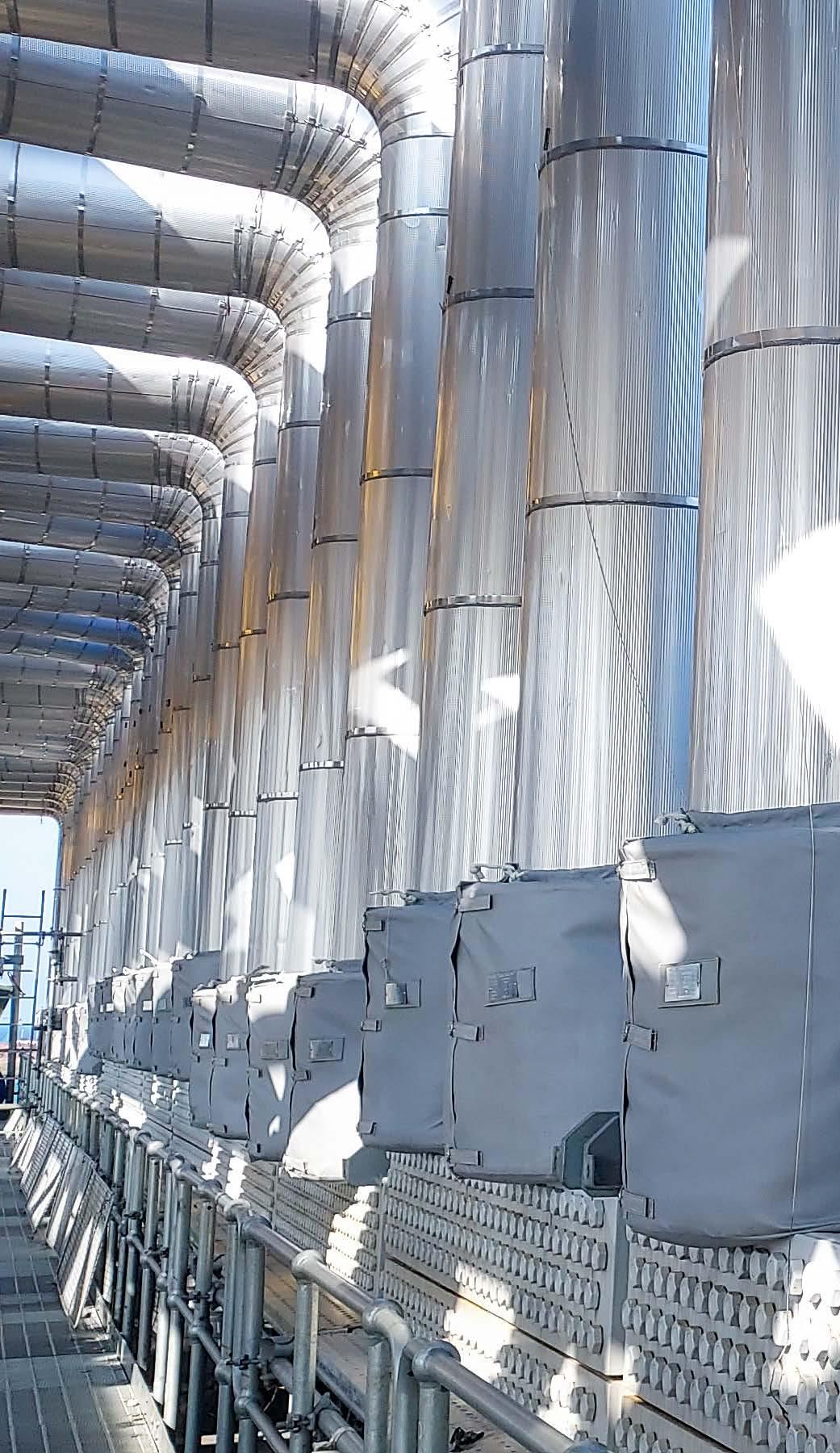
Arm your critical assets with Ancloz Armourflex
removable Passive Fire Protection (PFP)
Certified by DNV, ABS and Lloyd’s Register.
Engineered for rapid deployment.
No tools, no delays.
Rapid access. Zero downtime.
Trusted by the 30+ FPSOs worldwide





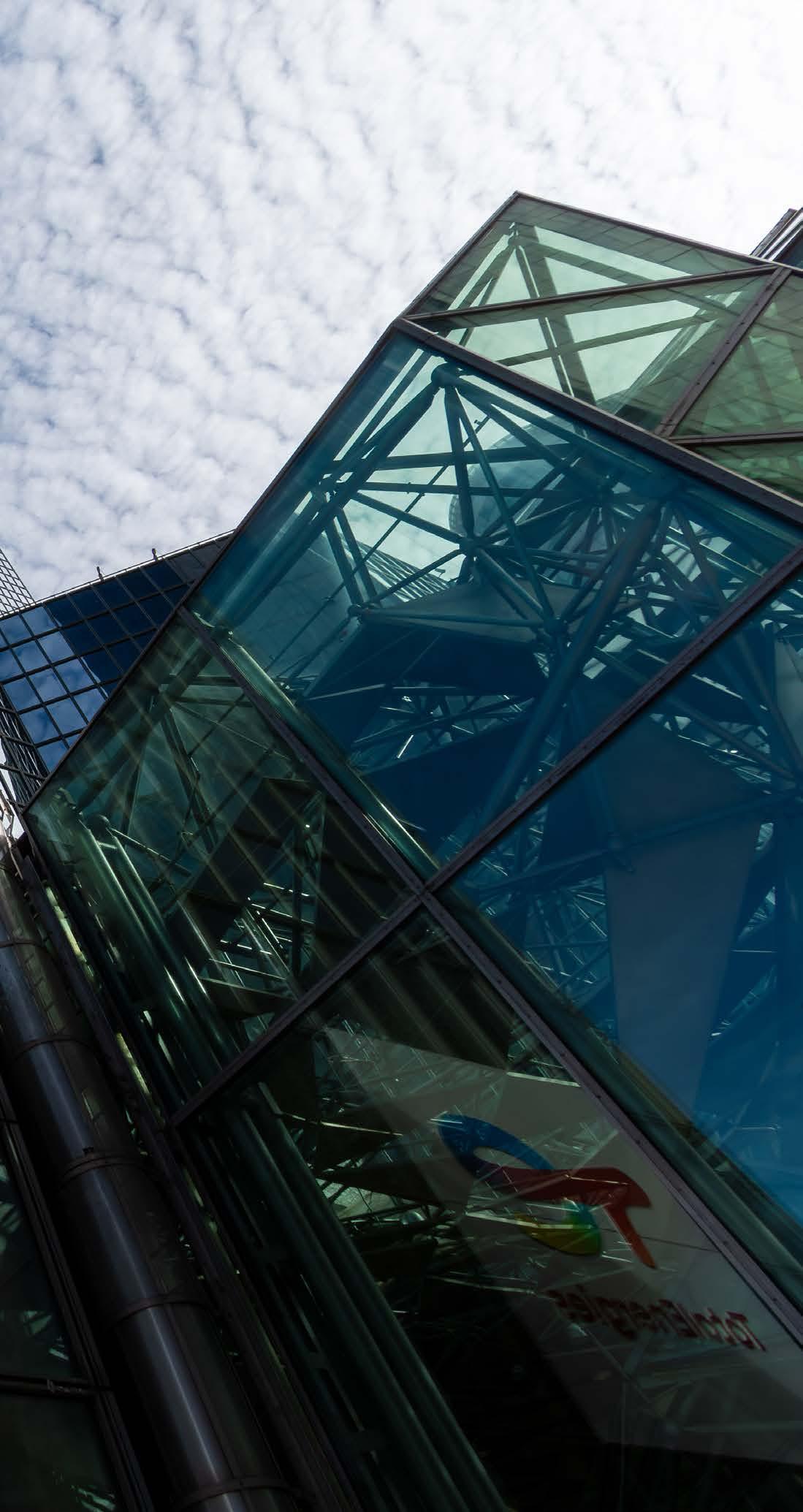
Founded on a commitment to delivering energy more sustainably, TotalEnergies is a globally integrated energy company where the planet and its people are at the heart of every strategy, project, and operation it conducts. The company has a long history across the globe and is now present in more than 120 countries worldwide. Across its international network, TotalEnergies works to make energy delivery more reliable, affordable, and sustainable. However, its current offshore exploration and development projects in Suriname mark a vital step in TotalEnergies’ leading energy operations within South America, where the company already has multiple developments, including developments in the neighbouring countries of Brazil and French Guiana.
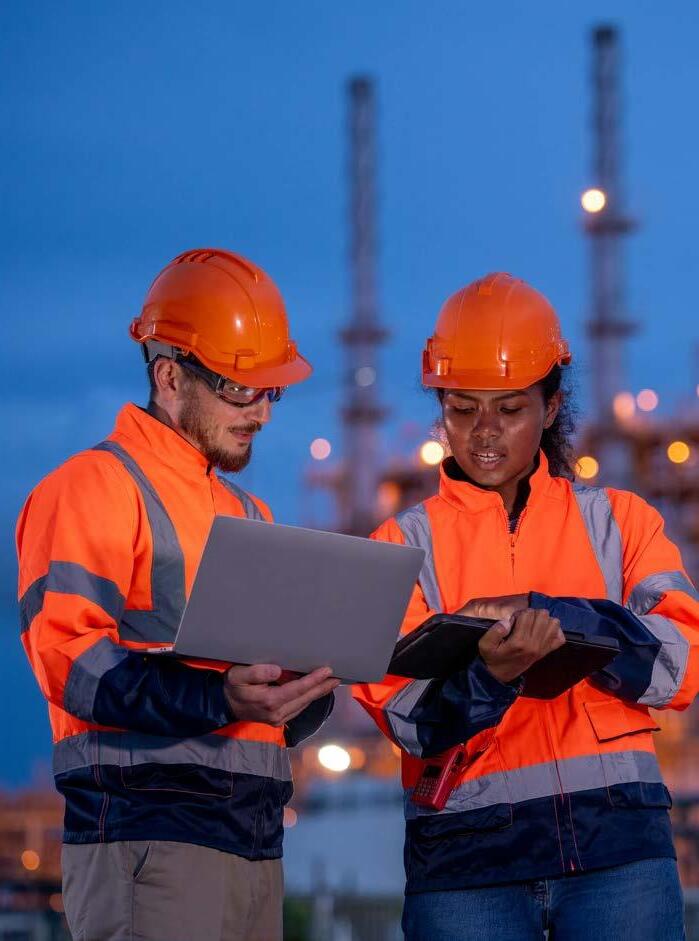
TotalEnergies has been present in Suriname for around 5 years, with 5 significant discoveries in the Block 58 offshore area. Block 58 is part of a partnership with APA Corporation, with both companies owning a 50% interest in the development. In 2023, TotalEnergies announced a significant oil project in Block 58, as well as a development study. The area includes the Sapakara South and Krabdagu oil fields, which have a confirmed combined estimated recoverable resource of close to 750 million barrels for the 2 fields. The GranMorgu oil project will be developed in Block 58 offshore Suriname and will deliver new wells at depths of between 100 and 100 metres across the Block. Oil will be produced through this system of subsea wells, which will ultimately be connected to an FPSO (Floating Production Storage and Offloading Unit) also located off the Suriname Coast. Once completed, the project is expected to have an oil production capacity of 200,000 barrels of oil per day (b/d) and contribute significantly to the development of oil across Suriname. Thus, for TotalEnergies, the project will mark a significant milestone for the company’s development of oil and gas resources in Suriname.
In October 2024, TotalEnergies and Saatsolie Maatschappij Suriname N.V. (Staatsolie) met in Paramaribo to announce the Final Investment Decision (FID) for the GranMorgu development located within Block 58. The announcement outlined how the GranMorgu project will develop the Sapakara and Krabdagu oil discoveries to build upon its successful exploration and appraisal period in 2023. The GranMorgu project, with a total investment of $10.5 billion, will be a key driver for investment on a local scale, contributing to local employment and the continued economic development of Suriname. For this reason, Paramaribo, the country’s capital, will be the centre for administrative, operations support and logistical activities for the entire project. In fact, for local companies, logistics, maintenance of the installation, as well as the subsea and FPSO operation, will see between $11.5 billion invested in local content, creating 6,000 direct, indirect and induced jobs across Suriname. Once completed, production is expected to start up in 2028.
The project is currently held in a 50% equal partnership between TotalEnergies and APA Corporation. However, following the GranMorgu project announcement, Staatsolie (Suriname’s state-owned oil company) outlined its interest in
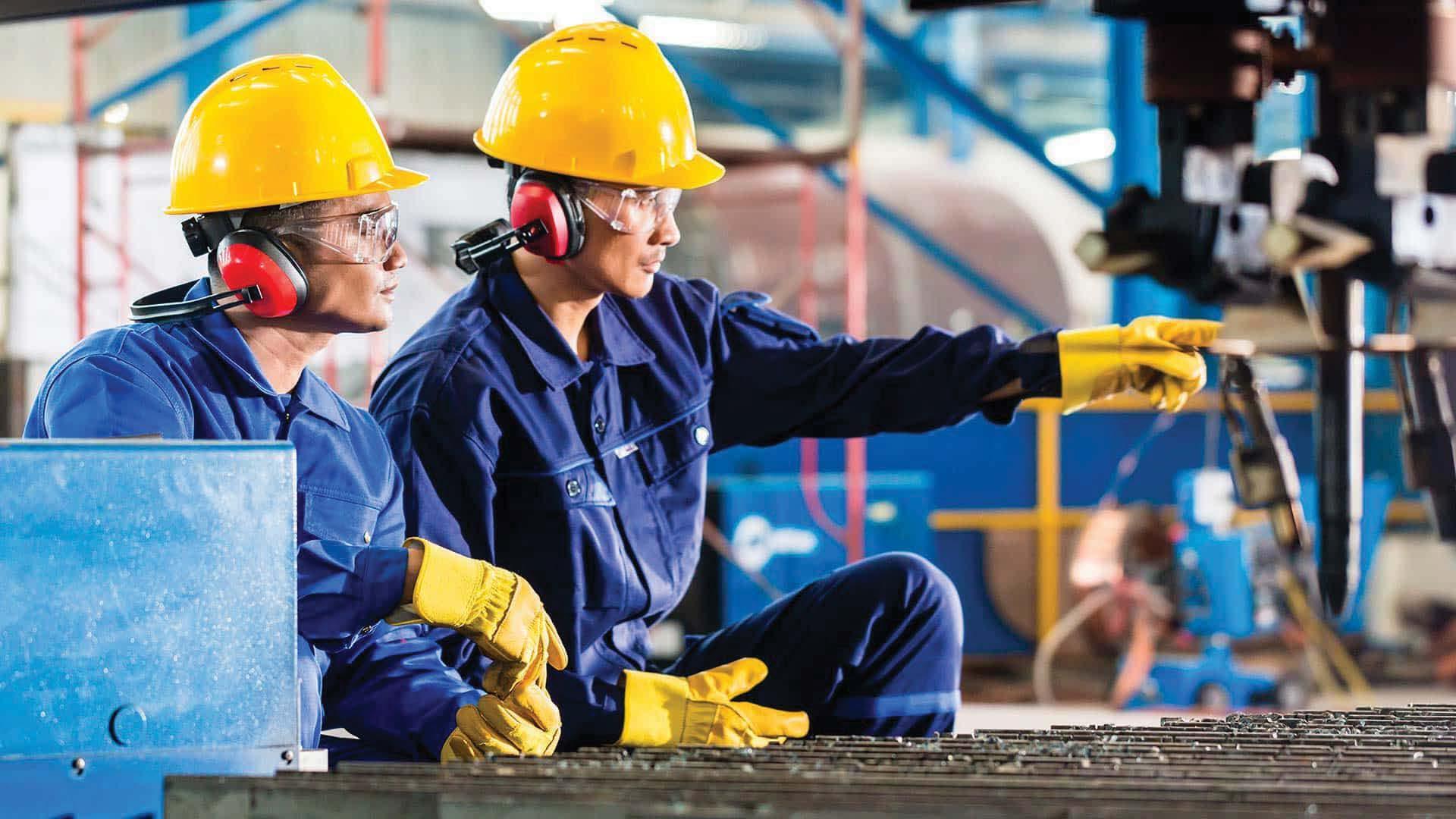









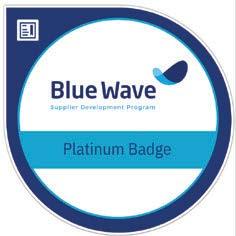
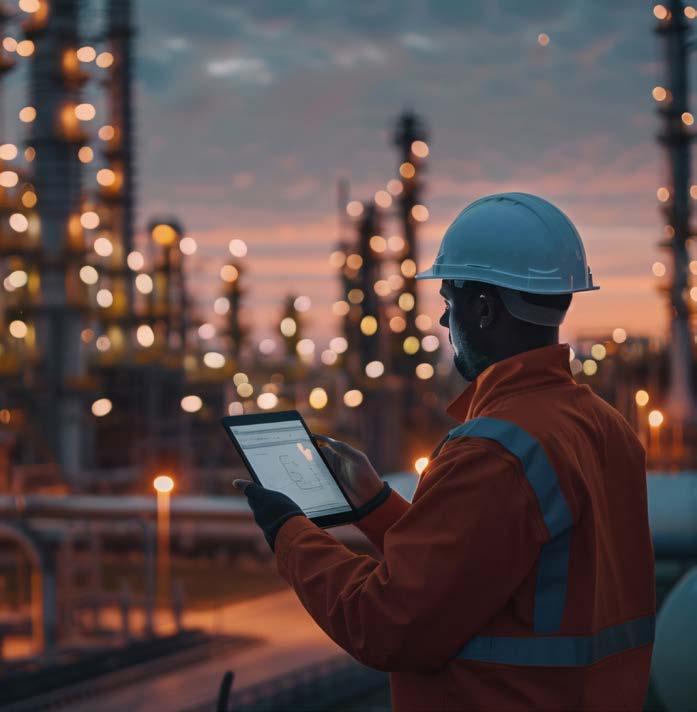
exercising its option to enter the development project at 20% interest, making contributions towards the project following the FID. Staatsolie will finalise its interest by June 2025.
One of the key sustainable aspects of the GranMorgu development in Block 58 is that it will leverage technology to minimise greenhouse gas
emissions. The project aims to specifically cut Scope 1 and Scope 2 emissions from each barrel of oil produced. A key step in achieving this will be the GranMorgu FPSO, which will be an all-electric vessel with zero routine flaring and full reinjection of associated gas into the reservoirs. The FPSO is designed to accommodate future tie-back opportunities that would extend the duration of its production plateau. Additionally, the FPSO will have a Waste Heat Recovery unit and water-cooling system, which will optimise the power usage across the vessel and improve its overall efficiency. To help further cut down on emissions, the project aims to install a permanent methane detection and monitoring system that will rely on a network of sensors to enhance the unit’s overall sustainability by reducing methane release.
The construction of the FPSO vessel for the GranMorgu development has been contracted to Technip Energies, who will build and install the vessel, whilst SBM Offshore has been contracted to operate the platform under an operations and maintenance agreement. Technip Energies will also


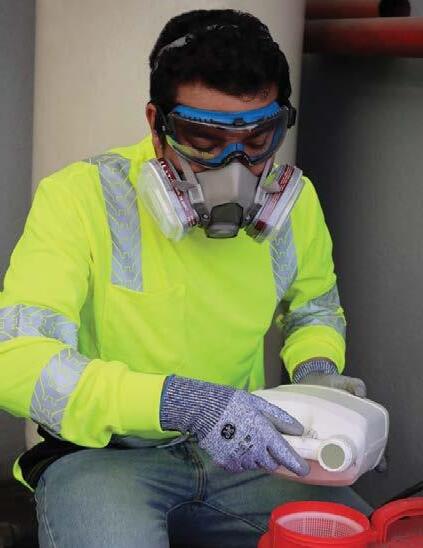





















Discover a new way of living in the heart of Paramaribo — where tropical luxury meets eco-smart design. With 119 modern, sustainable units, this is your exclusive chance to rent a future-forward apartment that blends comfort, style, and cutting-edge amenities.
• 1 & 2-bedroom eco-luxury units
• Full kitchen, smart tech, in-room jacuzzi
• Access to all facilities to the Torarica Group: 3 restaurants, pools, gym, spa 24/7 security
• Tailored corporate packages & long-stay rates

This is more than a stay — it’s a lifestyle.
Whether you're relocating, or planning a long-term business stay, Torarica Premium Apartments offer seamless comfort with all the services of a top-tier resort.
• Private viewing starts October 2026
• Early booking = best units + exclusive rates
• Corporate-friendly flexibility: from invoicing to multiple-unit plans


• Scan the QR Code to register for the early bookings and special rates
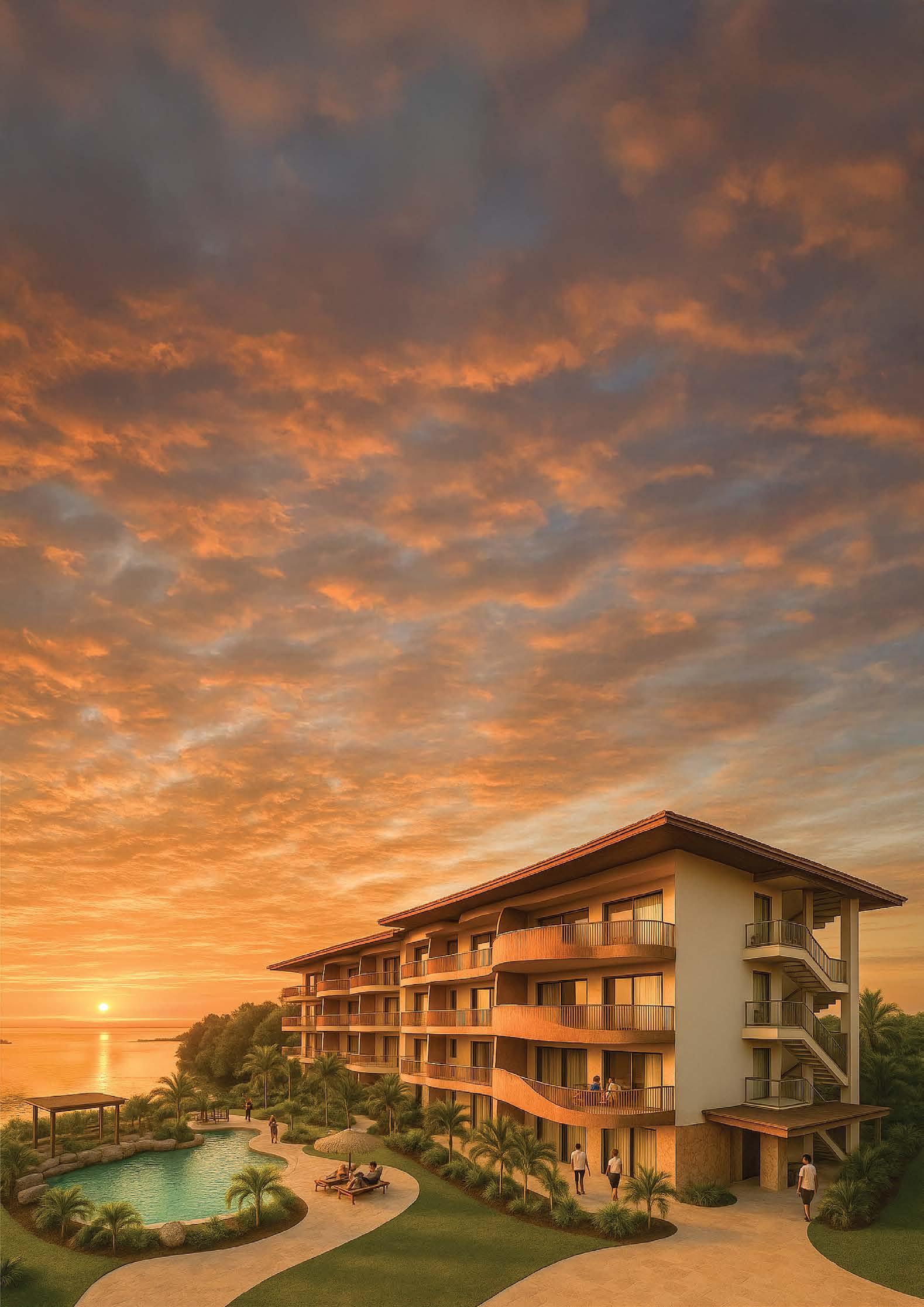
Disclaimer: This is a 3D impression for illustrative purposes only and does not depict the actual product or final outcome.
In addition to the Block 58 developments, TotalEnergies has previously signed a sharing contract for 2 shallow offshore blocks. These blocks, 6 and 8, have been awarded to TotalEnergies following the Suriname Shallow Offshore Bid Round 2021/2021, where TotalEnergies took on the operation of the two blocks with 40% interest. The operation is in partnership with Qatar Energy, which has a 20% interest, and Paradise Oil Company (POC), a subsidiary of Staatsolie, which also has a 40% interest in the development. Blocks 6 and 8 are located towards the south of Suriname, not far from the border to Guyana, and directly adjacent to Block 58.
help deliver the all-electric drive platform, which will help the vessel deliver its reduced emissions, with zero routine flaring and full reinjection of associated gas into the reservoirs. A final contract has been awarded to Saipem, which will conduct the EPCI scope for subsea umbilicals, risers and flowlines. Its work will span the delivery of 100km of 10-12 inch subsea production flowlines and 90km of 8-12 inch water and gas injection, as well as the transport and installation of the flexible risers, umbilicals, and associated structures at depths ranging from 100 to 1,100 metres. These vital contracts will help TotalEnergies to deliver its sustainabl e mission for the GranMorgu development block.
The entire project at Block 58 will deliver significant oil developments for Suriname and add to TotalEnergies’ network across South America. In the FID announcement press release, Patrick Pouyanné, Chairman and CEO of TotalEnergies, outlined that “Building on TotalEnergies’ pioneering spirit, this landmark project marks the first offshore development in the country and capitalises on our extensive expertise in deep offshore innovation. Launched only a year after the end of appraisal,
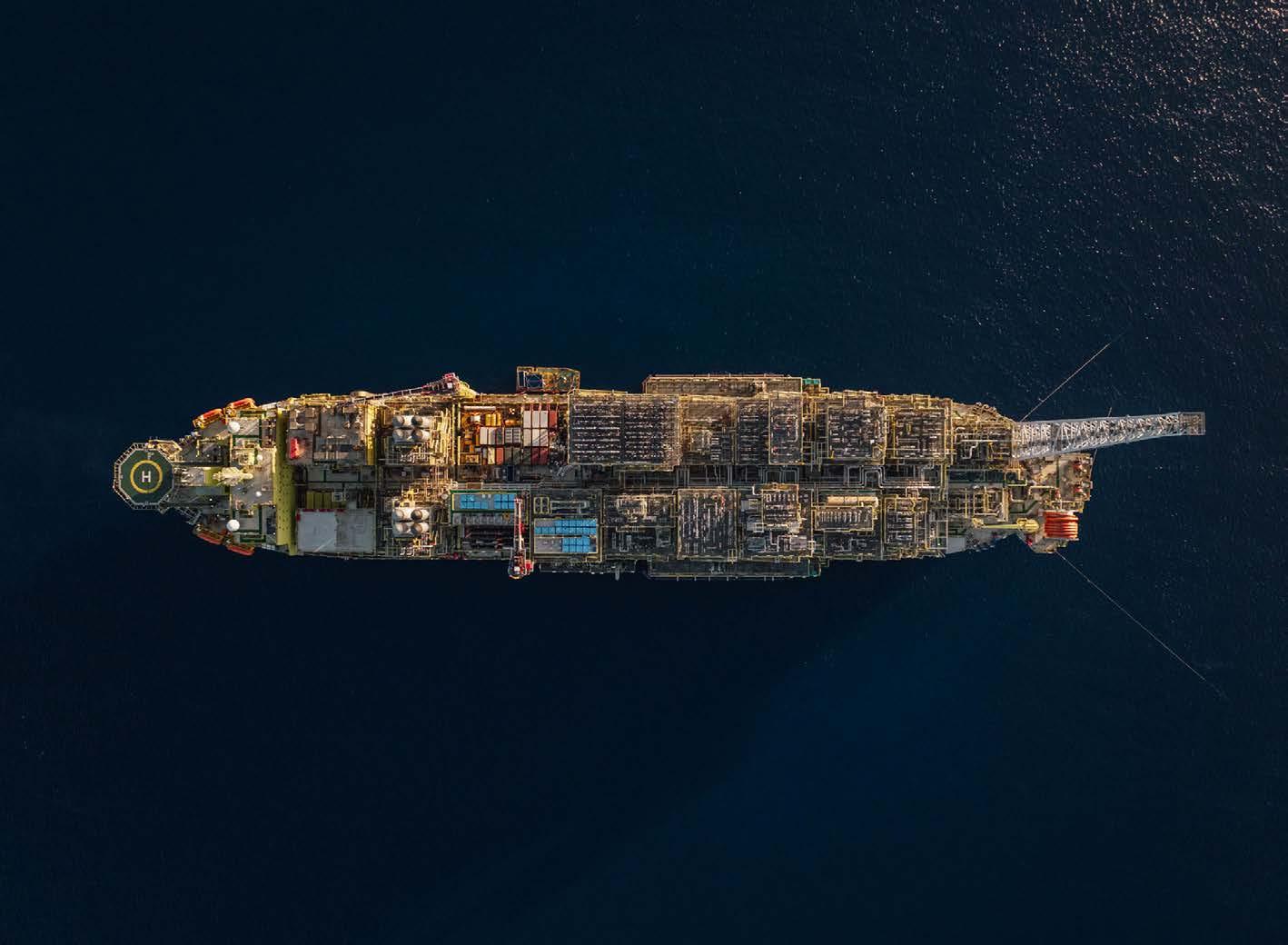
Integrated end-to-end journey management from point of origin to destination ensuring compliance to all logistics, personnel and legal requirements are met in all transit locations to end destination.
Port Agency Solutions - Port call management, crew logistics and husbandry services.
Project Solutions - End-to-end project management of supply base, dry docking, vessel activation and engineering services. Strategic procurement and survey & inspection.
Turnkey Solutions - Dedicated project management team. Global operations oversight with local delivery and expertise.
Permitting Support - Consultancy to provide an overview of government and statutory formalities. Obtain approval and permissions from relevant authorities and third parties for marine operations.
Supply Chain Solutions - Procurement solutions, providing vendor and risk management, door 2 deck logistics and tail-spend management.


GranMorgu fits with our strategy to accelerate timeto-market and develop low-cost and low-emission oil projects.” Pouyanné’s comments here highlight the vast role the project will play within Suriname and the company’s role in delivering a project that meets its central mission to make affordable yet sustainable energy more widely available across the world.
The GranMorgu project marks the vital beginning of a long and important era for Suriname’s energy sector. The project will deliver significant growth for the country, and so the project will be essential for delivering major economic benefits for the local economy through the labour, goods and services from local content that will be required to construct, operate and maintain the project to deliver consistent oil for the country. Oil production is expected to begin from 2028, where the majority of the project’s income will be delivered to the State of Suriname in the form of royalties, profit oil and taxes. The national oil company and TotalEnergies plan to continue to work closely together, and throughout the project will focus on attracting as many local goods and services as possible.
D.S. Belcon
D.S. Belcon is strategically positioned within the Southern Energy Triangle, operating in Trinidad, Suriname, and Guyana, offering integrated solutions excellence to the shipping industry and oil and gas sector.
Considering TotalEnergies’ recent commitment to the GranMorgu project, as a Port Agency and Logistics Company, D.S. Belcon (Suriname)
N.V. stands ready to support this monumental initiative with comprehensive integrated logistics solutions. As Suriname embarks on this historic journey to develop the Sapakara and Krabdagu fields in Block 58, the need for reliable, efficient, and integrated logistics has never been more critical.
With a deep understanding of Suriname’s operational landscape, D.S. Belcon (Suriname)
N.V’s commitment to excellence, safety, and sustainability remains at the forefront.
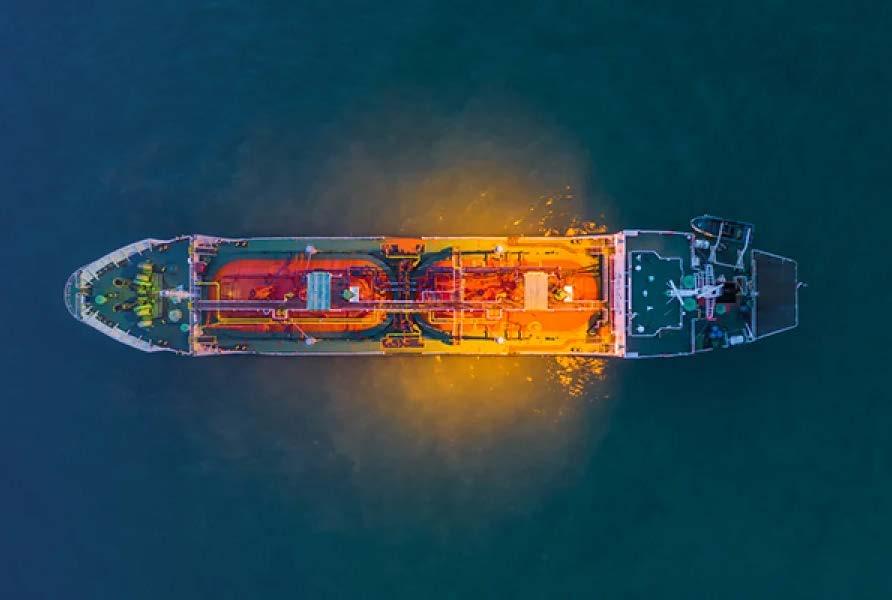

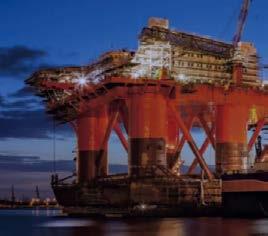

With the rapid emergence of the oil and gas industry in Suriname, the Dr. Jules Sedney Port of Paramaribo has been proactively advancing its facilities to meet the demands of the future. This commitment aligns with our slogan: “Accommodating Our Future.”
As part of our preparedness, we have successfully renewed our ISO 9001:2015, ISO 14001:2015, and ISO 45001:2018 certifications, along with our ISPS certification, reinforcing our dedication to quality, environmental responsibility, and occupational health safety and well-being of our dedicated personnel.
Moving forward, we continue to strengthen our internal organization while forging strategic partnerships that enhance the value of our services and position us as a key player in the region.
With Suriname’s economy on the rise and the increasing need for port expansion, we stand as the premier choice for those seeking to invest in a port with a robust, future-ready system of control and ample room for growth. At present a new construction project for the extension of the qua to the south has commenced with even more expansion possibilities.

Section
Quay length
Draft at LWS
Deck load
Storage area
Additional
Dr. Jules Sedney
Terminal (A)
660m
7,0 – 7,5m
4,5 – 10 T/m² 20ha
119 reefer plugs
Facilities available and to be established
Heavy load quays and aprons up to 20 T/m²
Berthing spaces
Open and sheltered storage area
Medical first aid facility
Chemical storage area
Technical & mechanical support facility
Logistic support facility
Training centre – in partnership with Port Of Antwerp Bruges International
New Shore Base Area (B) 140m + 120m + 97m 7,0m
20, 10, 5 T/m²
12 + 0,8 + 2ha
Oil jetty for bunker ops
Potential Expansion Area (C)
600m
7,0m
Subjected to requirements 47ha
Multifunctional options
Services by Havenbeheer and 3rd parties
24/7 ISPS security
Logistic support
Hot works, Technical and Mechanical Support
Stevedoring & Lifting works
Waste management
Bunkering services (Fuel & Oils)
Sludge and waste water removal
Fresh water supply
Variety of supplies
Ship chandling
Husbandry

www.havenbeheer.com
Discover the gateway to Suriname’s thriving trade and commerce with N.V. Havenbeheer Suriname, the nation’s premier port management company. With over 50 years of expertise, we ensure the safe, efficient, and effective operation of Suriname’s National Port and Transport System, fostering international trade and logistics.
N.V. Havenbeheer Suriname, is committed to sustainable economic growth through innovative green practices. Our vision is to become your reliable carbon-neutral logistics partner, harmonizing prosperity with environmental stewardship.







The Senior Vice President of Exploration for TotalEnergies, Kevin McLachlan, states in the press release for the Block 6 and 8 development that “TotalEnergies is pleased to expand its operatorship position in Suriname, a world-class emerging basin, exploring for low technical costs and low GHG emission oil resources”. He continues, “This new milestone further strengthens our strategic international partnership with Qatar Energy, marking its first entry to Suriname”. As we can see from McLachlan’s comments, TotalEnergies’ span across Suriname has established it as a key player in the country’s energy industry. With significant developments in Block 58 and Blocks 6 and 8, TotalEnergies continues working with crucial partners and players across the global industry to bring sustained economic growth and a wider sphere of energy potential to the region.
Outside of Suriname, TotalEnergies’ operations across South America remain vast. One of the largest operations in South America is in Brazil, where the company has been operating for close to 50 years. Across Brazil, TotalEnergies is present in
almost every aspect of energy development, from exploration, production, and renewable and green gas development to marketing and services. With such a span across the country’s energy sector from upstream to downstream, TotalEnergies’ operations in Brazil are emblematic of the global company’s multi-energy strategy. Employing more than 3000 professionals, Brazil is a vital market for TotalEnergies as the country is home to presalt fields, which emit less greenhouse gases for each barrel produced than the world average. This means that TotalEnergies is focused on producing oil with low operating costs across the highest quality fields to meet the energy needs of today, whilst limiting its emissions to protect the world of the future.
TotalEnergies currently has 11 licenses across its Brazilian oil and gas portfolio, including 4 operated assets across the Santos and Campos Basins in the deep waters and pre-salt layer. One of the most notable fields is the Lapa field, where TotalEnergies became the first international company to operate a production field in the Brazilian pre-salt, and

Professional Private Security (PPS) N.V., founded on November 10, 1990, began as a family-owned business specializing in car alarm installations. With a strong foundation and a clear vision, the company steadily expanded its capabilities, evolving into a limited liability company by 1993. Today, PPS N.V. stands as a trusted security partner in Suriname, known for delivering comprehensive security solutions tailored to meet the evolving needs of businesses across a range of high-risk industries.

Our growth has been fueled by an unwavering commitment to innovation, deep industry expertise, and a focus on securing complex environments. Our long-standing presence in the country and our strong understanding of local and sector-specific risks have made us the preferred security provider for commercial enterprises, multinational corporations, and companies within the Oil & Gas sector.
PPS N.V. offers a full suite of security services designed to protect assets, people, and operations. Our security services include intrusion and fire alarms, CCTV surveillance, access control, and 24/7 technical support. We also provide continuous remote monitoring solutions, featuring real-time video analytics and rapid response teams located strategically across the region. Additional services include GPS tracking for fleet security, professional guard services (armed and unarmed), and customized training programs to boost safety awareness and preparedness.
Our expertise extends to high-level security services such as VIP/executive protection for diplomats and business leaders, as well as secure transportation and storage of valuables, including cash and precious metals, in line with international standards. With a focus on reliability, discretion, and rapid intervention, PPS N.V. is committed to delivering peace of mind in every security challenge.
Burenstraat 33, Paramaribo, Suriname
Tel: (+597) 476 433 Email: info@ppsnv.com www.ppsnv.com

the Mero, Sépia, Atapu Fields and the Lara area, all located in the Santos Basin. With such a wide span across Brazil’s energy development, TotalEnergies expects to produce 200,000 boe/d by 2026.
In French Guiana, TotalEnergies’ operations focus on the downstream sector with the development of petroleum products and retail speciality at service stations, as well as renewable electricity. The company currently has around 10 service stations across French Guiana, which offer fuel, products and related services. Beyond its retail, TotalEnergies also operates several solar power plants across French Guiana through its affiliates Total Eren and Sunzil, which are delivering more
sustainable energy across the country every day whilst working towards a more sustainable energy future. TotalEnergies’ role across French Guiana is to deliver vital downstream resources, whilst working to develop sustainable energy solutions that can meet the demand of today, whilst limiting its impact on the planet.
With the company’s presence across many neighbouring countries, it’s clear to see that Suriname and the surrounding region are primed for development, supported by the company’s expertise and network across South America. With this span of expertise being focused on Suriname, it is no surprise that TotalEnergies was a vital attendee




Since 1990, Professional Private Security N.V. (PPS) has been a leading provider of comprehensive security solutions in Suriname. Almost 35 years of experience, PPS offers a wide range of services, including electronic and guard Services, catering to individuals, businesses, industrial companies, international organizations, and government agencies
OUR SERVICES:
• GUARD SERVICES: Professionally trained security officers deployed to ensure safety and order on-site—whether at commercial properties, industrial facilities, or events.
• ELECTRONIC SECURITY SYSTEMS: Advanced solutions including intrusion and fire alarms, CCTV, access control, and tailored maintenance packages.
• CASH & VALUABLES TRANSPORT SERVICES: Secure transportation of money, precious items, and documents, aligned with international safety sta
• REMOTE SECURITY CENTER: Real-time monitoring, video verification, and alarm response via our 24/7 control room, linked to our strategically located Alarm Response Units.
• PERSONNEL & FAMILY TRANSPORT: Safe and discreet transportation for employees and their families, supporting the needs of international and high-risk operations.
• Almost 35 years of trusted experience in delivering high-quality security solutions across various sectors.
• Comprehensive service portfolio, ranging from electronic and guard services to emergency response, transport, and monitoring.


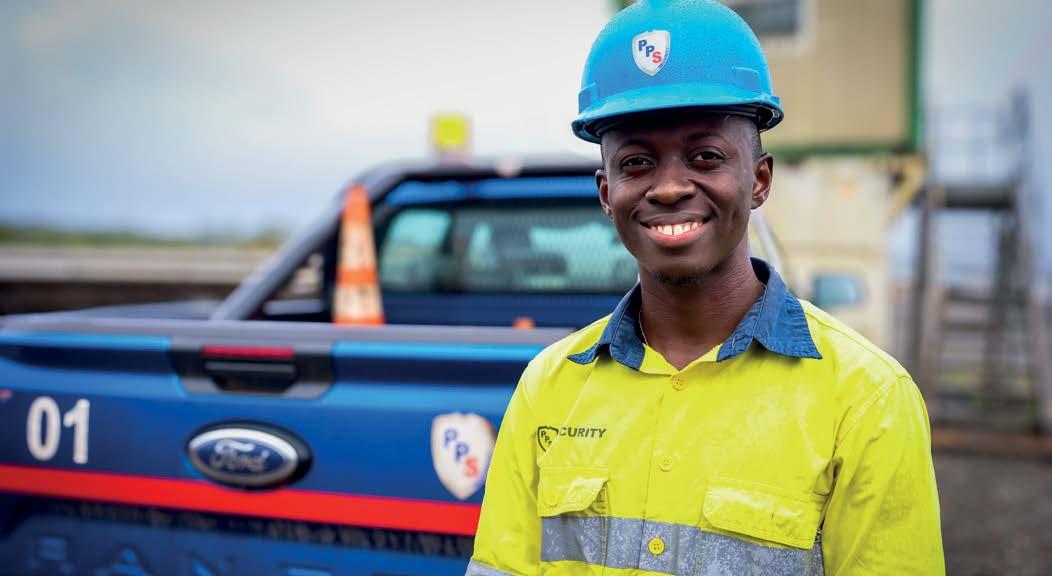
• Client-focused innovation—we continuously improve and adapt our services to meet your security challenges.
• Proven commitment to compliance, safety, and operational excellence through industry-recognized practices and certifications.
Burenstraat 33, Paramaribo, Suriname Tel: (+597) 476 433 Email: info@ppsnv.com
Some of our partners are...











at the Suriname Energy, Oil and Gas Summit (SEOGS) 2025. SEOG is the largest energy offshore event in Suriname, which brings together leading energy companies across both regional and international audiences. The event was developed by Staatsolie Maatschappij Suriname, Suriname’s national energy, oil and gas company, and organised by Global Event Partners Ltd (GEP) and Fossil Energy Consulting. Thanks to GEP and Staatsolie, SEOGS is the leading place for discussion, development and investment into Suriname’s energy sector, facilitated largely by the office opened by the organisation in Paramaribo to continue to support the region’s energy sector and wide portfolio. Leading global partners attending the event include the likes of Petronas and TotalEnergies, who are crucial in supporting Suriname’s energy development. However, the event is also pivotal for bringing together multiple local and international key sponsors and suppliers
across the energy sector to enhance Suriname’s global energy development.
The most recent SEOGS event was held in midJune in Paramaribo in Suriname, where over 200 speakers and more than 250 exhibitors were present. The event also saw over 12,000 attendees, highlighting the event’s role as the largest energy event in the Caribbean. The 4-day summit event provides ample opportunities for attendees, the government and energy companies to share about the vital energy development and potential of Suriname’s offshore deposits. Therefore, the event encourages investment, development and project opportunities for companies looking to get involved in one of the world’s most exciting oil and gas hotspots. Beyond the summer, a 3-day technical conference event delivered pivotal networking opportunities to help local and international stakeholders develop relationships to help deliver




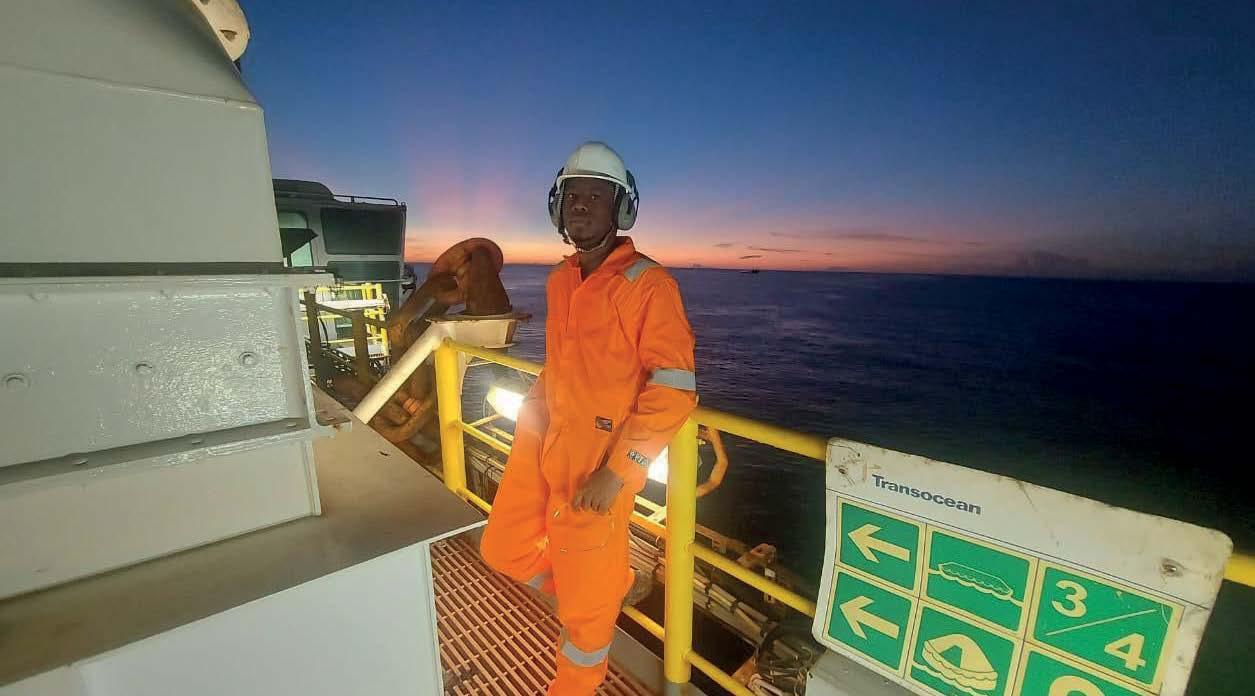
Jani Detachering N.V. is an ISO 9001:2015 certified staffing and recruitment firm based in Paramaribo Suriname, providing customized workforce solutions across diverse industries. We specialize in connecting the right talent with the right opportunities, ensuring highly qualified and motivated professionals for your business needs.
OUR SERVICES:
• Permanent & temporary staffing
• Workforce management & consultancy
• Immigration & travel services
• Industry-specific training
• Domestic and international payments
• Recruitment for short- & long-term projects
•✔ Payroll solutions
•✔ Transportation services
•✔ Medical screening for offshore & onshore personnel
Partner with us for reliable, efficient, and professional workforce solutions.



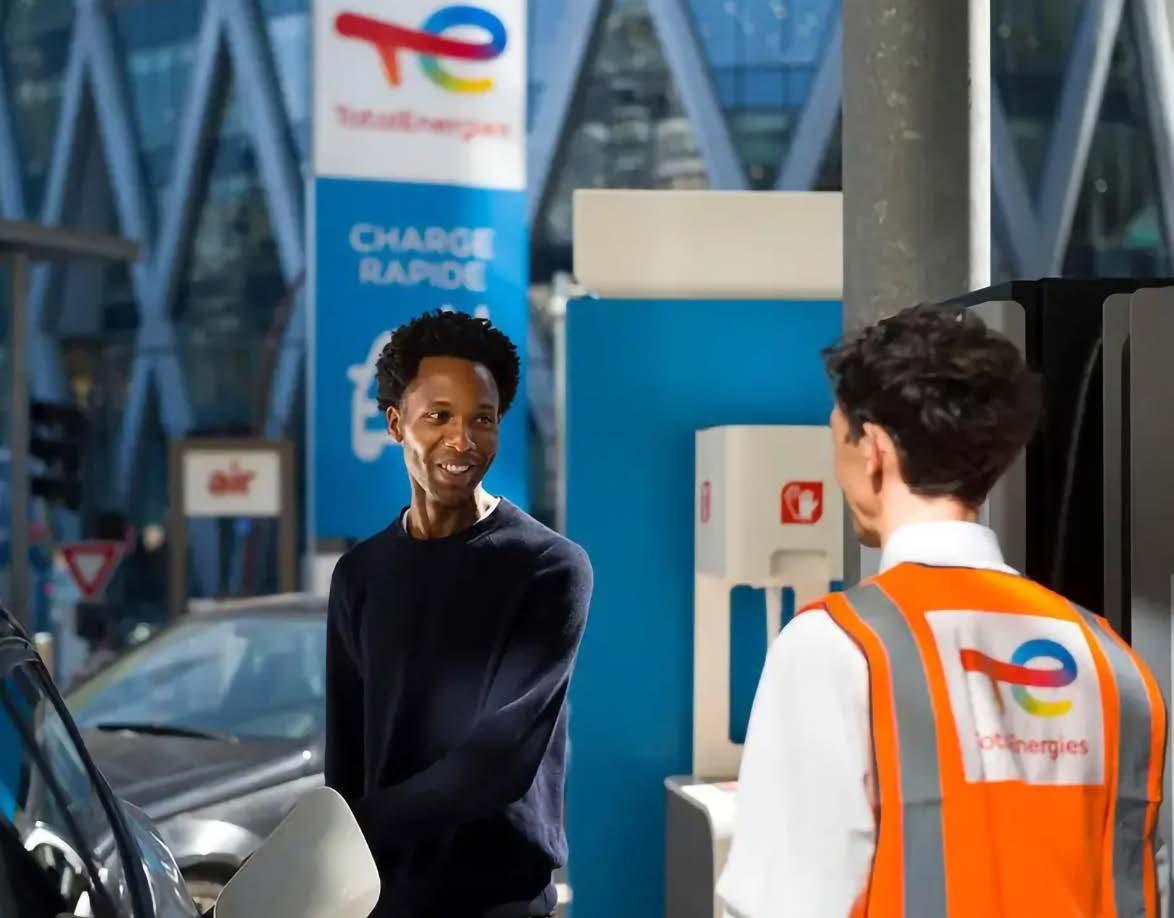
partnerships working towards the longevity of Suriname’s energy development.
SEOGS 2025 marks the 5th year of the event, and this year, one of the central focuses was on sustainability. With the opening of SEOGS 2025, President Chandrikapersad Santokhi outlined Suriname’s commitment to transparency and inclusivity in the growth of the country’s energy sector, with a central focus that ‘oil and gas resources must benefit all of our people’. These words were followed by the keynote address from Chairman and CEO of TotalEnergies Patrick Pouyanné, which reiterated the company’s commitment to the sustainable development of the GranMorgu project within Block 58 and across the Suriname-Guyana Basin. Pouyanné outlined in the message that TotalEnergies’ project within Block 58 will create over 6000 jobs, inject more than $1.5 billion into the local economy, and deliver more than 750 million barrels of oil to the market at a cost below US$20 the barrel. For this reason, Pouyanné highlighted that the GranMorgu project is part of a more than US$10 million investment that is designed to address sustainable energy values.
This focus on sustainability remained a key focus for the entire event, with Pouyanné reiterating how
the project will continue to focus on sustainability features throughout its development, with a particular focus on ensuring its FPSOs are electrical and are delivered alongside a permanent methane monitoring system. In addition to this, TotalEnergies will also ensure the reinjection of associated gas throughout the project. This focus on sustainability throughout the project is set to help both TotalEnergies and Suriname meet their goal of reaching net-zero emissions by 2050.
Ultimately, TotalEnergies’ projects across South America highlight the company’s mission to make energy more accessible, sustainable, and affordable across the globe. In Suriname, in particular, the development will strategically enhance the country’s existing energy infrastructure and ensure a more seamless delivery of energy across the region. With Suriname’s continued energy development supported by the government and local stakeholders, and highlighted through the SEOGS event, the region is now a vital hub for energy investment across the Caribbean. For TotalEnergies, Suriname will now add to its vast portfolio in South America, which works cohesively to leverage its expertise across the region’s energy sector and enhance Suriname’s role within the global energy market.

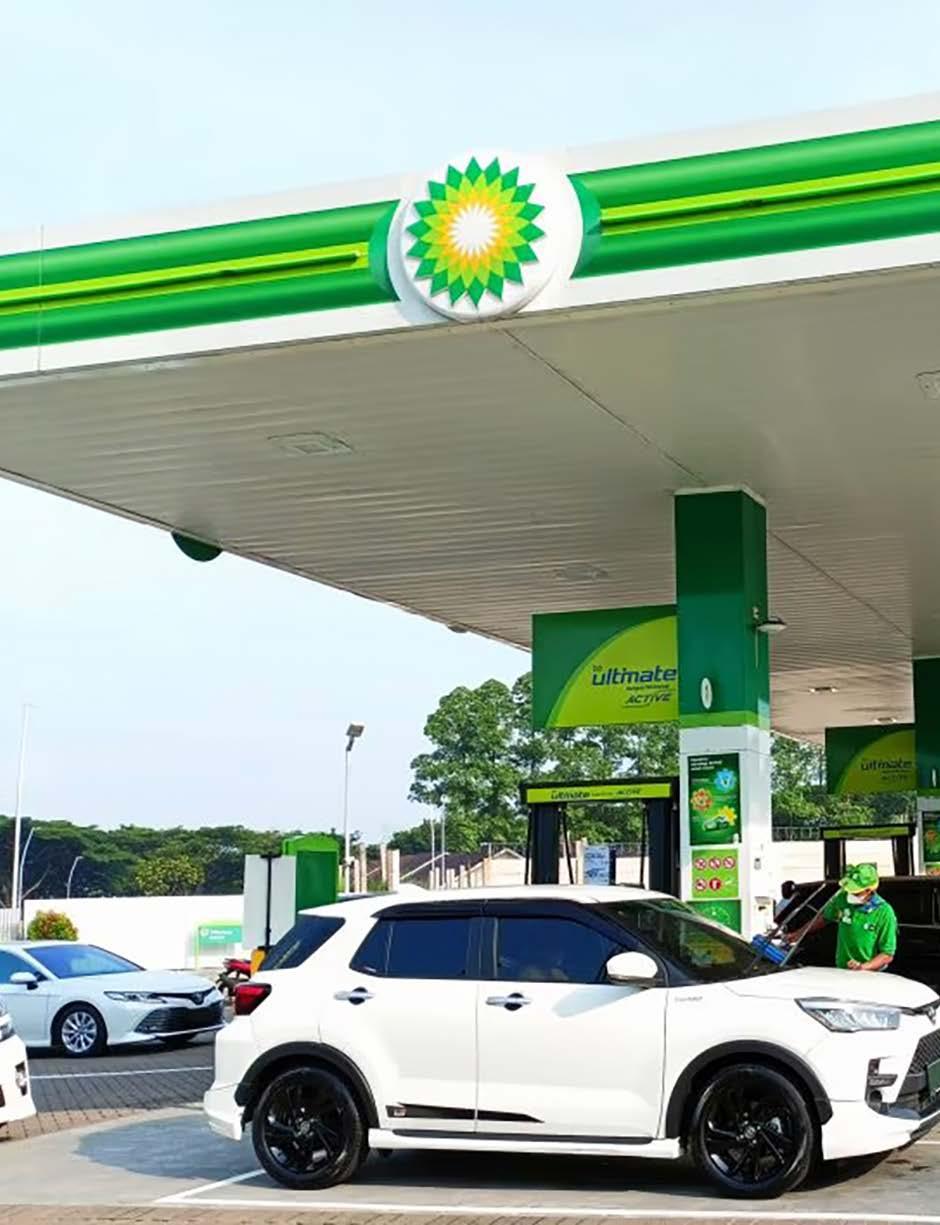


BP is a leading integrated energy company providing accessible, costeffective and diversified energy solutions across the world. Over the years, BP has expanded its offering from oil to gas, and now into onshore deepwater, and towards the development of new and renewable energy offerings that will help move the world towards a lower carbon energy future. This full range of energy offerings is evident across the Indonesian division of the company, BP Indonesia, where it has been operating for more than 55 years. Across Indonesia, BP is working to expand gas developments across the Ubadari gas field and deliver vital energy resources for the people of Indonesia.
In Indonesia, BP is present across almost every aspect of the gas development pipeline, with operations spanning from mainstream, upstream, downstream, integrated services, trading and even petrochemical sectors. For this reason, BP is one of the largest investors in the country and has delivered vital employment opportunities for local people to work across its various projects spanning Indonesia’s energy sector. However, one of the primary developments for BP in Indonesia is the exploration and production of the Tangguh LNG plant. The plant spans 6 gas fields across the Wiriagar, Berau, and Muturi production sharing contracts in Bintuni Bay in Papua Barat. In this region, the first gas reserves were discovered in the mid-1990s by Atlantic Richfield Co. (ARCO), but today are 100% wholly operated by BP Berau Ltd., BP’s Indonesia subsidiary.
Tangguh LNG operates 3 three liquified natural gas (LNG) trains, which at full capacity can deliver 11.4 million tonnes (Mtpa) of gas per year. In addition to this, the site will have an offshore injection platform, an offshore CO2, and an onshore CO2 removal, processing and compression system.
Since the project began in 2009, Tangguh LNG has delivered more than 1400 LNG cargoes to customers across both Indonesia and Asia. The operations run by BP Berau Ltd work alongside other wholly owned subsidiary companies by BP, including BP Muturi Holdings B.V., BP Wiriagar Ltd., and Wiriagar Overseas Ltd, which gives BP an overarching 40.22% consolidated interest in Tangguh LNG.
However, in recent years, a new development of the BP Tangguh UCC project has been explored, hoping to unlock around 3 trillion cubic feet of additional gas resources for Indonesia. The project developed by BP features Indonesia’s first at-scale enhanced gas recovery through carbon capture, utilisation and storage (CCUS) system. The project is vital as it is located across the Ubadari gas field, which is a rich source of gas development for Indonesia, and so the implementation of an enhanced CCU system will expand Indonesia’s existing energy infrastructure and deliver greater energy potential for the country.



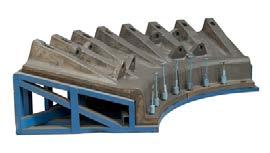
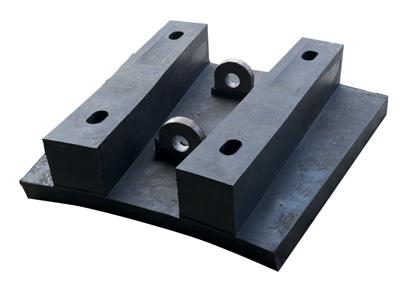
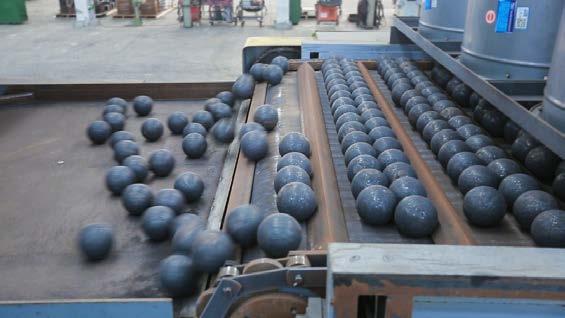




Growth is a world leader in design, manufacture & supply of mill lining systems, including grinding media
Let us show you what our team of professionals can do for you and your business.
Growth will always commit to offering the highest quality products, services, and solutions for the comminution of minerals in the mining industry.
www.growthsteel.com au.sales@growthsteel.com +61 (8) 9317 4844
The project is expected to begin in 2028 and will be the first CCUS project to be developed at scale in Indonesia. Plus, the project will have the potential for sequestering around 15 million tonnes of CO2 from Tangguh’s emissions in its final phase. One of the major benefits of the project is that it has also been designated a national strategic project by the Government of Indonesia and represents the continued development of Tangguh for Indonesia’s energy sector. Plus, with the addition of a third LNG train, which began operating in 2023, the plant’s total liquefaction capacity now reaches 11.4 million tonnes per year.
BP announced in November 2024 that the final investment decision (FID) had been reached on the $7 billion Tangguh Ubadari, CCUS, Compression project (CCU) to help Indonesia expand its gas resources and help meet the growing energy demands across Asia. As such a large investment into Indonesia’s energy sector, BP are spearheading the country’s investment in strengthening the country’s energy resources and helping to move towards more renewable energy options across the region.
Murray Auchincloss, CEO of BP, outlined in the press release announcing the FID that “The project not only unlocks a fantastic gas resource, it also represents an Indonesia first through the use of CCUS to maximise gas recovery. BP has operated in Indonesia for more than fifty-five years, and the strength of our relationships enables us to bring deep technical experience in helping to deliver this innovative development.” Auchincloss’ comments highlight the valuable role the project will play in bringing greater energy development for Indonesia and support the country’s continued energy development and diversification.
With the project location in such a strategic place within Indonesia, it is primed to access high-value markets within Indonesia and in the wider region. Therefore, by facilitating the delivery of low-emission energy development, Indonesia is the leading facilitator of such energy demand across the region. Plus, with 99% of the Tangguh LNG project workforce being Indonesians, and 70% of
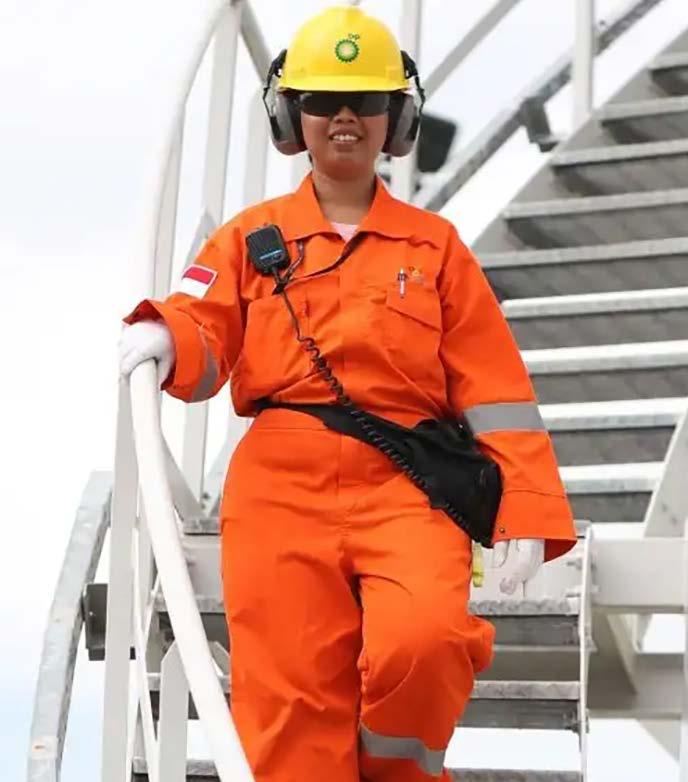
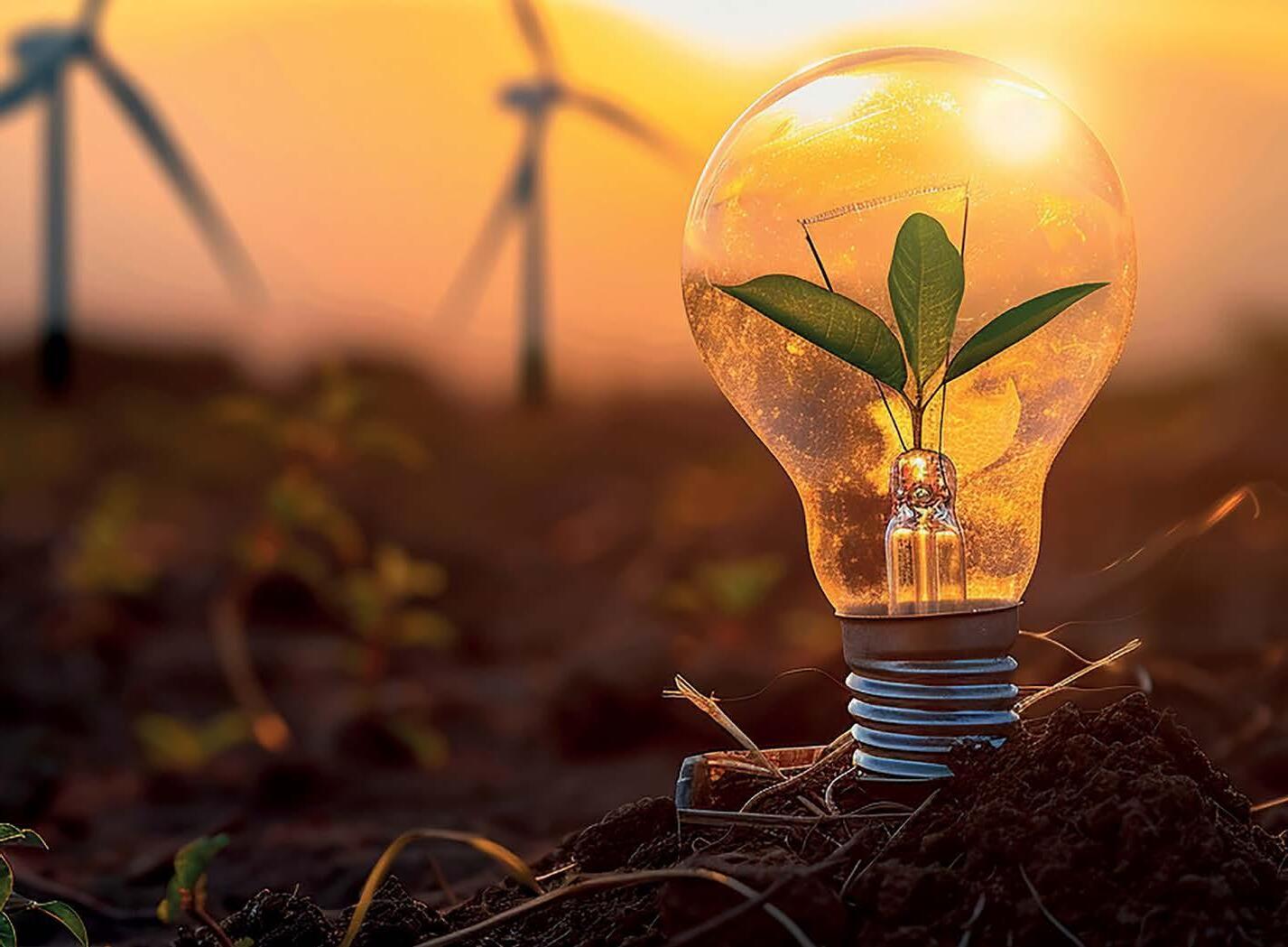

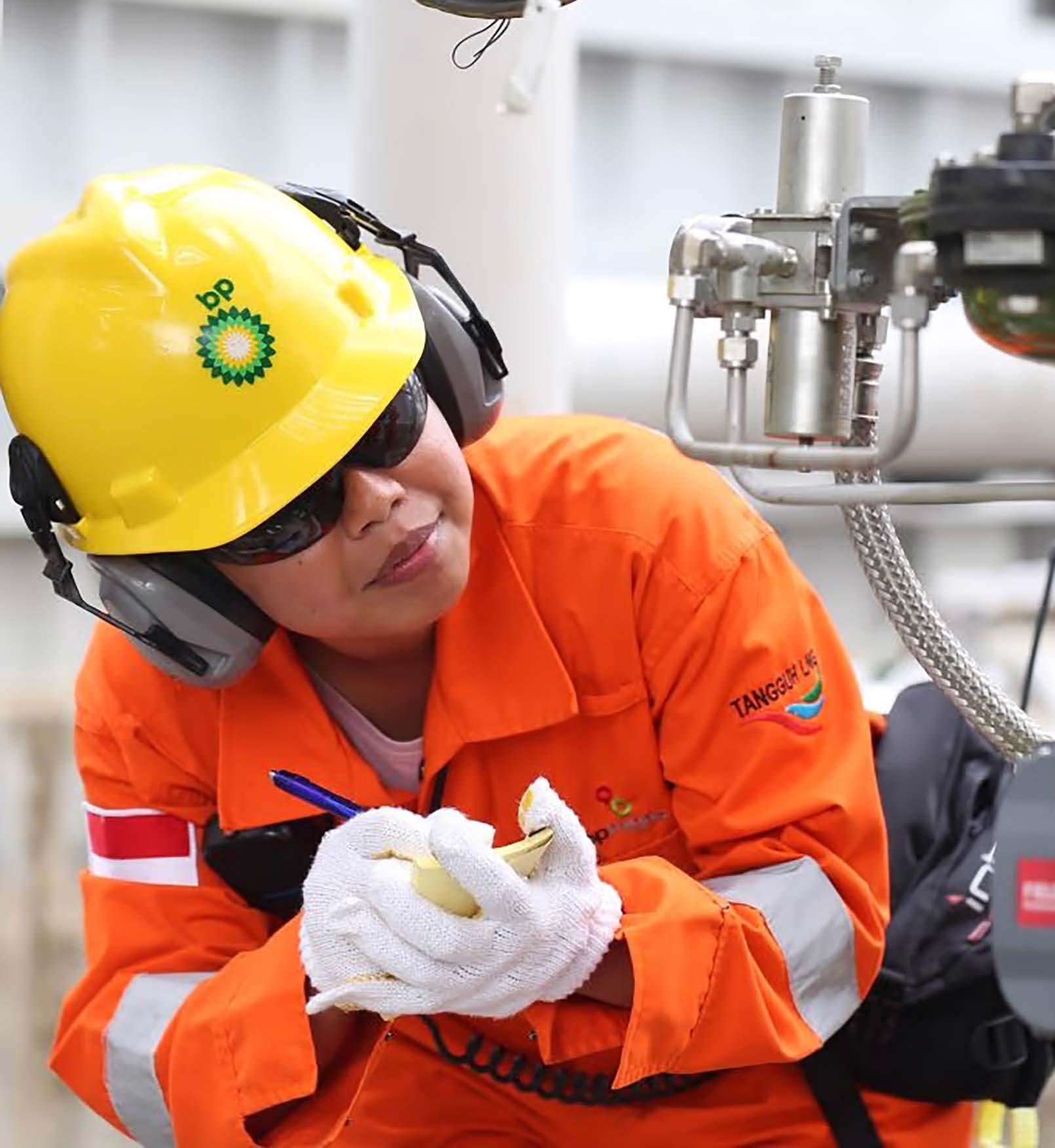
these directly from the Papua province, the project directly benefits the local community not just with energy resources but with vital employment opportunities. The goal of the project is to achieve an 85% Papuan workforce by 2029, which highlights the project and BP’s commitment to continually investing in the region’s people to deliver vital social and economic development.
Across Indonesia, BP plays a crucial role in helping develop the country’s energy infrastructure whilst delivering vital employment opportunities.
The Tangguh LNG project looks set to deliver vital LNG development for the region, which can then be delivered across local markets to enhance Indonesia’s role as a crucial low-emission energyproducing country. With all operations supported by BP’s expertise across the global energy sector, it is no surprise that the project looks set to be a vital development across the Ubadar Gas Field, tapping into such a vital resource to meet energy demands and welcome future investments into Indonesia’s energy sector.
UNLOCKING EFFICIENCY, DRIVING INNOVATION, AND ENHANCING SUSTAINABLE GROWTH WITH BUREAU VERITAS
Bureau Veritas empowers the oil and gas industry with world-class testing, inspection, and certification solutions. From upstream to downstream, we help businesses ensure safety, optimize performance, and meet global compliance standards.
Trust our expertise to enhance operational integrity and sustainability — because your success is built on quality and reliability.

Discover our solutions — scan the QR code and start shaping a world of trust.
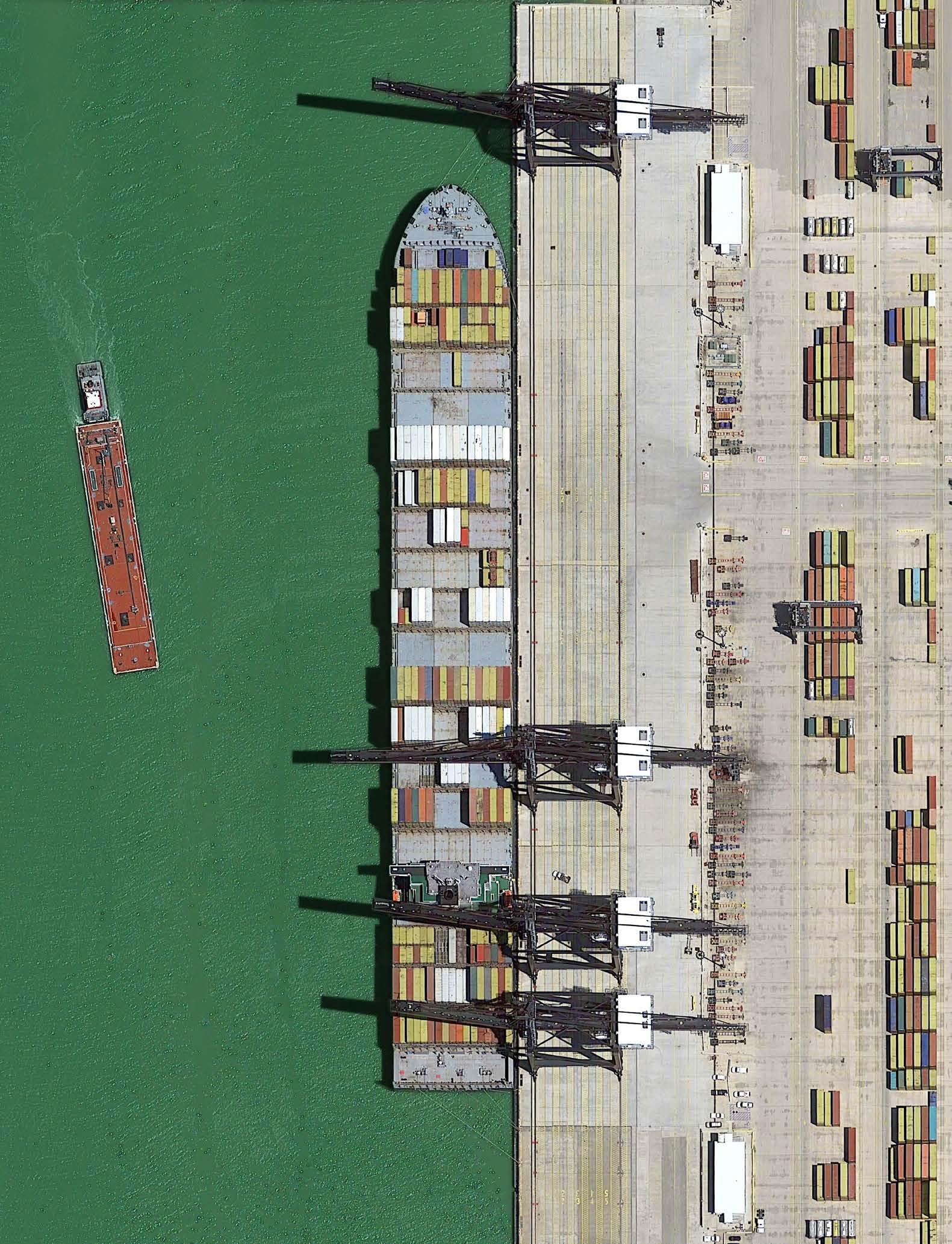
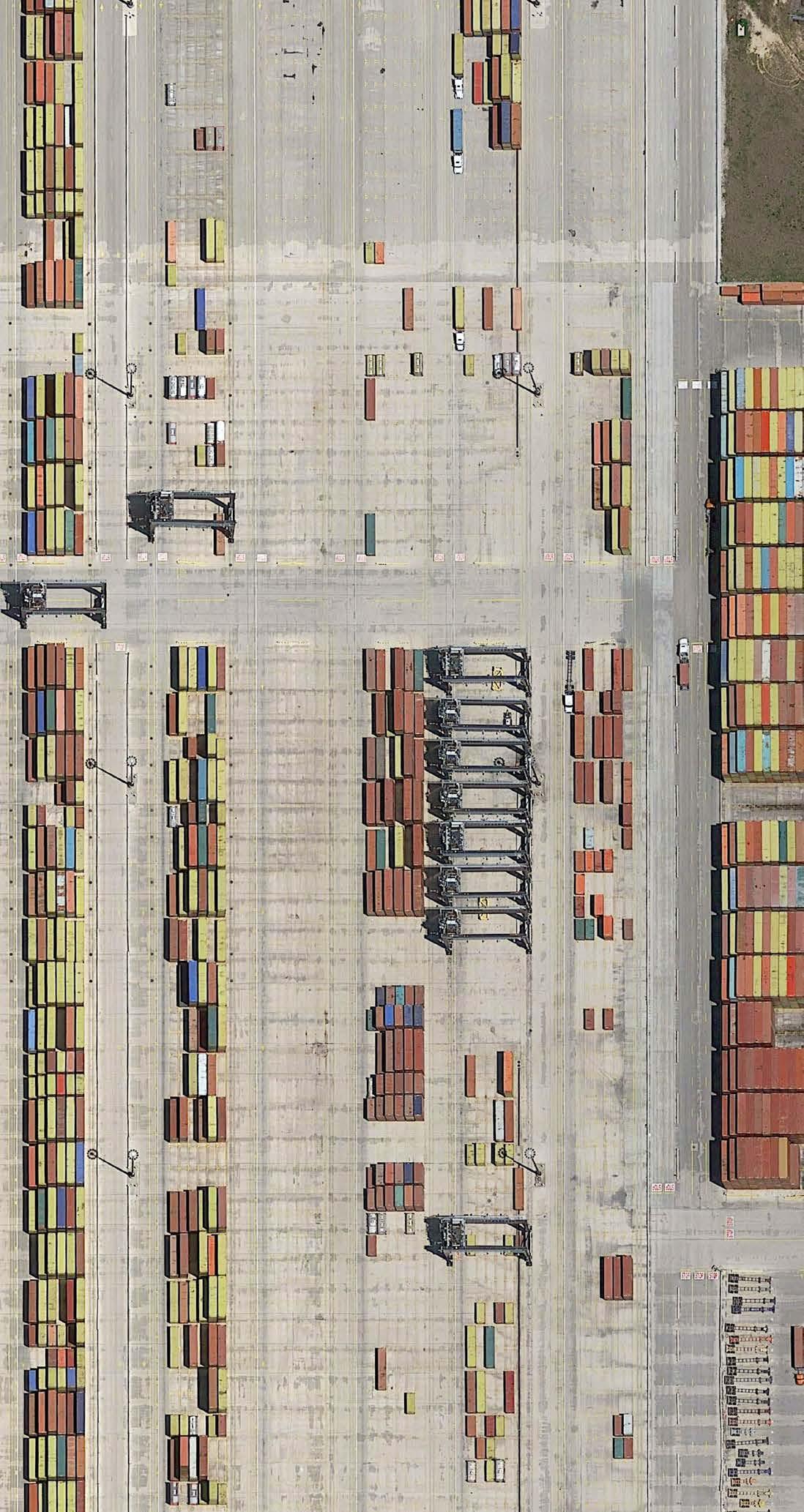
As one of the largest container ports in the world, Port Houston is responsible for handling 74% of the container traffic moving along the Gulf Coast through the strategic hub that is the Houston Ship Channel Complex. With 8 public facilities along its 52-mile channel, the port continues to be a leader in the delivery of cargo via the United States waterways, supported by the Port of Houston’s maritime and navigational services to facilitate vital transportation and shipping across the region. With the demand for cargo continuing to grow across the United States of America, Port Houston will continue to play a pivotal role in delivering such essential cargo to its end markets on both a local and national scale, supported by the port’s strategic commission and port authority teams.
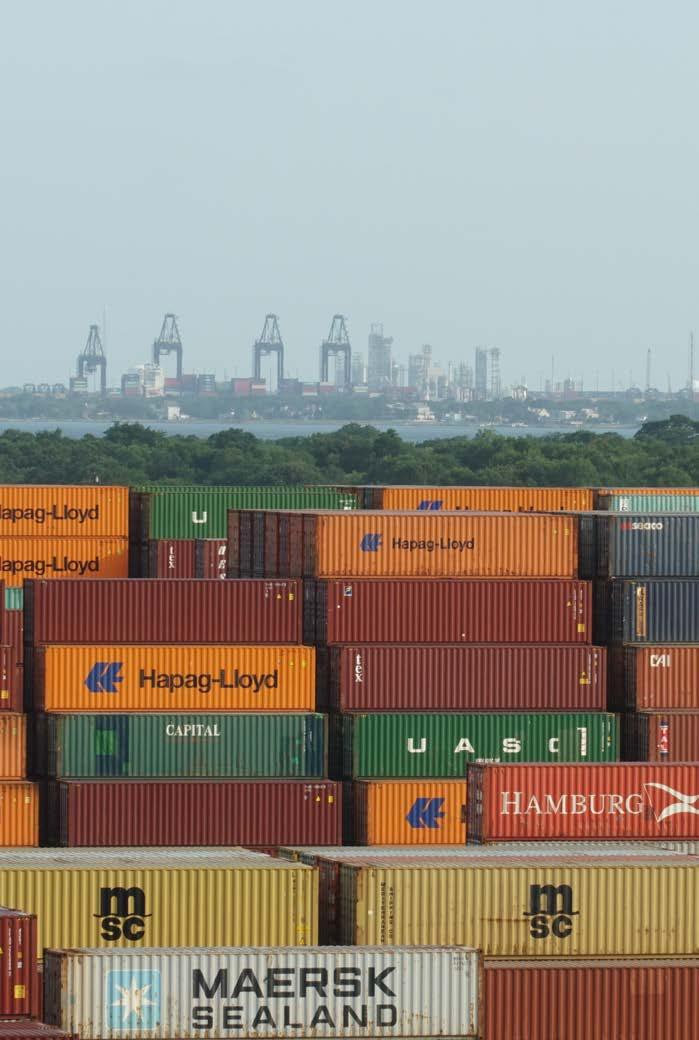
Port Houston’s origins can be traced back to the early days of Houston in Texas when barges were responsible for carrying cargo arriving at the shallow drafts of the Buffalo Bayou. This cargo would then be moved across the region and met with barges in Galveston that would deliver the cargo to seagoing vessels, which would take the freight beyond the US. However, the cargo volumes were continuing to increase rapidly, leaving the existing infrastructure of Houston with much to be desired. Therefore, by the end of the 19th century, Houston civic and business leaders came together to champion and promote the expansion of a deep-water shipping channel to ensure larger vessels could arrive at the Port of Houston, which would more efficiently support the region’s cargo commerce business.
The key turning point came following US representative, Tom Ball’s role in advocating for the expansive dredging of the deepwater channel, which was approved by the Congressional Rivers and Harbours Committee vote, which would deliver the Houston Plan. By 1911, campaigners set on persuading Harris County voters to approve $1.25 million in bonds to help pay for the local share in dredging the waterway, which was approved and with it formed the Harris County Channel Navigation District, which today is now known as Port Houston. By 1914, the region saw the opening of the Houston Ship Channel which would set out a new future for the region to enhance its shipping and transportation links on both a local and international scale.
Today, Port Houston oversees, manages and operates the Houston Ship Channel complex, which comprises more than 200 private and 8 public terminals which make up the Port of Houston. Through these vital infrastructures, Port Houston has established itself as the largest port business for waterborne tonnage and so it remains a vital engine for economic development for Houston, Texas, and the US. Consequently, Port Houston’s role today is expansive and generates more than $429 billion in statewide economic value and $906 billion in nationwide economic value.
The day-to-day operations of Port Houston are overseen by the Port’s executive administration teams, which are governed by the Texas Constitution to ensure that the Port is carrying out its duties in a


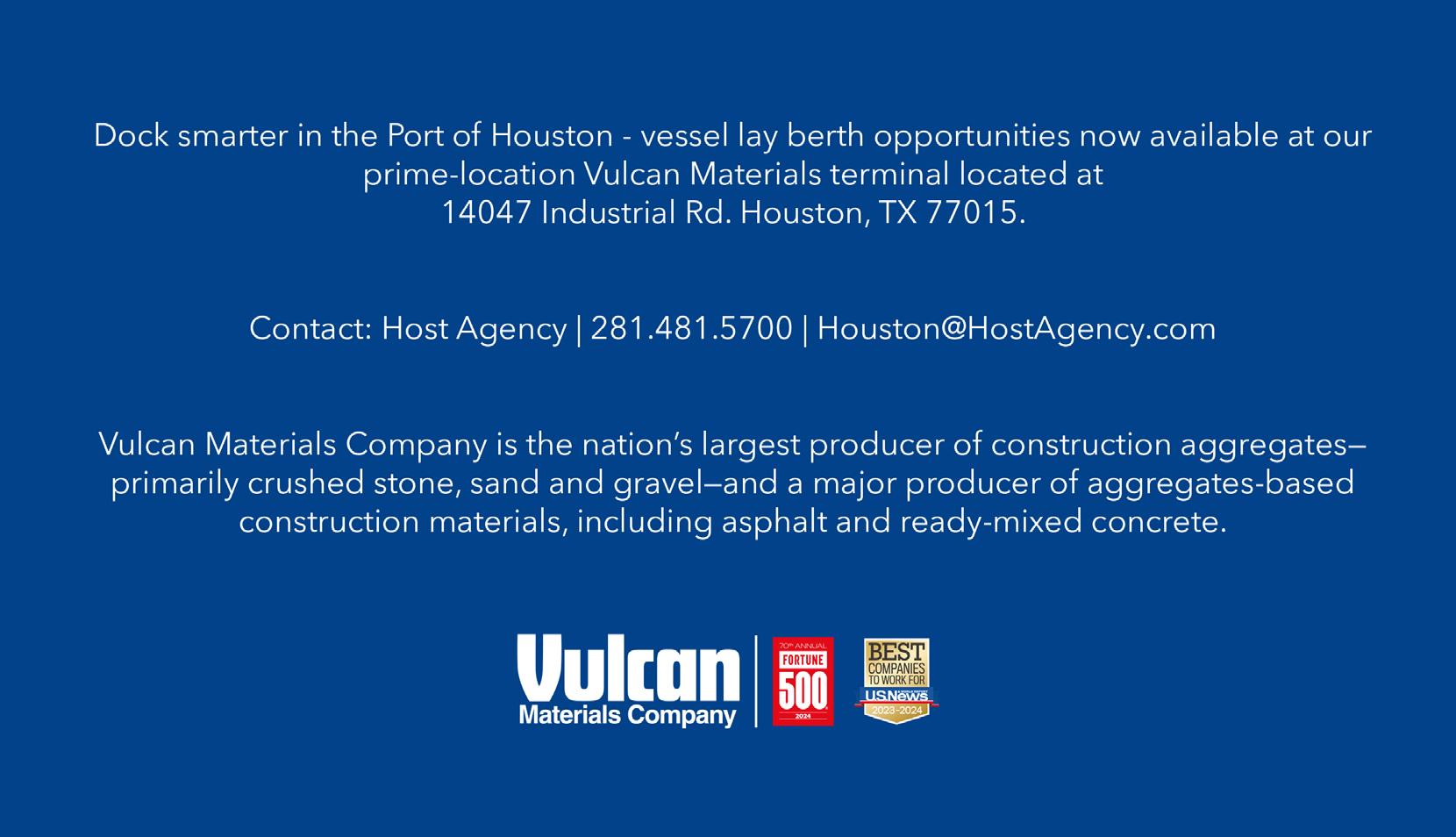
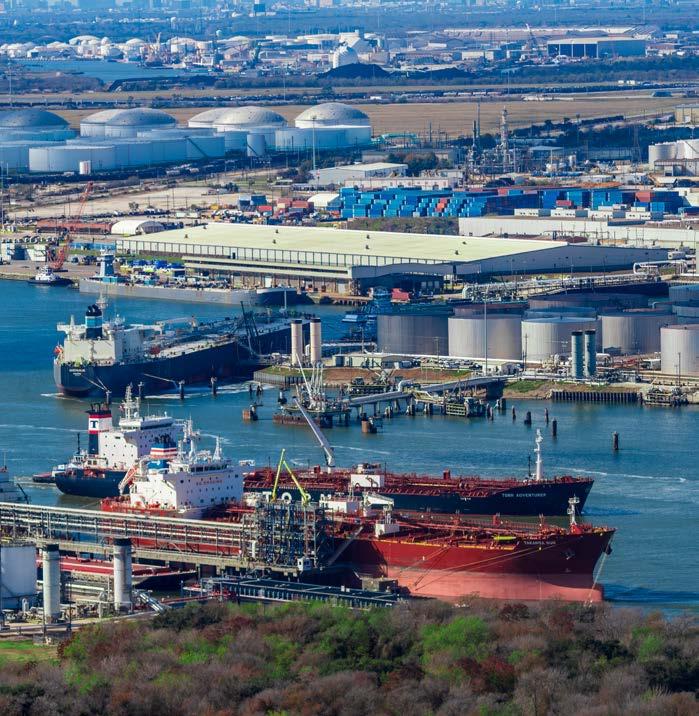
responsible, transparent and accountable manner. In terms of operations, Port Houston is overseen by the Port Commission which is made up of 7 residents from Harris County who come together to form the Port of Houston Authority. The Authority’s goal is to outline the necessary policies and guides that executive staff must follow to help continue to deliver Port Houston as a strategic leader for container services.
The Port Commission is broken down into 6 vital committees, which are overseen by 3 or more of the commissioners. These committees include the Audit Committee, Community Relations Committee, Compensation Committee, the Governance Committee, the Pension and Benefits Committee, and the Business Equity Committee. All of these committees tackle a different yet vital aspect of Port Houston’s operations to maintain its role and reputation for leading cargo operations across the US.
One of the key facilities overseen by Port Houston is the Bayport Container Terminal. Bayport, located in the Pasadena Industrial Complex, began operating in 2007 and has only continued to expand. The terminal was designed to help deliver greater cargo growth for the region, and so through its 5 berths, and 314 acres of container yard, the Bayport Container Terminal remains primed to deliver reliable and efficient container services for the continued benefit of Houston. However, much like the original expansion of the Houston Ship Channel, the Bayport Container Terminal is set to see vital investment to help deliver it as a more automated, reliable and efficient container hub at the port. Between 2023 and 2027, Port Houston has outlined it will make a $750 investment into Port Houston, to help construct additional wharves and deliver
equipment orders of STS cranes to support the ongoing demand for cargo. In fact, as the terminal moves towards the future, Port Houston is set on introducing digitisation and automation to continue to enhance the Ports’ offerings.
In addition, the Bayport Container Terminal, Port Houston also oversees the Barbour Cut Container Terminal and various multi-purpose, breakbulk and general cargo operations. The Barbour Cut Container Terminal is one of the premier container handling facilities in the country, which has seen vast investment over the years. Recent investments include Port Houston’s $650 million investment into Barbours Cut Terminal, which will continue to see enhancements as part of this investment coming the next 5 years. In doing this, the Port can remain modernised to help facilitate the growing cargo demand in an efficient and expansive way. Regarding the multi-purpose, breakbulk and general cargo operations, Port Houston continues to show how it has expanded the region since its foundation and today covers many different facilities that help commerce flow through the Houston Ship Channel. Therefore, the facilities are uniquely designed to handle such a wide variety of cargo types which support its customers every need, and in the process deliver Port Houston as a national leader for all types of cargo moving across the Gulf Coasts waters.
As Port Houston looks towards the future, modernisation and the expansion of its existing infrastructure remain top priorities. With the demand for cargo never seeming to cease, Port Houston is committed to delivering projects that will help enhance the Houston Ship Channel, port terminals, roadways, and the various industrial properties surrounding its operations. To achieve this mission, Port Houston has outlined a variety of goals and initiatives it hopes to accomplish. These include Port Houston’s 2040 Plan, which details the strategic goals of the Port and will oversee its investment and development delivery in the coming years. As part of the 2040 Plan, Port Houston has identified the ‘Four Cs’, which include channel, cargo, community, and change. These ‘Four Cs’ will be at the forefront of Port Houston’s development to support continued regional growth through the expansion of the channel, promotion of core business activities, and enhancement of the company’s relationship with
the local community. Lastly, and most importantly, the port is embarking on change to ensure it remains flexible and adaptable to embrace new trends and technologies that will continue to enhance its operations for the future.
A key aspect of many of Port Houston’s future expansion, especially regarding technology, is towards a more sustainable future from Houston’s waterways. This focus was highlighted in April, with Port Houston looking to add new hybridtired gantry cranes (RTG) into its operations. The contract for new RTG cranes was awarded to Konescranes Finland Corporation, which will deliver 16 new cranes, that are setting the new standard for cranes going forward in terms of operationality and sustainable efficiency. The cranes mark the second largest purchase of cranes by the port, and refocus its commitment to delivering a more optimised terminal and cargo operation supported by the best technology possible.
In addition to the RTG cranes, the Port Commission also announced it has awarded Breaux Brothers Enterprises, Inc. with a contract for new electric-
diesel hybrid vessels which can provide public tours across the Houston Ship Channel. Whilst the current boast has served the region for 67 years and sees 30,000 visitors a year, the vital shift towards a more sustainable vessel highlights Port Houston’s move towards solutions that reinforce its commitment to environmental sustainability and carbon neutrality.
Overall, Port Houston is an expansive port spanning the Houston Ship Channel and various container terminals, all of which are overseen by the Port Commission and Port Authority. Every aspect of Port Houston’s operations is designed to help enhance the region’s container business and support the cargo demands of a growing population, whilst investing in the necessary technology and equipment to make these operations as sustainable as possible. With the 2040 plan in place, we look forward to seeing how Port Houston will continue to meet the cargo demands of today and establish the vital infrastructure needed for the future, whilst ensuring that throughout every operation sustainability remains a firm priority in delivering one of the largest container operations in the US.

Excellence in Logistics and Fumigation of Imports and Exports at Ports throughout the U.S.
• USDA Compliant
• Quarantine/non-quarantine
• Australian Approved: BMSB
• Communication experts: local, USDA, CBP, state agencies, and freight forwarders
• Documentation for local, state, foreign
• Perishables: fruits, flowers, fish, vegetables
• Large and small scale fumigations
• Wood packing material (ISPM 15)
• Experienced; licensed; certified
• Grain, nuts, wood, logs
• In-transit fumigation
Written by Carley Fallows

The ocean floor makes up over 70% of the earth’s surface, however, we’ve only ever mapped just 25% of it leaving so much of it still unknown to us. Across this vastly unknown space, there are expected to be many currently unrecorded species utilising these unique landscapes as a home, all whilst being completely undiscovered by humans. Therefore, when researchers from Schmidt Ocean Institute in California announced the discovery of a new underwater mountain range off the coast of Chile it provided an exciting opportunity to find out more about what lurks beneath the ocean surface.
Located 900 miles off the coast of Chile, an underwater mountain range mapped to be four times the height of the Burj Khalifa has been discovered. The range is thought to be 1.9 miles long and was discovered using an R/V Falkor (too) research vessel which utilises soundwaves to map its height. The soundwaves delivered by the vessel are timed to see how long it takes them to bounce off the seabed and return to the vessel, the time is then calculated into the distance to provide a better understanding of the depths that the mountain range covers.
The mapping was conducted in Nazca Ridge by the institute in partnership with Ocean Census as well as the Centre for Coastal and Ocean Mapping and Joint Hydrographic Centre from the University of New Hampshire. Schmidt Ocean Institute began its operations in 2009 to catalyse the discoveries needed to better understand the ocean, and in return better understand how we can sustain the life and health of the planet in the process.
Currently, there are expected to be at least 100,000 underwater mountain ranges that are higher than 1000 metres across the world. These kinds of mountain ranges provide a rich ecosystem where sea sponges, corals and rare marine species are often lo-

cated. Therefore, the discovery of a new underwater mountain range of this size provides researchers with a new and exciting chance to see what species and biodiversity the range is home to.
Research of the mountain range has revealed the first sighting of the ‘Casper octopus’, a ghostly white cephalopod that has never before been seen in the Southern Pacific. In fact, it’s a species so rare that it has not been captured before and so does not currently have a scientific name other than being known for its white appearance. Also discovered were two rare bathyphysa siphonophores, also known as ‘spaghetti monsters’ who are known for their string-like appearance. Researchers also gained the first footage of a live promachoteuthis squid, which has never been seen live before and instead studied from dead specimens.
With such a rich diversity of marine species discovered, it provides promising research for the Schmidt Ocean Institute for continued exploration of underwater mountain ranges in the hopes of finding even more rare or currently undocumented species. The research is vital for understanding more about the planet, and it is hoped that with continued research across the globe, we will continue to gain a better understanding of what the vast oceans surrounding us are home to.
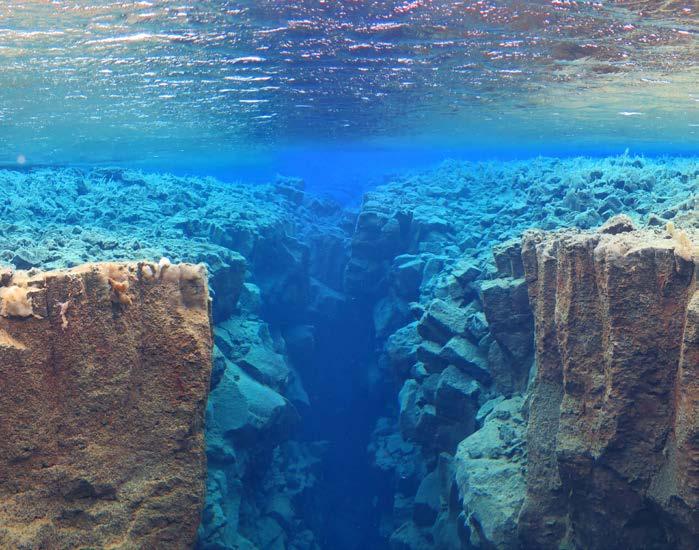
Sources: https://schmidtocean.org/new-seamount-and-previously-unknown-species-discovered-in-high-priority-area-for-international-marine-protection/
https://edition.cnn.com/2024/08/28/science/underwater-mountain-seamount-nazca-ridge/index. html


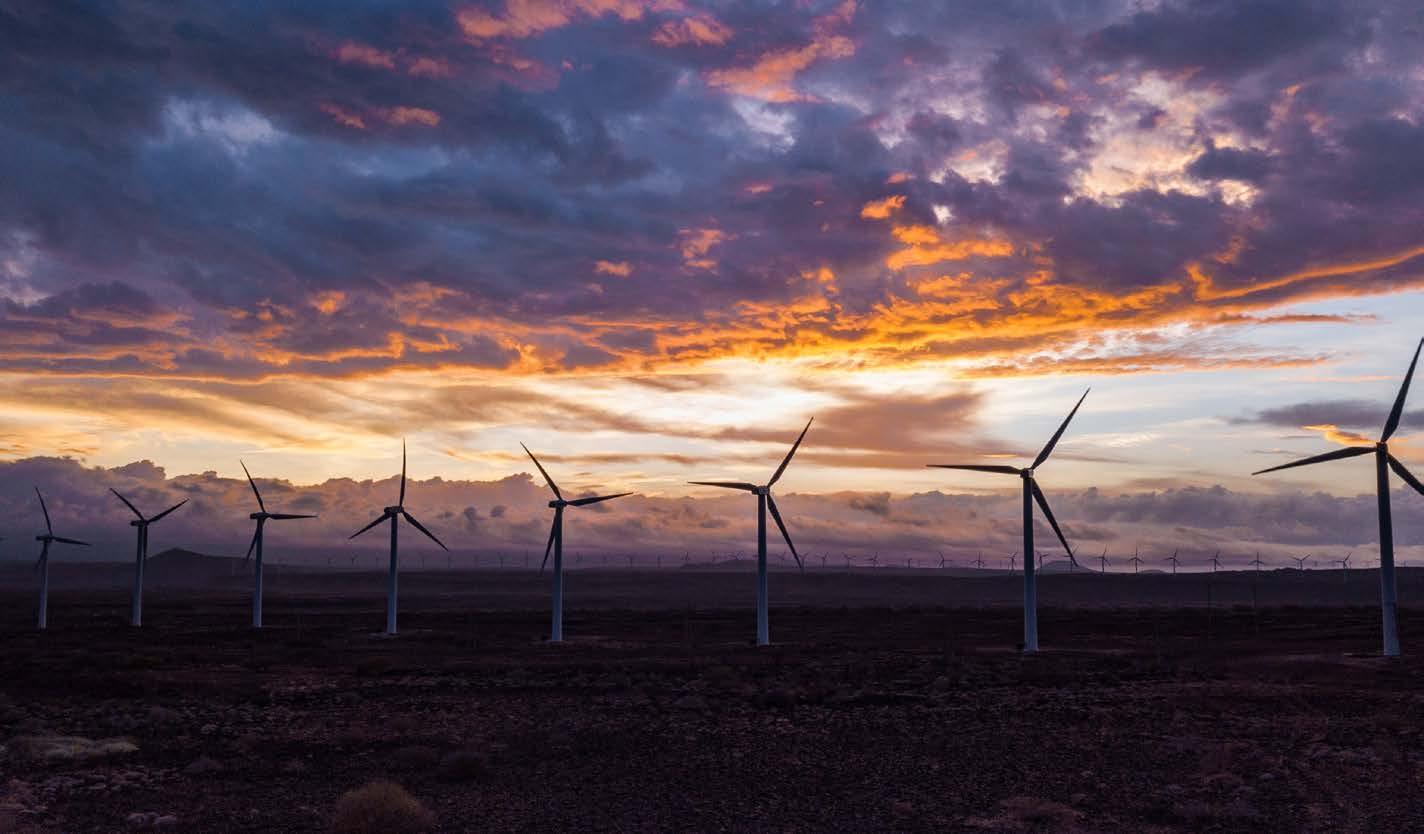
As the world moves towards a more sustainable future, renewable energy development has become a vital industry supporting the global shift towards net zero emissions. For Kenya, the focus on renewable energy is a key priority and so it has long been a leader in renewable energy adoption in Africa. Currently, 70% of Kenya’s electricity is generated from renewable energy sources including geothermal, hydro and wind. A key focus behind this widespread adoption is the goal for Kenya to deliver 100% renewable energy by 2030. For this reason, companies such as Lake Turkana Wind Power Ltd. (LTWP) are vital in driving towards this sustainable future. LTWP is a renewable energy company that is responsible for financing, constructing, owning, and operating wind power projects across Kenya. By facilitating vital infrastructure and investment throughout the country, LTWP can help deliver wind power to support the country and reduce Kenya’s dependency on diesel and heavy fuel alternatives.
LTWP was first established in 2006 to bring vital wind power generation to Kenya. In the years prior to the development, the Kenyan government had begun looking into development projects in Lake Turkana and so vast wind assessments were conducted. By 2007, environmental fieldwork was undertaken, and a Memorandum of Understanding (MOU) was signed between LTWP and Kenya Power in 2008 for the development of a wind power facility that could provide vital electricity to the country. Construction work began at the site in 2014, with the first shipment of 30 wind turbines online by September 2016, which delivered its first 50 megawatts (MW) of electricity. The project was delivered in 2017 with the inclusion of the Lake Turkana Wind Power Station which could produce 33% of the estimated 310MW of the wind turbine field’s expected output.
Today, LTWP, spans 365 wind turbines making it the largest wind farm in Africa with an installed capacity of 310.25 MW. The wind turbines used for the project are Vestas V52 models, which have a total capacity of 850 kilowatts (kW). To help support the delivery of power generation across the country, the wind farm, which covers 40,00 acres, is supported by an overhead 33kV electrical wire network, which takes the electricity generated from the turbines and delivers it to a substation. From the substation, power can then be transmitted through 400kV high voltage electric power lines to a substation in Suswa. These powerlines span 520 kilometres (km)
and help integrate wind power into the existing power network.
One of the key challenges facing Kenya in the delivery of power through renewable energy is the national grid having the vital infrastructure and flexibility to deal with multiple different types of renewable energy sources. Therefore, LTWP connecting directly with the country’s electrical network helps deliver more reliable energy for the country and allows Kenya greater diversification of its energy matrix. With the infrastructure to supply 17% of the country’s installed electricity capacity, LTWP is working towards a future where renewable energy sources can overtake diesel and heavy fuel alternatives.
The project generates 1,658,000 megawatthours (MWh) of electricity, which supplies clean power to around 1 million households across Kenya supported by Kenya Power which purchases the power produced at a fixed price over a 20-year period under its Power Purchase Agreement (PPA).


WE ARE PROUD TO BE ASSOCIATED WITH LAKE TURKANA WIND POWER
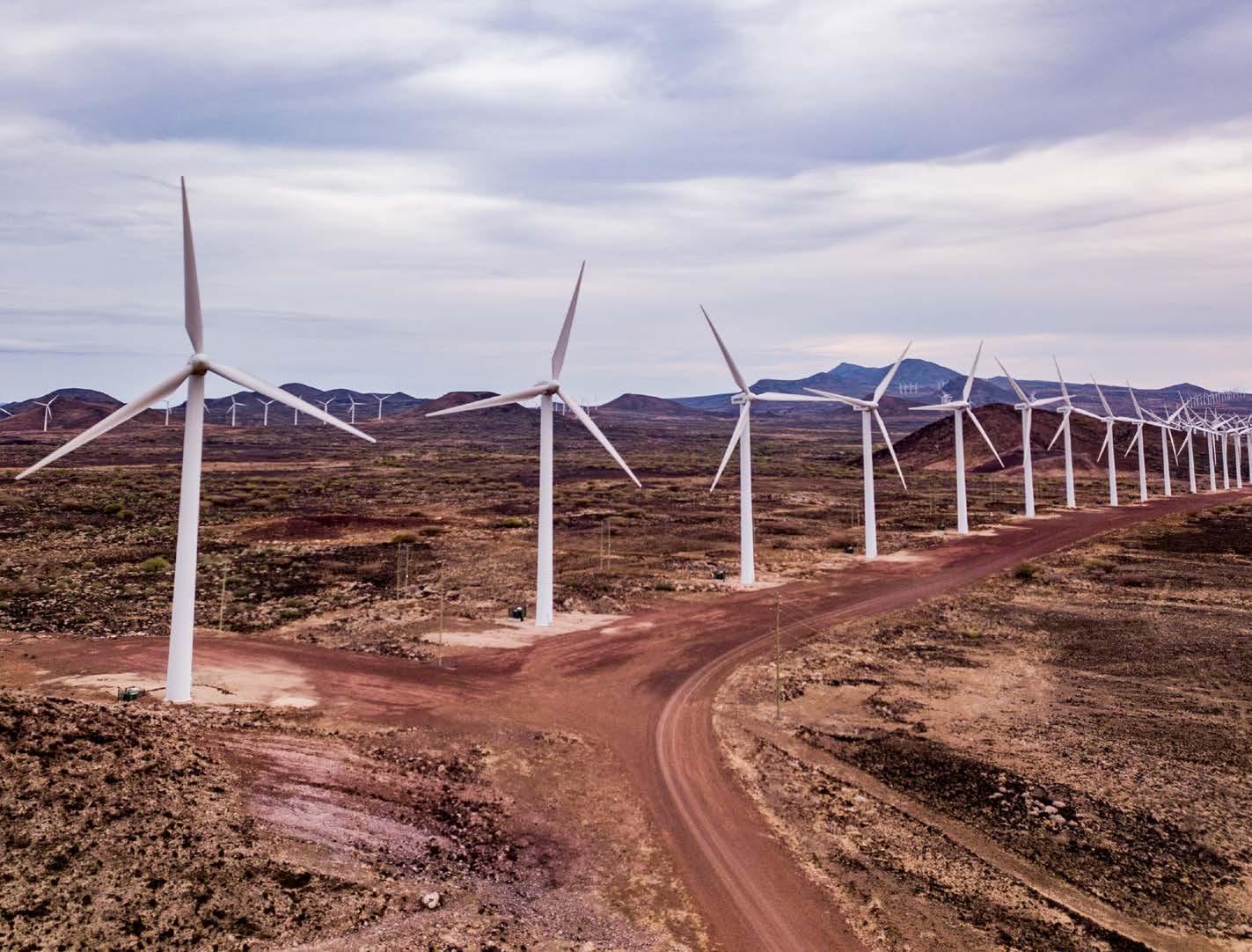
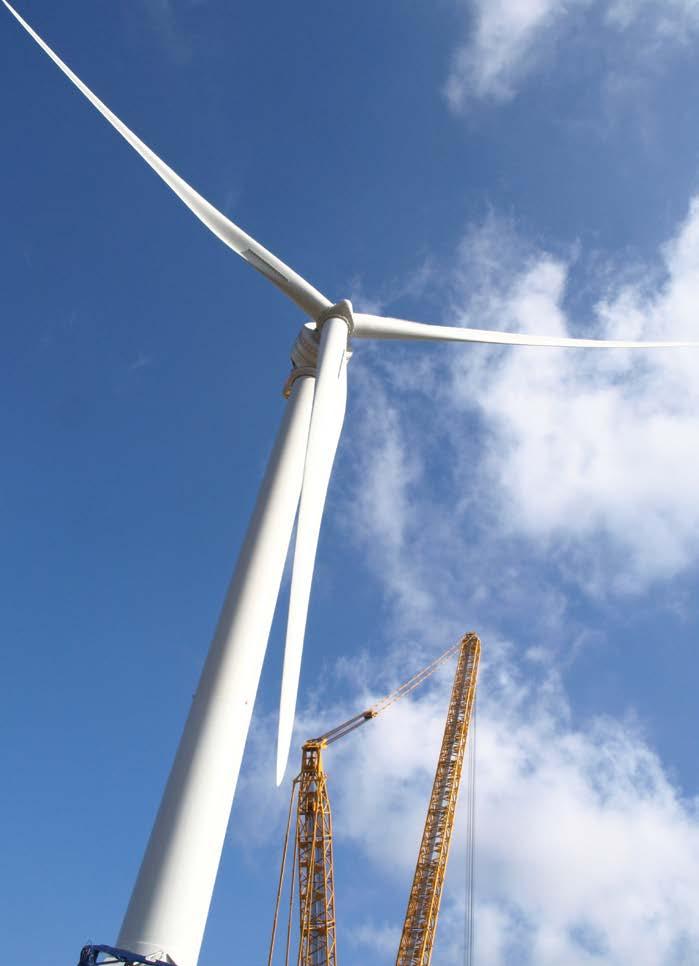
By working alongside the country’s central power delivery company, LTWP can deliver vital electrical power, supported by local electrical infrastructure to make green energy more accessible to people and businesses across Kenya.
LTWP is also passionate about working alongside other energy companies and co-developers in the region, to help deliver its vital renewable energy development across the country. By working with those across the country, LTWP is able to make wind-generated electricity more accessible, integrated and reliable across the country. Furthermore, to ensure the adoption of renewable energy options remains possible, LTWP is working to develop the road network in and around the wind farm site to help in the development, construction and maintenance of its turbines to ensure that the wind farm remains a reliable solution to powering the country now and for the future.
In 2023, LTWP generated 1,481 gigawatt hours of clean power that was delivered to the Kenyan national grid. This energy generated accounted for 11.04% of the country’s total electricity generation according to LTWP’s 2023 Sustainability Report, which highlights the vast role of LTWP in contributing towards Kenya’s renewable energy future. Today,

Kenya sources up to 91% of its energy from renewable sources, with 12% from wind power. Thus, LTWP continues to play a vast role in supporting this figure and helping meet the bold sustainability goals of the country.
Aside from its power generation, LTWP is also keenly concerned with improving the local livelihoods of the people surrounding its wind farm. To support local communities, LTWP has established the Winds of Change initiative that outlines its ongoing commitment to supporting local communities and delivering sustainable community development projects across the Laisamis Constituency where its project is located. This focus on community support ensures that whilst the company is helping deliver a more sustainable future, it is also giving back to the local community.
Across the wind farm in Marsabit County, LTWP is delivering vital power infrastructure to support Kenya’s shift towards renewable energy sources. With the project providing a significant amount of the country’s wind power output, LTWP remains a vital company delivering wind turbines, associated overhead grid collection systems and high voltage substations. With its vital work alongside key energy players and renewable energy developers in Kenya, including Kenya Power, LTWP can play a vital role in helping the country meet its sustainability goals. As LTWP looks towards the future, we look forward to seeing the pivotal role it will play in supporting the delivery of clean power for the country, whilst helping prevent the need for fossil fuel alternatives to deliver a greener Kenya for many years to come.

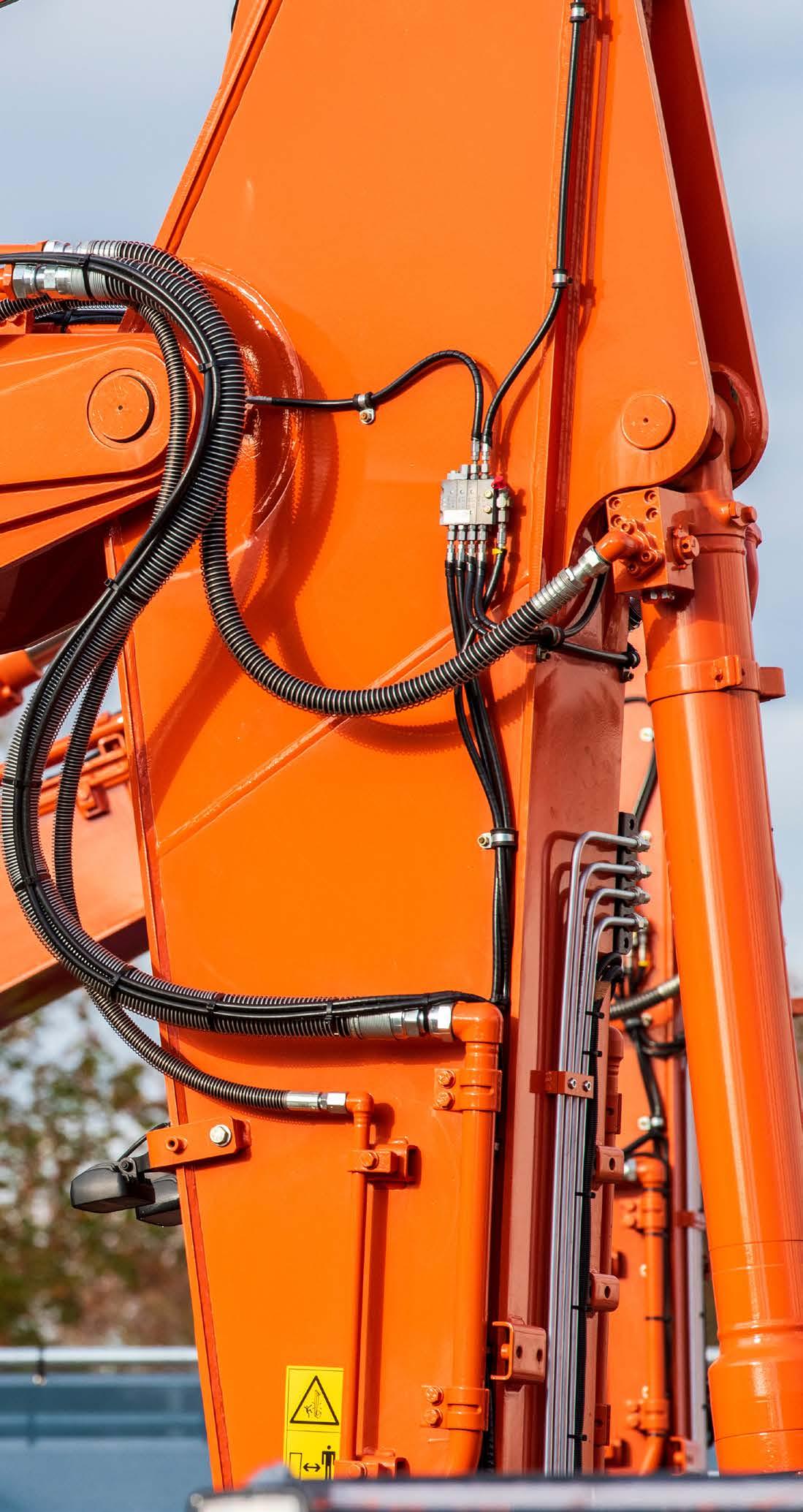
On a mission to deliver innovative products, services and solutions across the construction sector, Hitachi Construction Machinery Co., Ltd. (Hitachi) is a globally expanding construction machinery manufacturer. The construction industry is vital to global infrastructure, with the sector responsible for building roads, houses and laying down waterpipes that are vital for supporting societal development. Therefore, the construction sector relies on innovative and efficient machinery that can help meet these needs across the globe. However, as the world moves towards a more sustainable future, Hitachi is focused on ensuring its products have a longer life cycle and are built with leading technology innovations to contribute towards a more sustainable future for the construction machinery manufacturing sector.
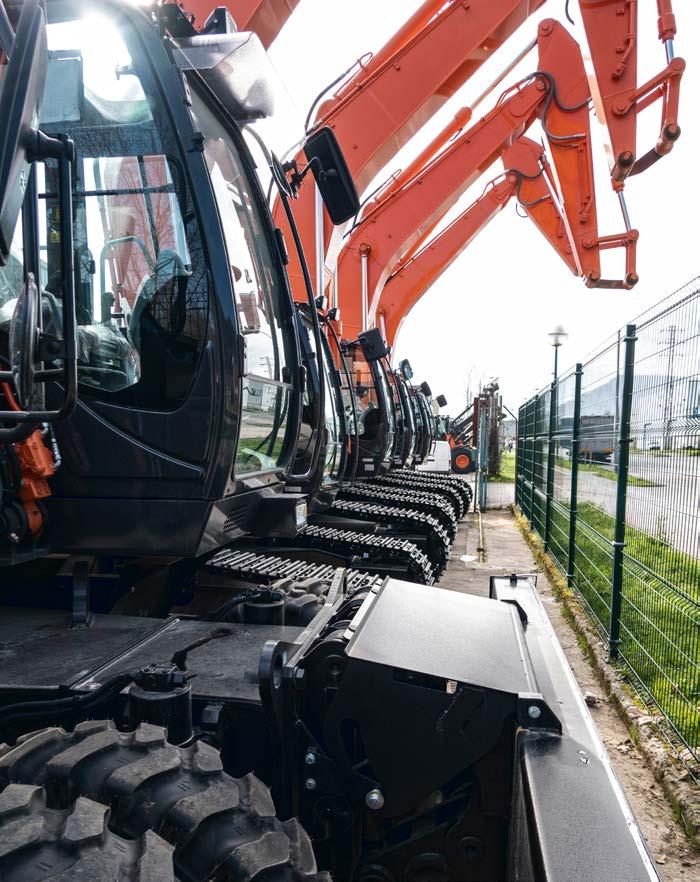
As a subsidiary of the global Hitachi Ltd., Hitachi is focused on bringing a leading worldwide manufacturer of construction equipment. Its role spans across the globe from its head office in Tokyo, to Europe, North America and South America. Today, Hitachi has roughly to 25,000 employees operating across the world who are key to bringing vital development, manufacturing, sales and service operations across the heavy machinery industry. The Hitachi we know today, began over 70 years ago following the start of its mass production of its cable operated shovels in the 1950s. This development was born from a mission to make construction work more efficient across Japan through the mechanisation of its construction machinery, to help rebuild the country and revitalise the economy. Therefore, Hitachi developed and delivered the first capable operated shovel using entirely domestic technology. This innovative spirit remains with the company today, and this is why the Hitachi brand remains a leader across the construction and mining machinery manufacturing sector.
Today, Hitachi’s machinery spans from mini excavators, mini wheel loaders, hydraulic excavators, wheel loads, compaction equipment, large hydraulic excavators, ultra large hydraulic excavators and rigid dump trucks.
Across these products, Hitachi is passionate about delivery top of the line manufacturing supported by leading solutions which maximise the value of its products. These solutions include its Autonomous Haulage System (AHS) which aims to address the challenge of safety across global mining and construction sites. AHS allows machinery to be safer, more productive and reduce costs over time by utilising Hitachi’s 24/7 system and field communication support that is integrated into its product lines. Therefore, Hitachi machinery can provide customers with low risk, staged implementation machinery that can operate efficiently alongside its customers’ existing fleet. AHS is then paired with Hitachi’s Fleet Management System (FMS) which is provided by Wenco International Mining Systems Ltd. under Hitachi. This solution ensures the real-time monitoring of each piece of machinery to enhance fleet management and utilise IoT platforms to optimise mining and construction processes, whilst utilising a wide range of data acquired through the integration of FMS across its product lines.
For construction machinery specifically, Hitachi has a Construction Machinery Solution Linage, which is an ICT/IoT system to help improve the safety and productivity of a product, whilst reducing its costs over its life cycle. It achieves this by bringing together the broad knowledge and advanced technologies from across Hitachi’s expertise, to deliver construction machinery that is designed to deliver results for its customers. Hitachi Construction Machinery ICT Solution is designed to fully support all ICT aspects of construction operations, taking projects from initial construction surveys to as-built data drive operations. A key development for this is the ICT Hydraulic Excavator ZX200X-7 which has been made with safety and construction efficiency in mind, to ensure that no matter the skill level of the operator, it will utilise its ICT system to deliver highly accurate, efficient and productive work every time.
To ensure the operational efficiency of machinery, Hitachi has developed ConSite, a solution which monitors the operational status of machinery and its alarms through operations reports. These reports and notifying alarms, ensure


that machinery can continue to run optimally and meet it customers needs. The entire ConSite report, is designed to keep customers continually informed about the operational status of a machine, which can then be easily accessed with a smart phone. In fact, ConSite has the ConSite app which helps customers oversee daily inspection and help with both owned and rental machinery. Then Hitachi operates ConSite Air, which is a remote service helping Hitachi keep an eye on its customers machinery remotely, to more effectively meets customers’ needs and deliver operational support. All of these solutions highlight Hitachi’s

WE ARE YOUR ONE STOP SOLUTION FOR PRECISION SHEET METAL PARTS AND ASSEMBLIES
Manufacture sheet metal parts and assemblies for Air Compressors, Earth Moving machines, Image and video processing machines, Power Generators, Medical equipment, Architectural signages and furniture, Banking Kiosks and ATM’s and Machine Tool Guardings etc.





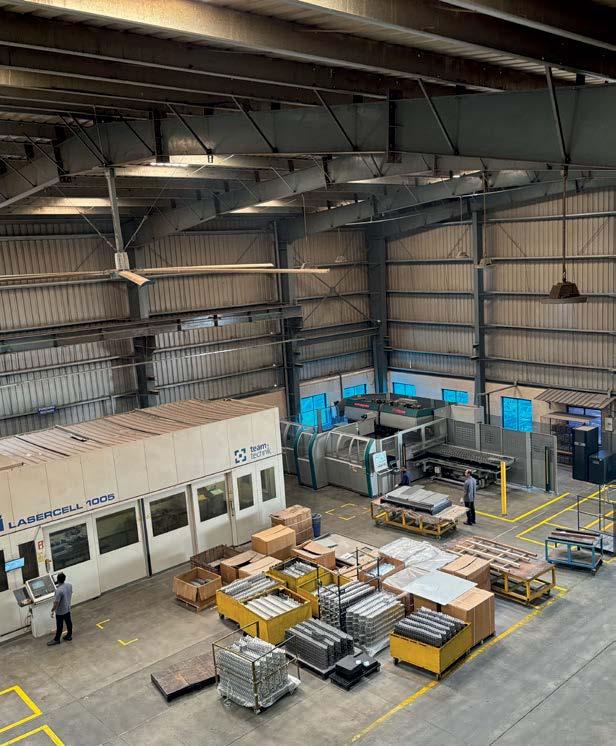

Edbro are proud to work in partnership with Hitachi supplying cylinders for some of the toughest mining trucks in the world.
The world’s toughest mining trucks demand the world’s toughest cylinders. Edbro, a UK based cylinder manufacturer part of the Orsan group of companies, have been a key partner to Hitachi on that front for more than 30 years.
Edbro and Orsan are proud to work in partnership with Hitachi supplying cylinders for some of the toughest mining trucks in the world.
Hitachi works with key suppliers such as Edbro to ensure ongoing product development of the hydraulic cylinders used on its mining trucks allow the Hitachi dump truck range to meet the toughest challenges.
Long term partnerships lead to market leading products, Edbro have supplied Hitachi dump truck cylinders for more than 30 years. Ongoing development and field experience has refined the designs and material used to provide the highest levels of reliability.
goal to deliver machinery products that focused on delivering safety, efficiency, management and optimised performance to keep project sites running smoothly.
As Hitachi moves towards the future, it has set out a Bulidng the Future 2025 plan, which began in April 2023. The plan outlines how Hitachi wants to grow as a true solutions partner, and over the last 2 years this has been the foundation for the company’s machinery and solution development. These developments are outlined in the plan to be innovative and customer-oriented, and through this adding to the expansion of its operations. A key part of this has been in Hitachi’s value chain business which consists of parts and services, remanufacturing of used parts and machinery and the rental of equipment. Plus, with the evergrowing issue of climate change, Hitachi has been set on expanding the life cycle of its products and contributing towards a more safe and sustainable society by extending the life of its machinery through remanufacturing, and the ability to rent machinery rather than purchase them. This







prevents unnecessary machinery from going to waste, enhancing the performance of mahcinery whilst in operation, and then when parts go wrong, remanufacturing to extend the life of the machinery to reduce over production and in turn help keep its customers costs low.
In April, Hitachi announced that it had launched LANDCROS Connect Insight Solution, which aims to analyse the operational data of mining machinery collected in near-real time to help customers increase the efficiency of their operations. The solutions build on Hitachi’s experience and then utilises real-time data to support further detailed analysis backed by data scientists, mechanical engineers and other consultants in the mining field, to assist customers and dealers in proposals to help maximise the performance of its machinery.
LANDCROS Connect Insight, will allow Hitachi to build a digital platform that is capable of centrally managing and interlinking data with customers, group companies and collaborating business partners to deliver solutions that will continue to optimize its machinery, particularly in the mining sector.
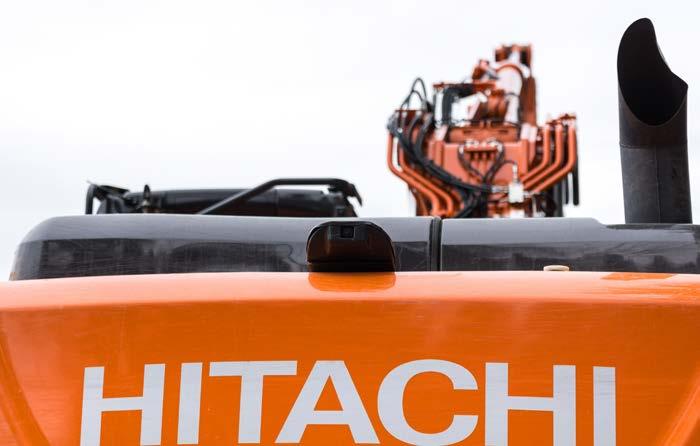
Across Hitachi’s manufacturing developments, there is a real passion for the planet in delivering the vital machinery and tools to make infrastructural developments possible, all whilst achieving these in the most sustainable way possible. With a range of leading solutions under its belt that help to enhance its machinery and almost 70 years of expertise in the construction sector, Hitachi construction is delivering vital machinery that can deliver the future of the construction sector. We look forward to seeing how Hitachi will continue to expand its innovative solutions to optimise its machinery offerings, and deliver products that meet the needs of today without compromising the world of the future.

Mr. Ashok Punjani – Director +91 9350186940 admin@carrierengineers.com ak.punjani@yahoo.com www.carrierengineers.com
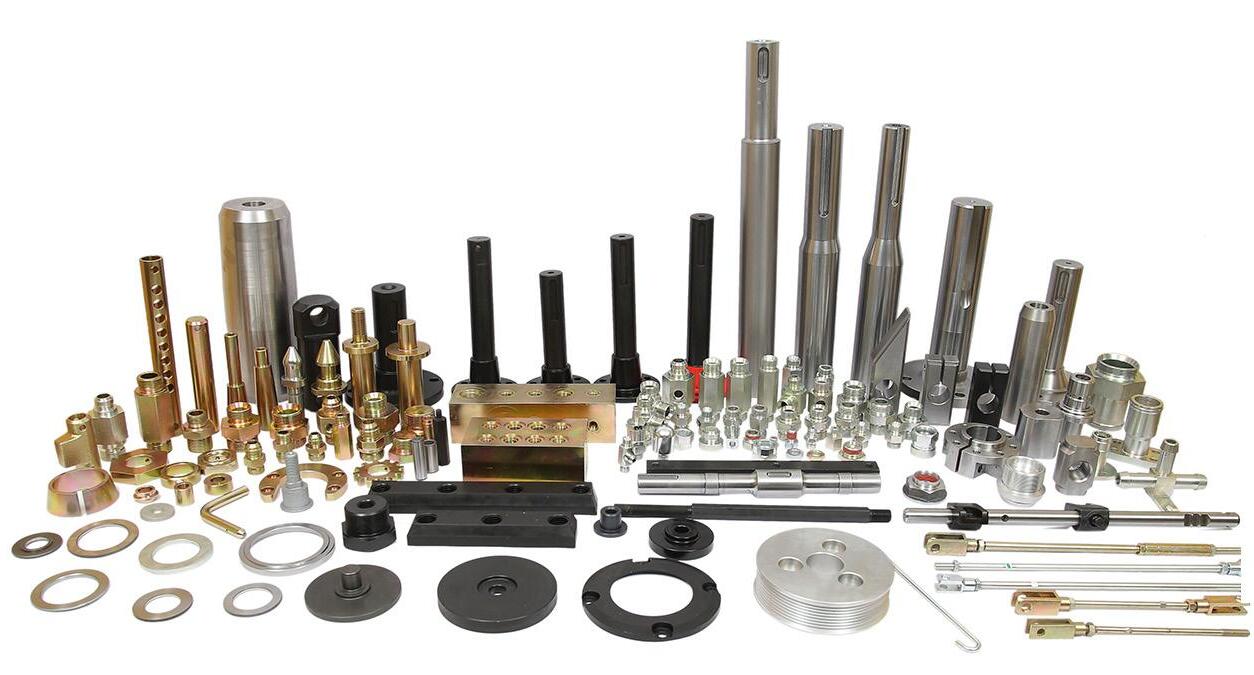
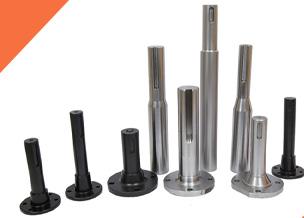












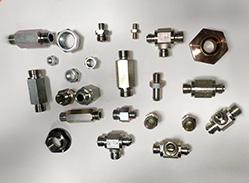


Shipping across Central America is vital to supporting the region’s economic development on both a local and global scale. Within the region, common exports include coffee, bananas, and palm oil, whilst imports span things such as foodstuffs, machinery, medical equipment, chemicals and petroleum. A key shipping company operating across Central America and supporting the movement of this cargo is A.P. Møller –Mærsk (Maersk) which helps facilitate vital shipping and logistics services between the Central American region and the rest of the world. Maersk’s role is to help enhance the region’s smooth movement of cargo and, in the process, boost the Central American economy. Maersk’s shipping solutions continue to enhance Central America’s shipping and logistics network and today help deliver vital shipping lines between the region and the European Union (EU), United Kingdom (UK) and United States of America (US).

Maersk is one of the most expansive shipping companies operating across the world, which is committed to providing an integrated transport and logistics service. Globally, Maersk provides leading shipping services that are supported by its well-connected, agile and reliable logistical solutions which span its international network, whilst working alongside local shipping partners. For Maersk, the development of companies on an international scale is underpinned by efficient logistics solutions which require expert knowledge and seamless integration into businesses worldwide. With a reliable, efficient and secure logistical network, businesses have the opportunity to move vital cargo to new markets to bring economic development and achieve strategic partnerships for the benefit of trade internationally. Therefore, when businesses, whether large or small, partner with Maersk they are accessing an international network of transport and logistics experts who are committed to getting their customers’ cargo delivered quickly, cost-effectively and securely every time.
Across the Central American region, Maersk operates these vital shipping services from its operations hub in Panama. From this hub, Maersk operates shipping lines facilitating regular connections between Central America and the US, UK and Europe. Across these routes, Maersk provides the essential infrastructure needed to deliver standard, refrigerated and oversized cargo. Maersk’s operations provide coverage on both the Atlantic and Pacific coasts via a weekly connection between Manzanillo and Balboa. These shipping lines are supported by offices in Panama City and Colon and link with Port Almirante, Port Balboa, Port Cristobal, Port Manzanillo, and Port Panama Canal.
One of the vital routes for shipping across Central America is via the Panama Canal which is an 82km artificial waterway extending between the Caribbean Sea and the Pacific Ocean cutting across the narrowest point of Panama. The canal is vital to shipping across Central America but also across the world by reducing the amount of time it takes for ships to travel between the Atlantic and Pacific Oceans. The canal means that vessels do not need to traverse the southernmost tip of South America and can instead go on a more direct route between the oceans via the canal. Every year between 13,000 and 14,000 ships use the canal and it serves more than 180 maritime routes connecting with 1,920 ports across 170 countries. With the canal being so vital to shipping across the region, it is no surprise

that Maersk utilises the canal to deliver its vital services across Central America. In fact, across Central America, Maersk makes use of vital shipping lines including those passing through the Panama Canal to deliver full container loads and less-thancontainer load shipping options across the world.
In April APM Terminals, owned by Maersk, acquired the Panama Canal Railway Company (PCRC) from the Canadian Pacific Kansas City Limited and Lanco Group/Mi-Jack. The PCRC spans 76km of single line railway which operates adjacent to the Panama Canal and helps to facilitate cargo between the Atlantic and Pacific Oceans. The railway is responsible for enhancing the logistics network across Panama. Therefore, the acquisition of the railway enhances Maersk’s operations by supporting its shipping and logistical networks across Panama to help deliver cargo via the canal and the railway links more efficiently on both a local and international scale.
Within the announcement of APM Terminals’ acquisition of PCRC, Keith Svendsen, CEO of APM Terminals, outlines that ‘The Panama Canal Railway Company represents an attractive infrastructure


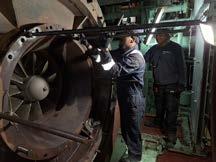
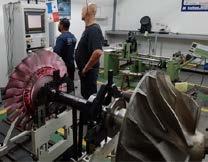


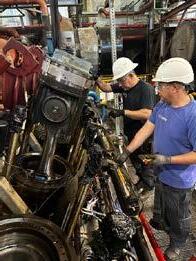

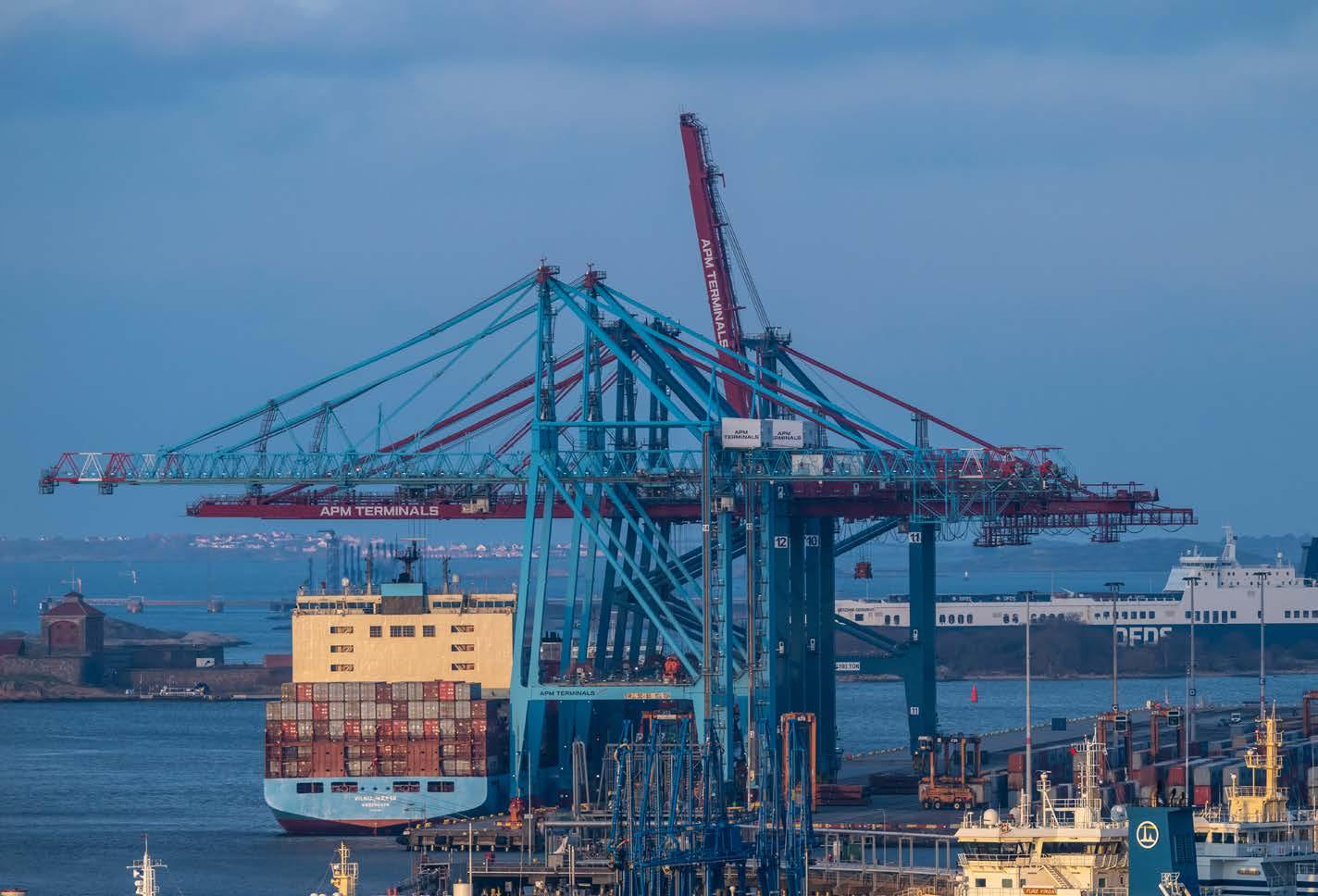
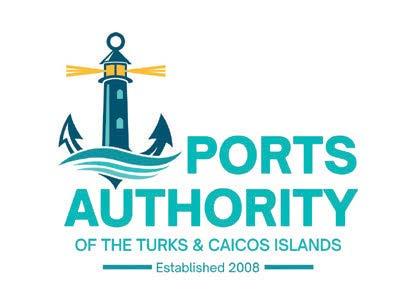


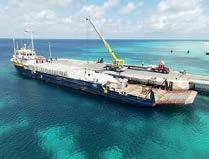

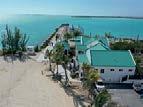

investment in the region aligned to our core services of intermodal container movement”. Svendsen continued, “The company is highly regarded for its operations excellence and will provide a significant opportunity for us to offer a broader range of services to the global shipping customers we serve”. Svendsen’s comments highlight just how valuable the acquisition is for enhancing APM Terminal’s (and therefore Maersk’s) networks across both Central America and the world.
Aside from Maersk’s vital work in enhancing the shipping and logistics across Central America, it is the company’s mission to deliver these services in the most sustainable way possible. For Maersk, it is committed to decarbonising oceans, terminals and its logistics and services. As one of the largest shipping companies in the world, Maersk sees it as its duty to deliver services that are working towards a net-zero future and so support the future of green energy through the development of its fleets and logistical offerings. In 2024 alone, Maersk introduced seven large dual-fuel methanol vessels and delivered new fuel offtake agreements. Therefore, throughout Maersk’s operations, it is focused on providing innovative low-emission logistics solutions that help its customers, stakeholders and suppliers to meet their sustainability goals.
Looking towards the future, Maersk has a range of decarbonisation goals and initiatives that it is

implementing, including the introduction of an additional 20 dual-fuel vessels between 2028 and 2029, and delivering additional green methanol offtake agreements. To help achieve these goals, Maersk is working alongside its partners, customers, and local suppliers to ensure that sustainability remains at the forefront of all of its developments going forward.
Across Maersk’s operations in Central America, it is focused on delivering vital shipping and logistics operations that help to connect the region with the world to enhance trade and deliver growth. From its
hub at the centre of the Caribbean in Panama, Maersk continues to enhance its global shipping network and provides vital operations panning from the Atlantic to the Pacific through its weekly services. Supported by its global network, regional offices and localised shipping suppliers, Maersk is able to deliver effective shipping solutions across Central America that are designed to help its customers’ supply chains no matter the industry, commodity or market.
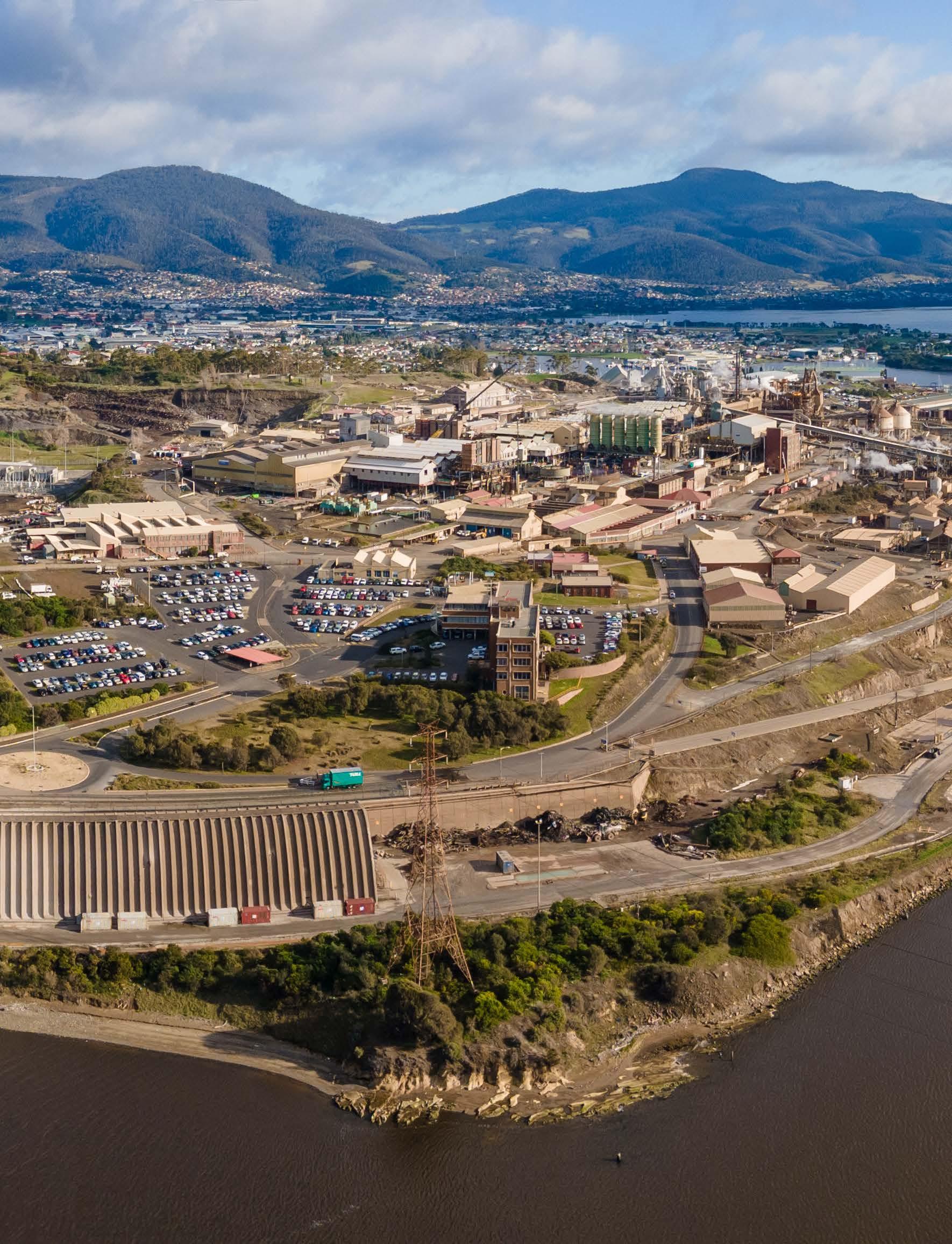

As a global company leading in the zinc, lead, and metals market, Nyrstar is on a mission to deliver vital minerals and metals essential for a low-carbon future. Nyrstar’s presence can be seen worldwide, providing leading expertise and knowledge within the metals market. With this strong foundation, Nyrstar mines, sources, manufactures, and sells high-quality products, which have earned the company its reputation as a leader in the metals market. As the world moves towards a more sustainable future, Nyrstar is well-positioned to deliver essential metals, including zinc and lead, that are crucial for the future of our planet.

Nyrstar has been operating in the high-quality zinc, lead, and other base and precious metals market for over 150 years. As an expert in the field, the company utilises its deep market insight and expertise to provide unique processing operations that ensure superior returns by extracting maximum value from mineral resources and by-products. Through a coordinated approach, Nyrstar focuses on redeveloping and operating its assets globally to optimise the concentrate feed from its mining operations to its smelters, thereby maximising metal extraction and enhancing the margins of its end-product mix. To achieve its results, Nyrstar employs around 4000 people across its operations spanning 3 continents and 9 sites. As a result, Nyrstar is the second-largest zinc metal producer, with facilities that enable it to process products from concentrate to metal in just 7 days.
Zinc and lead play a vital role in fuelling rapid urbanisation and the vital industrialisation needed for future development. Zinc and zinc alloys are primarily used in the galvanizing process of steel, as well as in the production of batteries. These are vital in producing resources that help to establish infrastructure and support the global shift towards more sustainable energy options through the creation of zinc-ion batteries. For this reason, Nyrstar is committed to developing, producing and delivering zinc products to the market to make these products possible.
In terms of lead, Nyrstar holds a market-leading position producing a number of refined products for the market including lead concentrate, refined market lead, lead-antimony alloys, copperised-lead alloys, calcium lead alloys, and calcium-tin lead alloys. However aside from its lead and zinc metal and alloy production, the company also delivers a range of other metals including indium, copper, silver doré, and gold. Across the production of all of these metals, Nyrstar is committed to delivering the vital metals needed for growth development, whilst maintaining its strict strategic priorities that support local communities in the process.
A key focus for Nyrstar’s operations is in the United States of America (USA), where the company has a range of mining operations including the East Tennessee Mines. The East Tennessee Complex consists of a processing plant and three underground mines: Young, Coy and Immel. Across
these mines, Nyrstar produces zinc thanks to the natural zinc mineralisation found in the Mississippi Valley. The mine has a close relationship with Nyrstar’s Clarksville smelter located 4km southwest of Clarksville in Tennessee. The East Tennessee Mines began operation in the 1850s when ore was discovered along Mossy Creek in the nearby Jefferson City. Whilst mining in the region began as small-scale operations, today, the region has been largely explored by several operators. In 2009, Nyrstar acquired and consolidated the operations in East Tennessee, taking three of the mines off care and maintenance to deliver consistent production across the complex.
Nyrstar also oversees the Middle Tennessee Mines, which include the Gordonsville and Cumberland zinc mines and a processing plant. Both mines are located within 10 miles of each other and were taken off care and maintenance in 2015, with production commencing the following September. The mines have continued to be ramped up and now have reached full capacity. Much like Nyrstar’s operations in East Tennessee, the materials mined



are proceeded through the Clarksville Smelter. The smelter is located 100 miles from Middle Tennessee and 250 miles from East Tennessee Mines and is vital in delivering vital zinc products for Nyrstar in the USA.
The Nyrstar Clarksville Smelter is a mediumscale and relatively modern smelter which was commissioned in 1978 to recover zinc. The smelter is located 900 kilometres (km) of the United States’ industrial land serving Chicago and Detroit. With a vital connection to this industrial landscape, the Clarksville smelter is key in delivering zinc across the country’s zinc market thanks to the one-day delivery distance between the smelter and the country’s zinc market. To help the smelter deliver its zinc products to the US zinc market, the smelter even has its own river port which aids in the efficient supply of raw materials from smelter to end market. Along with the smelter, is the Clarksville refinery which treats concentrates and so is well connected with Nyrstar’s mines across Tennessee. Currently, the Clarksville smelter is one of the only primary zinc producers in the US and provides flexible zinc smelting operations on both highgrade Tennessee-mined zinc concentrates, as well as typical zinc concentrates which are imported from South America, Australia and Europe.
The Clarksville Smelter’s operations look set to continue expanding, as Nyrstar is currently in the process of identifying new potential projects in Australia, Europe and the US, which could add to the critical and strategic raw materials produced including germanium and gallium. This would help Nyrstar expand its portfolio and offer these products to local and regional markets. Therefore, Nyrstar is currently assessing a proposed project that would see it build a state-of-the-art germanium and gallium recovery and processing facility at the Clarksville Zinc Smelter site. Once completed, the facility would produce close to 80% of the US’s germanium and gallium demand which would enhance the US national security, build towards a greener future and stimulate the domestic supply of the metals that currently are imported into the country from China.
However, Nyrstar’s metal processing operations extend beyond the US, with the Nyrstar Auby in France, Nyrstar Balen and Pelt in Belgium, Nyrstar Badel in the Netherlands, Nyrstar Hobart and Nyrstar Port Pirie in Australia, and finally Nyrstar Stolberg in Germany. With all of these operations, Nyrstar continues to highlight its expertise in bringing vital zinc and lead products to market. Its expertise in the processing of its mined resources was
highlighted with the Nystar Clarksville achieving The Zinc Mark in September last year for meeting bestin-class requirements for responsible production practices. The Zinc Mark highlights companies that promote responsible production practices along the value chains of minerals. The achievement is given by The Copper Mark assurance framework, in which a company’s operations are assessed and independently verified against 32 responsible production criteria which include a focus on greenhouse gas emissions, community health and safety, respect for Indigenous rights, and business integrity. Therefore, the achievement of The Zinc Mark on its Clarksville Smelting facility highlights the expertise, care and respect Nyrstar deliver across
its operations both at Clarksville and beyond across its wider operations.
For Nyrstar, the focus always remains on delivering vital resources that are needed to develop the world towards a more sustainable and developed future. With mining, smelting and processing operations across the globe, it is clear that Nyrstar is leading the development of zinc and lead for the future. Across its operations, Nyrstar is always striving for the best and with The Zinc Mark awarded to one of its smelters, it really exemplifies its role as a leading zinc, lead and other metals producer focused on delivering such materials that will be vital for delivering a low-carbon future.


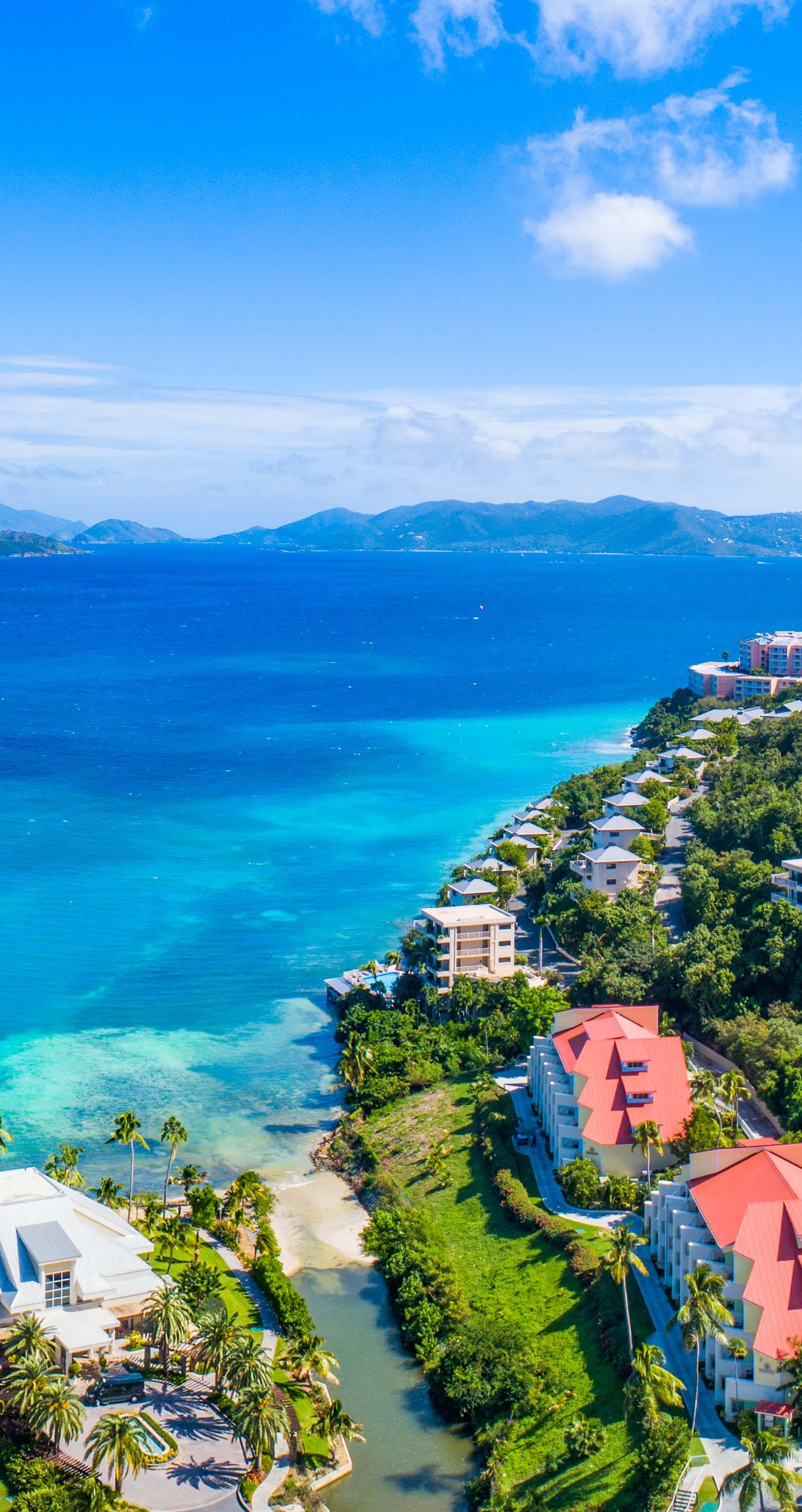
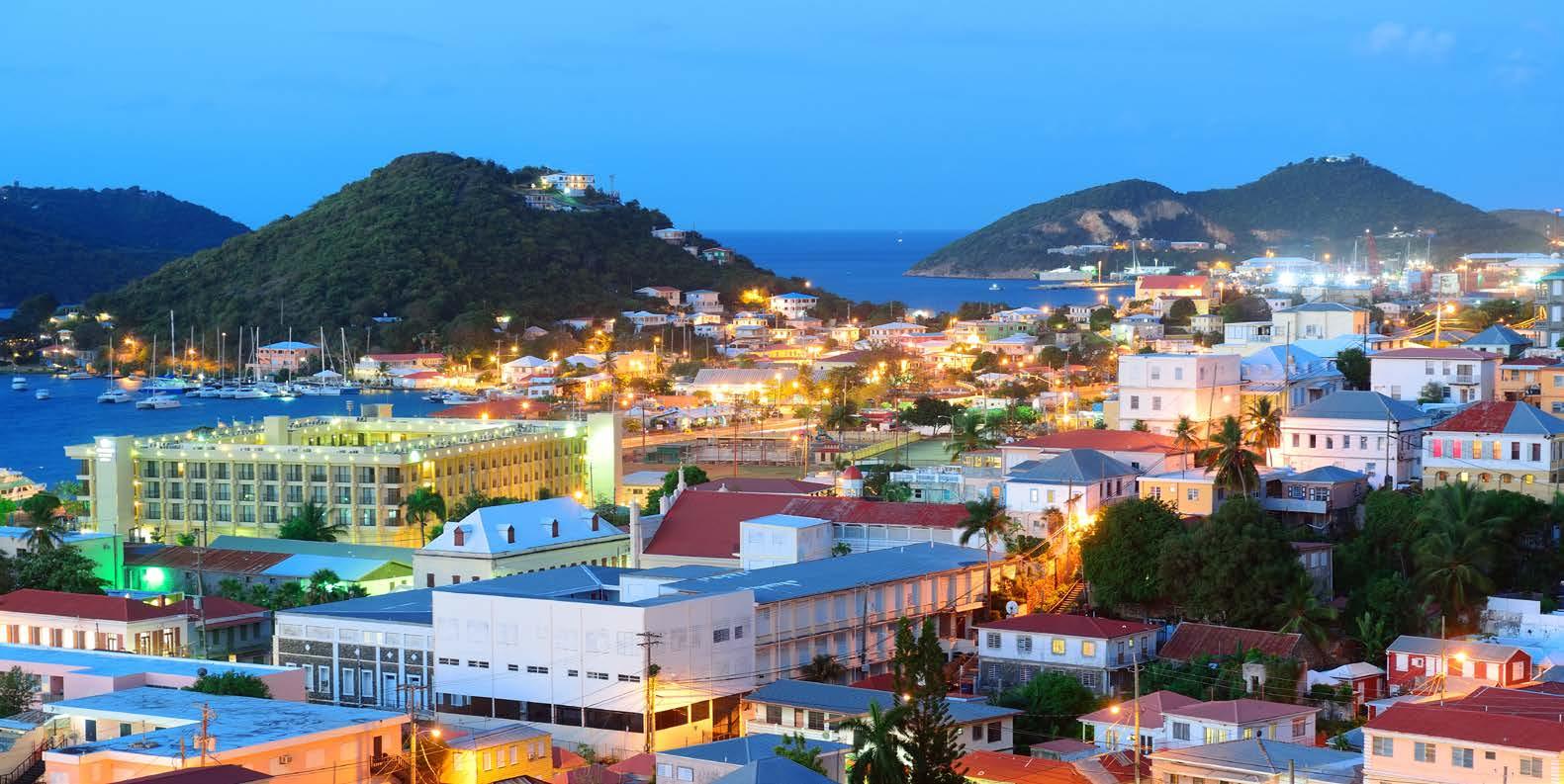
Tourism is a vital industry for the (U.S. Virgin Islands), with the islands of St. John, St. Croix and St. Thomas, as well as 50 other minor islands and cays, welcoming millions of tourists each year to experience the scenery and culture that these islands have to offer. Therefore, tourism plays a vital role in the economic development of the Islands, and it is this focus on economic development for the U.S. Virgin Islands that saw the establishment of the United States Virgin Islands Economic Development Authority (USVIEDA). The goal of USVIEDA is to promote the U.S. Virgin Islands as an attractive hub for businesses to encourage investment into the region and deliver the Islands as a vital economic hub serving both trade and tourism markets on a local and international scale.
For the last 40 years, USVIEDA has been delivering economic growth and investment across the U.S. Virgin Islands. USVIEDA was established in 2001 as a semi-autonomous government agency designed to bring together governmental entities under a single authority. These agencies work together to improve the economic development of the U.S. Virgin Islands, with a particular focus on growing the economy, generating new jobs, and turning the region into a hub for investment on both a local and international scale. However, alongside its focus on economic growth, USVIEDA wants to achieve its mission whilst improving the lives of residents within the U.S. Virgin Islands. This holistic approach to both economic and social development across the U.S. Virgin Islands is what has allowed USVIEDA to spearhead the development of the region for the last 4 decades.
Across the U.S. Virgin Islands, USVIEDA is focused on 3 central industries: natural resources and the environment, manufacturing and innovation, and finally, services and hospitality. Across these 3 key industries, USVIEDA can enhance the region’s agribusiness, coastal and ocean resources, renewable energy, light manufacturing, technology, life sciences, tourism, and professional services sectors. All of these sectors are vital to enhancing the U.S. Virgin Islands’ economy, whether via operations within the islands or as exports to markets across the US, Latin America, Europe, and Asia thanks to the region’s close proximity to international shipping lines and the Panama Canal.


In working with USVIEDA, businesses gain access to the authority’s network across both private and public sectors, trade associations and other relevant professional groups. By working with USVIEDA, businesses can leverage the authority’s network and partner databases to connect with industry experts and deliver best practices. This connected nature of USVIEDA ensures that operations across the U.S. Virgin Islands remain top quality and work towards the cohesive development of people and companies in the region. To encourage development and particularly investment, USVIEDA then can use its network to connect local and international investment entities with businesses in the region to help get local business propositions in front of the right audiences to encourage venture capital and hedge fund investments into the Islands. In addition to supporting companies throughout its network, USVIEDA has implemented vital financial and developmental initiatives that support both new and existing businesses in the region to help them continue to enhance the U.S. Virgin Islands as a hub for economic growth. These incentives include multiple tax incentive programs which help to make the Islands an attractive place for businesses to operate. Current Tax incentives
in the U.S. Virgin Islands include the Economic Development Commission (EDC) Tax Incentive Program. The program offers unique and attractive tax incentives for companies operating in the U.S. Virgin Islands. These incentives, sanctioned by the US Government, provide a competitive offshore tax benefit program that sees companies able to take advantage of a 90% reduction in corporate and personal tax income, 100% exemption on gross receipt tax, business property tax and excise tax payments, as well as a reduction in the customs duty from the standard 6% to 1%.

Island Delivery Service is your #1 “Document Specialist” when importing to the US Virgin Islands. Call us today to get your imports cleared right – the first time!
At Island Delivery Service, we take pride in satisfying our clients with everything related to custom brokerage services in general in our unique territory. To achieve these goals, we work as a team, creating processes that will help minimize the response time to our clients, while delivering exceptional, professional, and personalized service. idsstx.com


Island Delivery Service has been the trusted expert in customs clearance for the US Virgin Islands. Our seasoned consultants handle all documentation, minimize your duties and taxes, and ensure your shipments meet every regulation—before they even arrive.
Let us take the stress out of import clearance.
Island

Other tax initiatives under USVIEDA include the Enterprise Zone Tax Incentive, which is mandated to revitalise communities by providing the appropriate investments, tax benefits and regulatory relief to encourage the business community to develop financially. Additionally, the Tax Increment Financing initiative helps to use future tax revenue benefits from real estate improvements to pay for the current costs of public improvements. These funds go towards project and district-based plans, to deliver better community development for the U.S. Virgin Islands. The latest tax incentive initiative is the South Shore Trade Zone (SSTZ) Program, which is designed to leverage the strategic advantages of the special economic zone across St. Croix. SSTZ allows businesses to access a 90% reduction on income tax, and a 100% exemption from customs duties, excise tax, gross receipts tax and business property tax. USVIEDA also has the Hotel Development Program, and the Sustainable Tourism through Artsbased Revenue Streams (STARS) Program. The Hotel Development Program helps in the development of new tourism facilities, whilst the STARS program supports the production of film and TV in the region.
As USVIEDA looks towards the future, the Authority seeks to encourage more funding and the implementation of projects that will enhance the region’s economic development. A central way
it aims to achieve this is through its ‘Vision 2040’ plan, which outlines 2 macroeconomic overarching goals to enhance the region. The first goal is for the U.S. Virgin Islands to reach full employment by 2030, ensuring that everyone who wants employment across the Islands has the opportunity. The second goal is to achieve economic stability by 2040 for the U.S. Virgin Islands. This second goal aims to see no fluctuations in the Gross Domestic Product (GDP), which shows that prices for goods and services remain at a reasonable, managed, and stable rate. For USVIEDA, a stable economy ensures that growth and prosperity are possible. Within these 2 overarching goals, USVIEDA has established 8 aspirational goals that are set on supporting agriculture, research, healthcare, entrepreneurs, and renewable energy, whilst increasing the population and tourism-related revenue across the U.S. Virgin Islands. All these goals are vital to helping USVIEDA in its ongoing mission to deliver the U.S. Virgin Islands as a key hub of economic development.

With so much on offer across the U.S. Virgin Islands, from tourism to business opportunities, the USVIEDA are set on enhancing the region’s businesses to help transform the Islands into a thriving hub for economic development. From its supportive network to a range of incentives to help support new and existing businesses, USVIEDA is delivering the vital resources needed to encourage and incentivise investment into the region, whilst helping to nurture local businesses and people to highlight the U.S. Virgin Islands as a force for economic and social development.
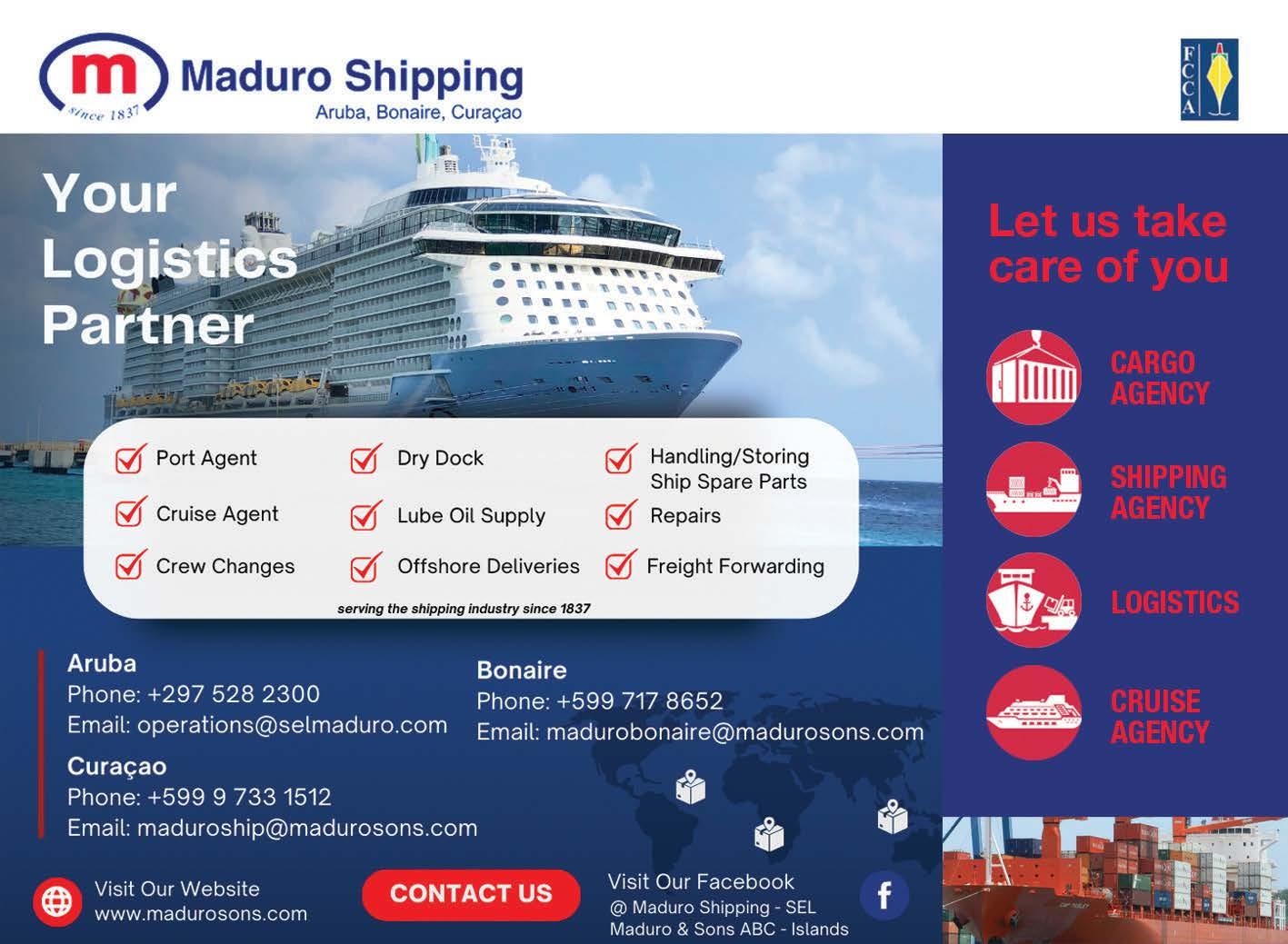
Written by Carley Fallows

Global warming has become an increasingly concerning issue as the world continues to experience rising temperatures resulting in devastation from extreme weather systems, wildfires, droughts and rising sea levels. Therefore, the Intergovernmental Panel on Climate Change (IPCC) have stated that global warming must be limited to 1.5°C to protect the planet as much as possible. To maximise the chances of reducing the temperature of the planet, the world needs to transition towards net zero by 2050 to mitigate these growing threats to our world.
Akey company pushing towards this emission reduction target is Climeworks which is on a mission to protect the planet and ensure a liveable future for generations to come. To achieve this Climeworks have developed carbon dioxide removal solutions to capture CO2 from the air and store it deep underground. With this process, Climeworks hopes to neutralise the unavoidable and historic emissions currently impacting the world.
In 2022, Climeworks broke ground on its biggest project yet, the Mammoth located in Iceland. As the name suggests, the Mammoth facility aims to take a large capacity of CO2 from the air, and through its storage partners Carbfix, deliver it underground. Carbfix takes the carbon dioxide and transports it deep into the earth, where it reacts with basalt rock and transforms into stone through a natural process. This process known as direct air capture and storage (DAC+S) means that the carbon from the air will then be locked into the ground for over 10,000 years and will no longer be able to impact our current climate.
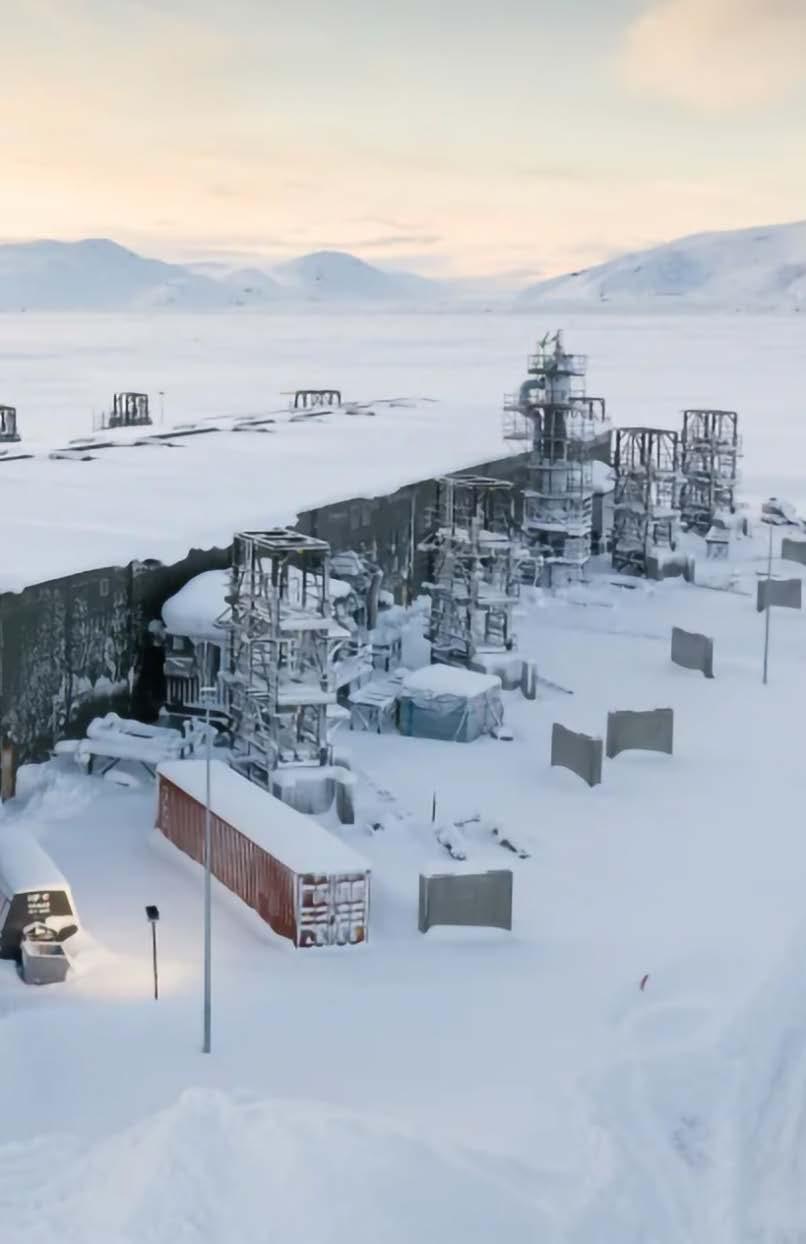
The Mammoth Facility is the second air capture plant developed by Climeworks which began with the development of the Orca Facility; the world’s first large-scale carbon dioxide removal planet upon its construction. However, today the Mammoth has 10 times the capacity of the Orca with a nameplate capacity of 36,000 tons per year. Whilst the actual net removal will be lower, the project provides a vital step to bring high-capacity carbon removal options to the market.
The Mammoth represents a key step that companies can take in scaling up carbon reduction, and for Climeworks it aims to reach a megaton capacity of carbon reduction by 2030, and a gigaton by 2050. Across its facilities, Climeworks markets its carbon removal service to businesses and individuals across the world who are passionate about climate change, and so can take direct action by permanently removing the emissions of its operations through the DAC+S facilities. Ultimately, carbon reduction is not going to be possible unless companies and individuals across the world work together towards a future of net
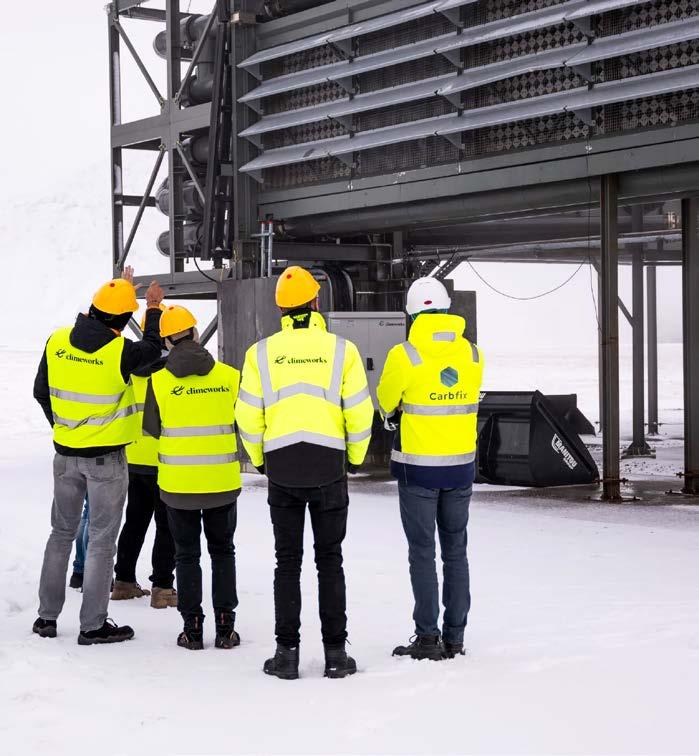

zero. With Climework’s Mammoth Facility, removing carbon from the atmosphere and storing it deep below the ground seems to provide an effective and permanent solution which will be vital for the future of the climate. Therefore, Climework’s operations look set to shape the carbon reduction future for the benefit of generations to come.
Source: https://climeworks.com/

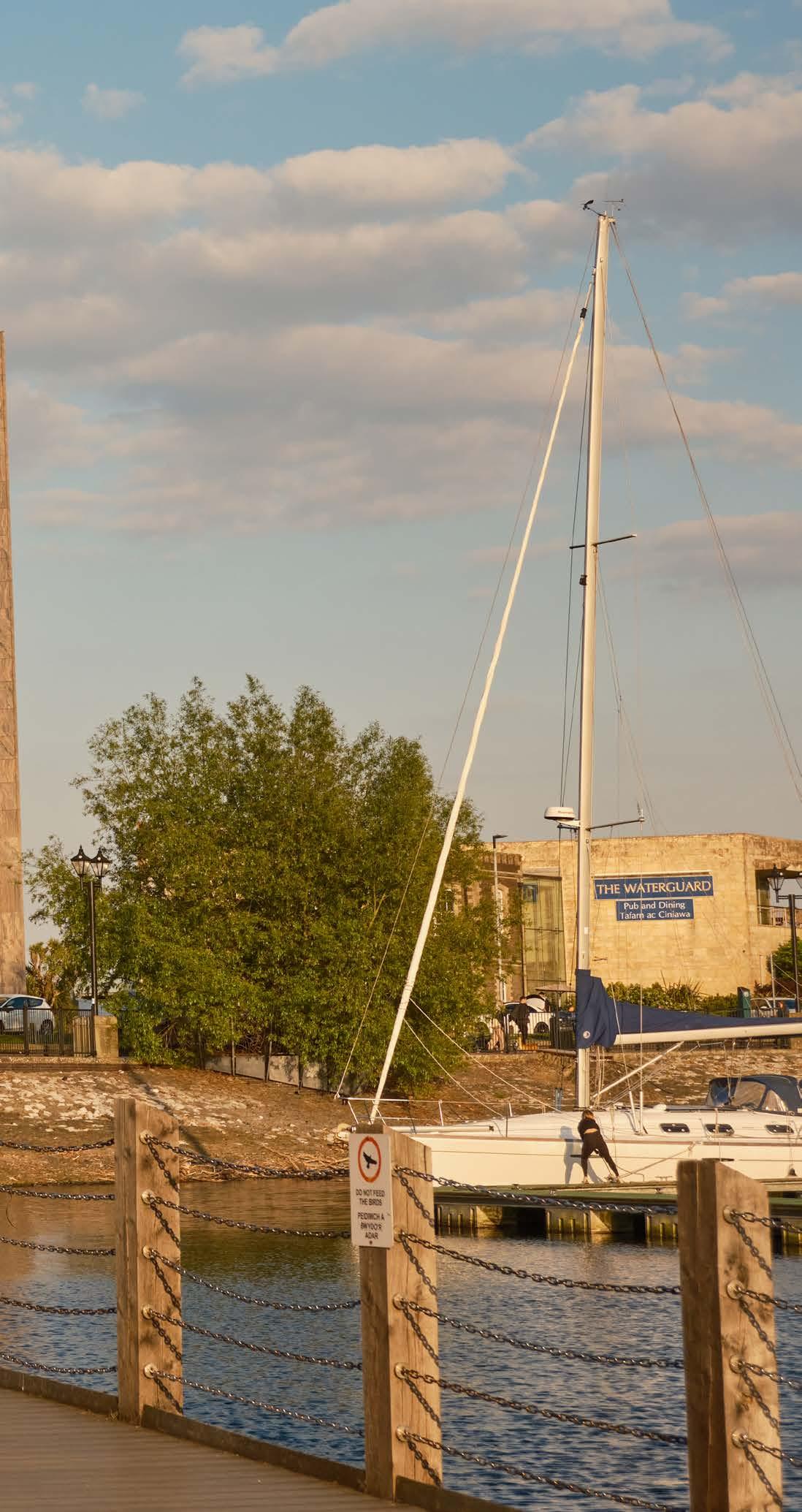
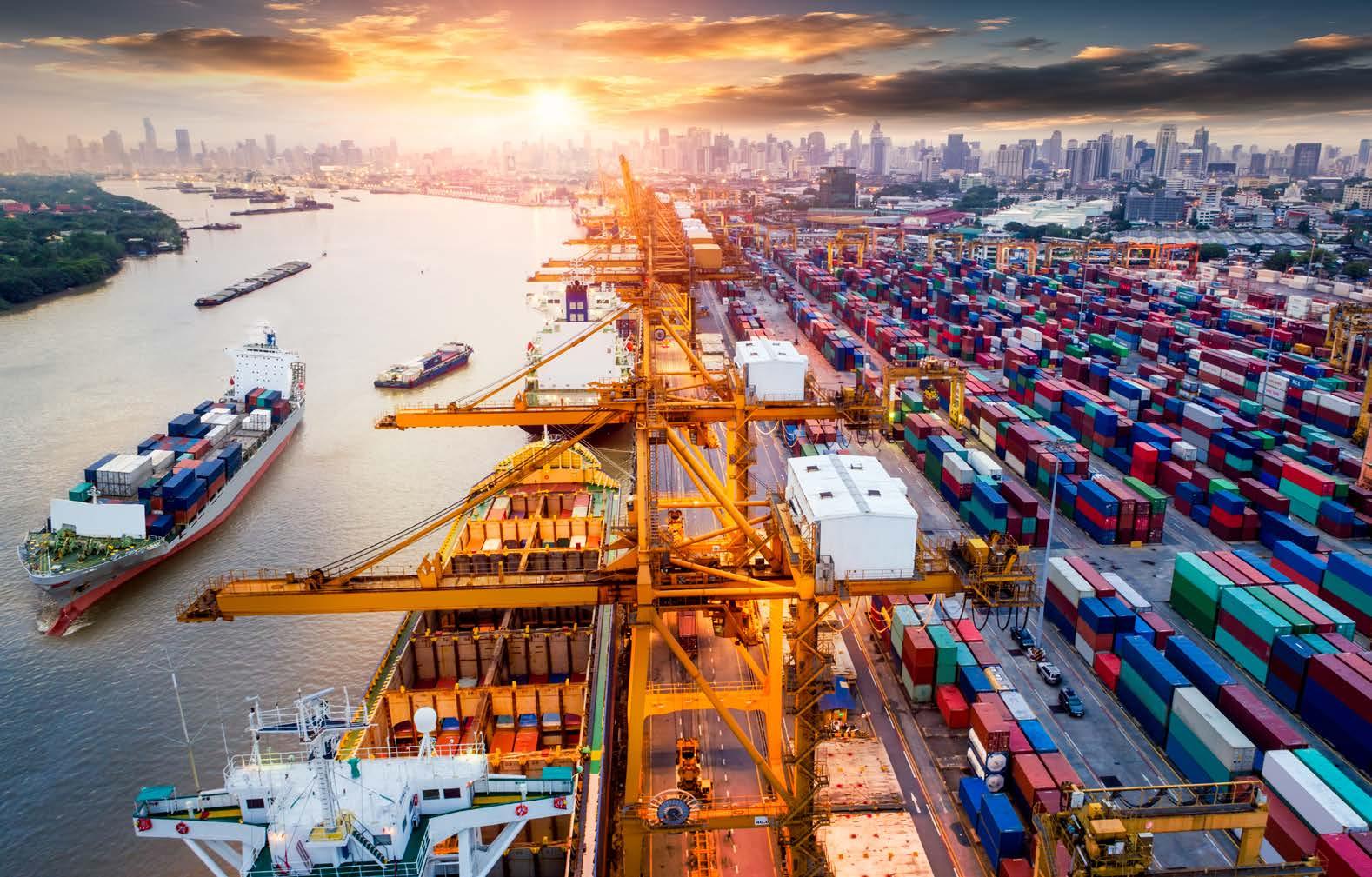
Across the globe, the Atradius Group has been providing leading trade credit insurance, surety and collection services to help its clients achieve greater financial security. With the trade of goods and services accounting for so much of a business’s operations, having extra security to ensure that payments for these are received helps to provide additional peace of mind, especially in the current economic landscape. In the United States specifically, Atradius Trade Credit Insurance Inc. (ATCI) is focused on offering straightforward, cost-effective and flexible credit insurance solutions that help to protect its customers. With offices across the country, supported by the global company’s international network, ATCI provides specialist expertise to help its clients achieve greater financial stability.
ATCI, headquartered in Baltimore, Maryland, provides trade credit insurance which aims to help protect its customers from losses that may be caused by a customer’s client failing to pay an invoice whether through insolvency, a refusal or inability to pay, or under the terms of the contract. The central role of ATCI is to provide an insurance policy which meets its client’s business needs and accounts for the individual trade exposures that each business poses. ATCI’s solutions centre around credit insurance, and the global Atradius Group is one of the world’s leading credit insurance companies offering its services across 50 countries worldwide.
The main focus of ATCI’s credit insurance is to assure its customers that they will receive payments for the services they provide. ATCI customers benefit from the company’s services which help settle invoices and collect funds where possible. All customers need to do is flag the receivables to ACTI who will then try and collect the funds from the original client. If it is not possible for ACTI to collect the funds, the company will settle the invoice for its customer. This insurance policy allows ATCI to provide a straightforward, cost-effective and flexible insurance policy for businesses to ensure they are always paid for the goods and services
they supply both within the US and abroad. ACTI’s policies are simple and broken down into a modular policy that can accommodate varying levels of risk and insurance needs for its clients. This single policy approach allows ATCI to provide a customerfit solution and policy that is suited to each business’s coverage and reflects their respective trade exposures.
One of the main reasons ATCI remains competitive is by focusing on receivables, which make up such a large portion of a business’s day-to-day finances. These are fundamental to the financial health of a business, and so with the support of ACTI’s trade credit insurance, customers can continue to grow their businesses knowing they will be paid for their services. Furthermore, with the support of ATCI, businesses gain greater financial security as it allows larger companies to explore new markets and offerings, whilst helping smaller and mediumsized businesses to be able to grow supported by financial stability. This need for financial security in today’s market is more important than ever to ensure that companies can maintain their growth

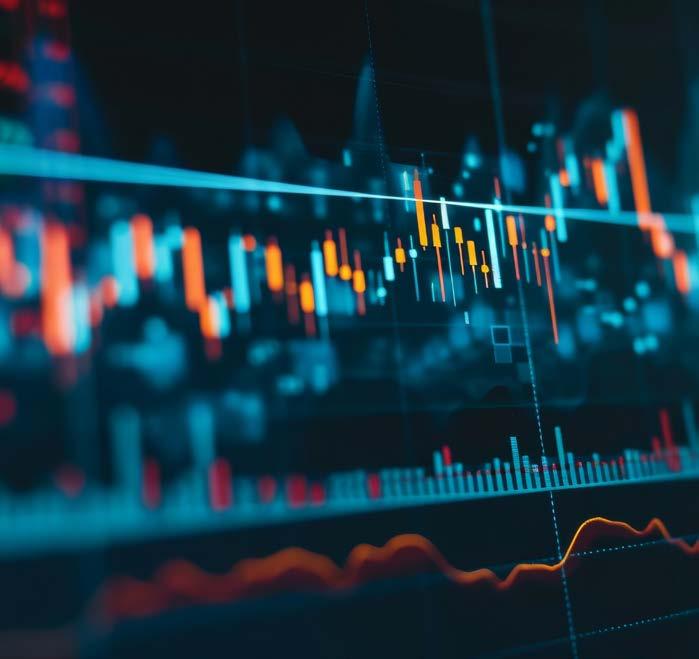
supported by ATCI’s leading trade credit insurance services. Additionally, ATCI helps provide banks with the necessary reassurance when extending finance to ACTI customers’ businesses. With the support of ATCI, banks can provide finance, knowing that a business’s receivables will be relatively consistent and all issues will be supported by ATCI’s insurance policies.
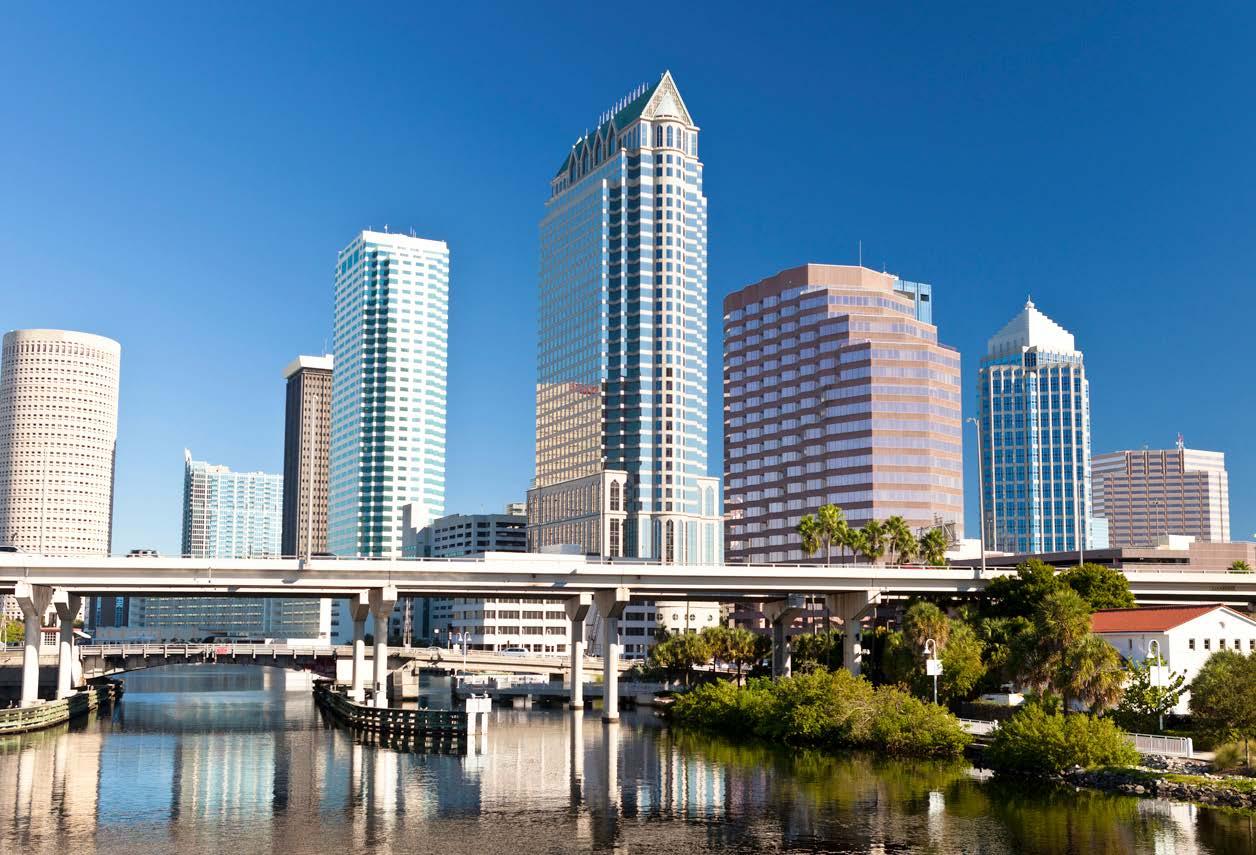



One of the vital aspects of ATCI’s insurance is its multinational credit insurance solution which is supported by Atradius Global’s team which provides trade credit insurance needs to businesses operating both in and out of the United States. ATCI is supported by its multinational team which is committed to providing its services supported by a team who will speak the language and know the culture surrounding each client or claim made. This ensures that the team can provide local expertise and knowledge to ensure it delivers the best possible trade credit insurance across all corners of the globe.
ATCI customers also gain access to Atradius Collection which is a team of experienced debt collectors who have the necessary skills and understanding to recover money through bespoke worldwide debt collection services. As ATCI customers, all businesses can access and benefit from these debt collection services at no additional cost. However, should you need a standalone collection service, Atradius Collection also provides its services on a single-situation basis to customers who are not existing ACTI customers. The teams deliver their expertise to collect the necessary funds utilising their skills and knowledge within the
debt collection sector. This allows ATCI’s customers to focus on their day-to-day operations, whilst knowing ATCI is working on collecting their money using the appropriate legal and financial expertise.
As ATCI looks towards the future it is set on continuing to support ambitious multinationals looking to partner with the right trade credit insurance providers to help drive growth supported by financial stability no matter where they trade. With the appointment of Nikki Kastanakis as the Head of Global – North America, Kastanakis will lead the Regional Global team to strengthen ACTI’s relationships with its existing policyholders and partners in the US, Canada, and Mexico. Kastanakis is set on helping reinforce the company’s presence across the region and help deliver reliable trade credit insurance policies for its customers across both US and global markets.
Across ATCI’s operations, there is a real focus on helping its customers succeed by helping each one make the necessary decision to grow supported by a reliable trade credit insurance policy. With each policy tailored to its customer’s specific needs and





trade exposures, customers know they are going to be supported by both local and international teams that want to ensure they receive their funds on time. We look forward to seeing how ATCI continues to provide essential trade credit insurance to customers across America, and abroad supported by its team of experts in the industry.










































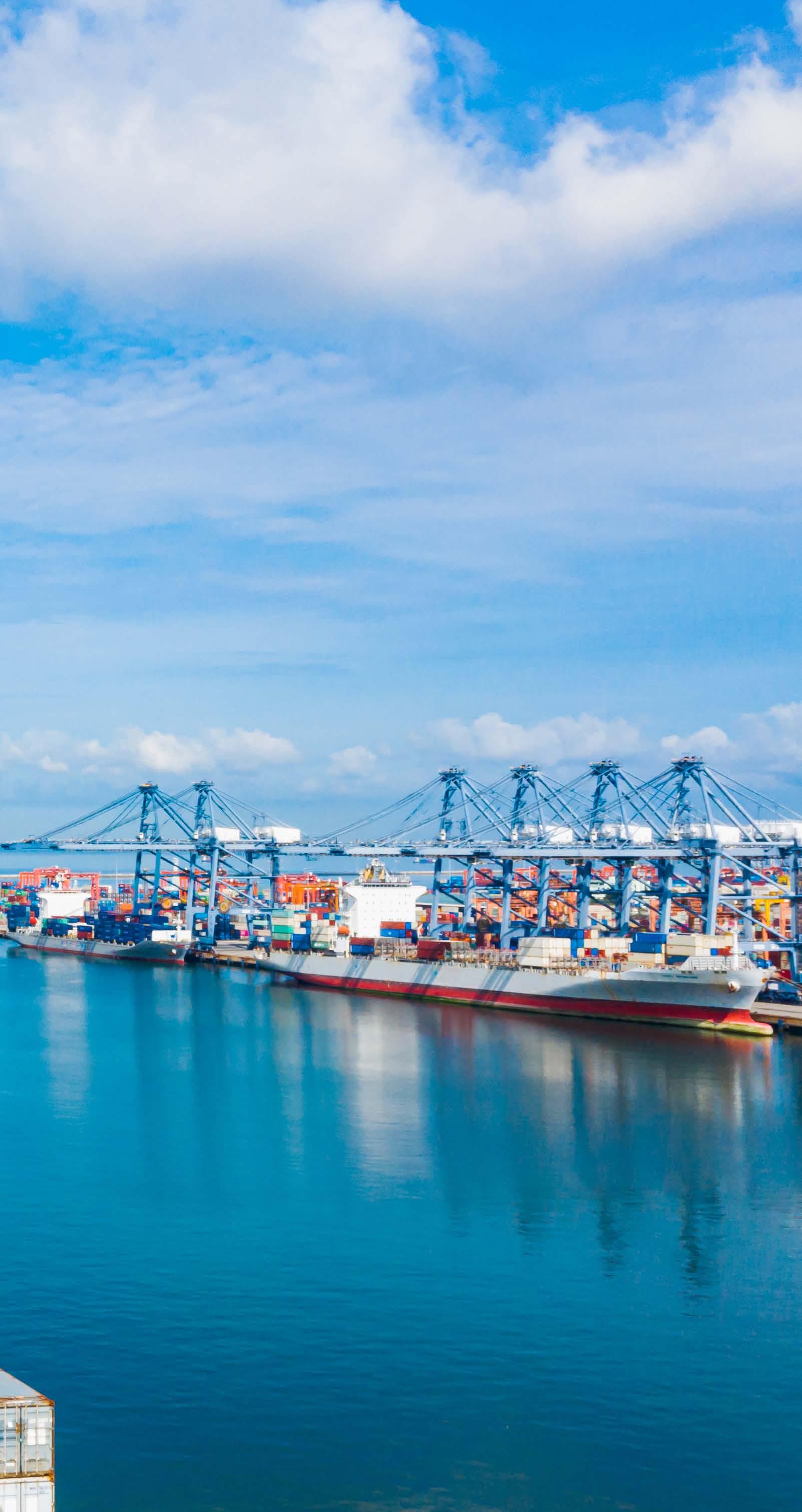
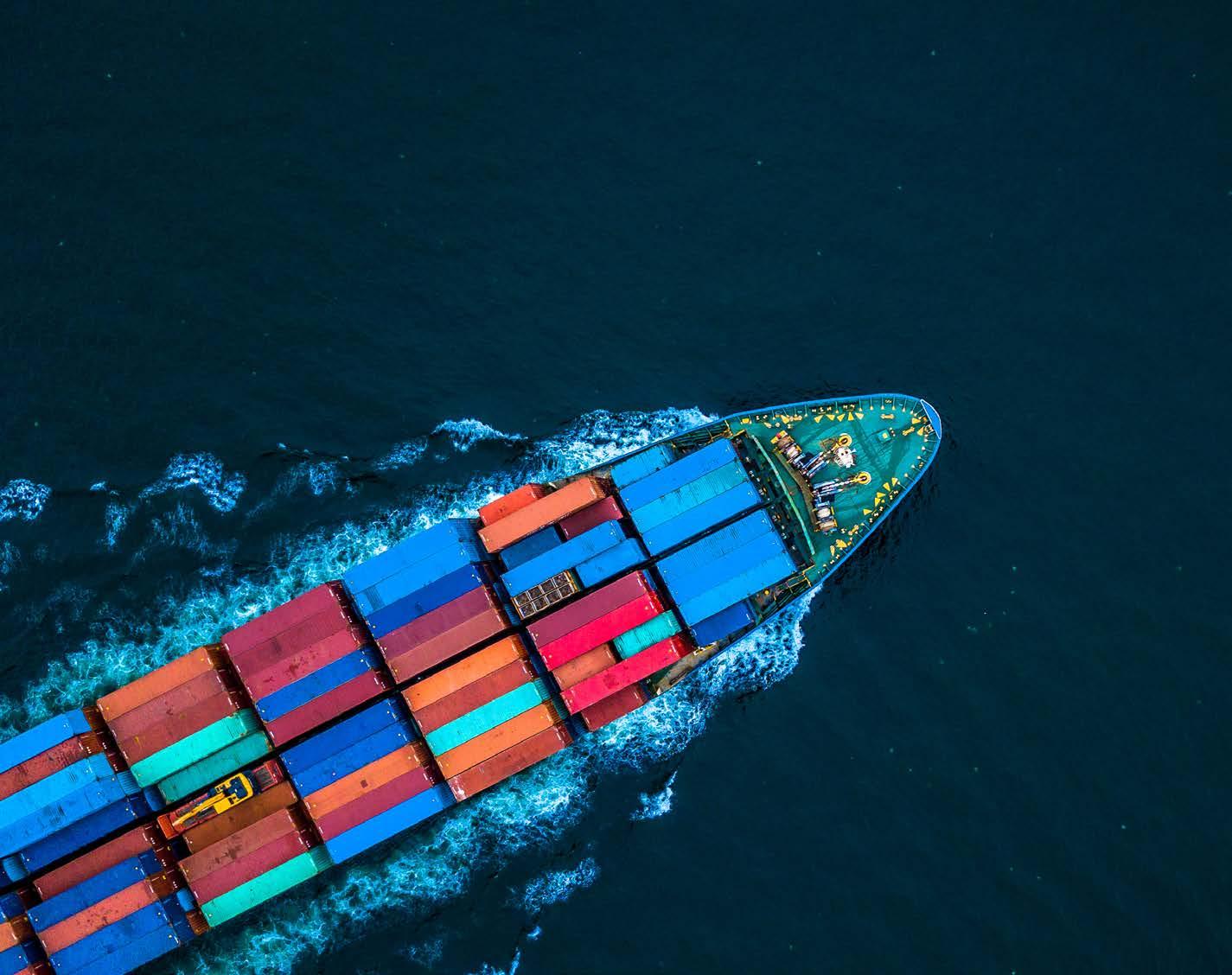
As the most trusted cargo and freight shipper in the Caribbean, Tropical Shipping has spent the last 53 years providing leading shipping services from the Caribbean to Canada. Each shipping operation is underpinned by Tropical Shipping’s commitment to excellence, which has built its reputation as a customer service-first company that values responsiveness, trust, and accountability across every aspect of its operations.
Tropical Shipping’s heritage extends back to 1963 when it first sailed from Freeport in The Bahamas, carrying machinery and building supplies. This began the company’s strong relationship with The Bahamas as a key porting location, and now its network has expanded across the region. Today, Tropical Shipping operates ships from Canada and South Florida to the Caribbean and The Bahamas, as well as inter-island transportation services across the whole region. Throughout its operations, Tropical Shipping remains focused on providing the best possible shipping solutions handling every type of cargo from grocery products to building materials.
Across all of Tropical Shipping’s operations, it is committed to ensuring that it can deliver any cargo type no matter the size, frequency or location through its integrated networks. Throughout these networks, Tropical Shipping specialises in refrigerated cargo delivering millions of tons of groceries annually. For refrigerated cargo, the company has precise monitoring and computerized refrigeration equipment which ensures that all frozen and chilled cargo reaches its destinations







(649) 941-3662
www.ports.tc
in perfect condition and at the appropriate temperature every time.
Then for dry goods, Tropical Shipping’s network allows cargo to be shipped directly to the company by any supplier or shipper in Canada and the US via road or railway, which will then be picked up by its vessels at ports across the country for delivery to The Bahamas and across the Caribbean. Through its complete cargo transfer operations, Tropical Shipping is ready to utilise its full-load cross-dock operations to get cargo off any truck, rail car or container and onto its end destinations.
However, Tropical Shipping’s ability to move cargo also extends into its inland transportation service which is committed to providing reliable and timely delivery of goods. This has become one of the company’s primary services which helps Tropical Shipping to meet the needs of its customers in often specific and customisable formats. This is one of the main draws of Tropical Shipping’s operation on both a local and international scale, as it is committed to providing complete solutions to take the stress away from its customers.

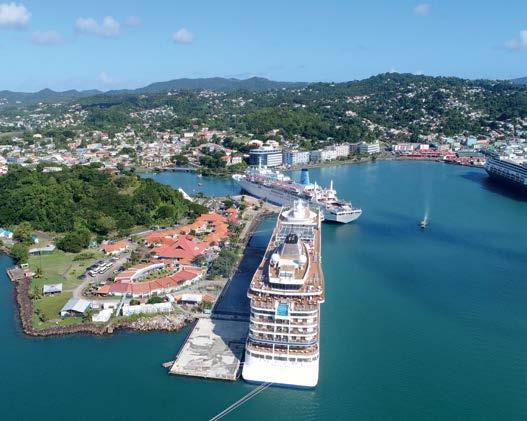

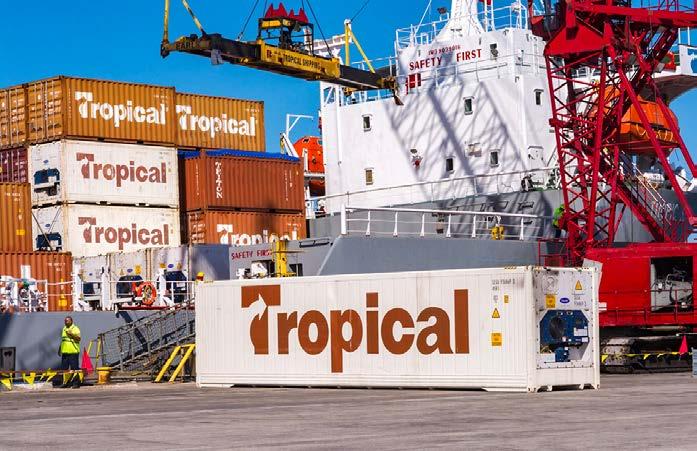
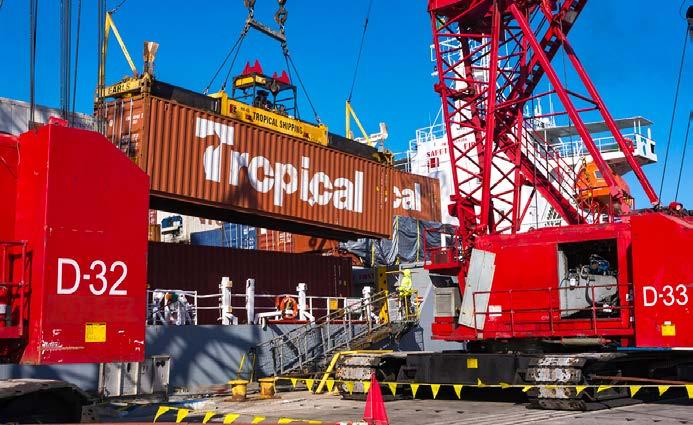

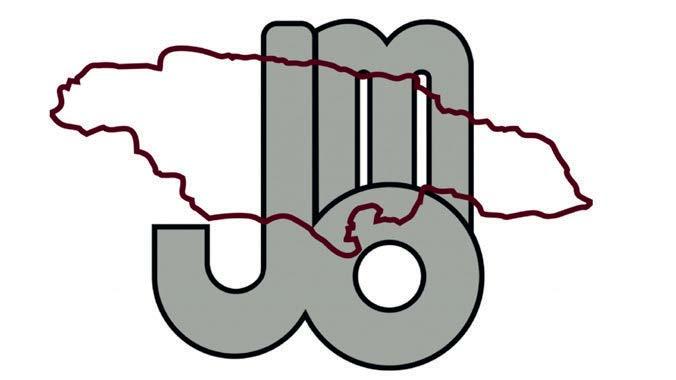

REYNOLD’S PIER IS A MIXED-USE PORT IN OCHO RIOS OWNED AND OPERATED BY JBM.
JBM’S GREEN PORT REVOLUTION AT REYNOLD’S PIER!
JBM is transforming Reynold’s Pier into Jamaica’s first multi- functional “green port,” powered by sustainable energy. The port will soon run on an 84% solar-powered system, cutting CO2 emissions by 220,500 kg. This upgrade provides shore-to-ship power, allowing cruise and cargo vessels to plug into clean energy instead of diesel, boosting efficiency and reducing pollution.
Positioned strategically for limestone export and cruise tourism, the new Reynold’s Pier is paving the way for enhanced trade, eco-friendly tourism, and continues to be the primary exporter of sugar internationally. JBM is helping to provide a sustainable future for Jamaica.



Jamaica Bauxite Mining Limited (JBM) is a government entity managing over 4,000 acres of government property, providing essential services to both local and international businesses. With four strategic units— Commercial Property, Port Management, Land Development, and Custodial Management — JBM monitors the operations of Discovery Bauxite Partners - a bauxite mining operation based in Discovery Bay.
As proud operators of Reynolds Pier in Ocho Rios, JBM offers top-tier dry dock services for small to medium-sized crafts, bunkering, and berthing for large vessels. Logistics and cargo partners can benefit from short-term leasing options and dockside equipment, making JBM a one-stop shop for all vessel and cargo needs in Jamaica and the Caribbean.
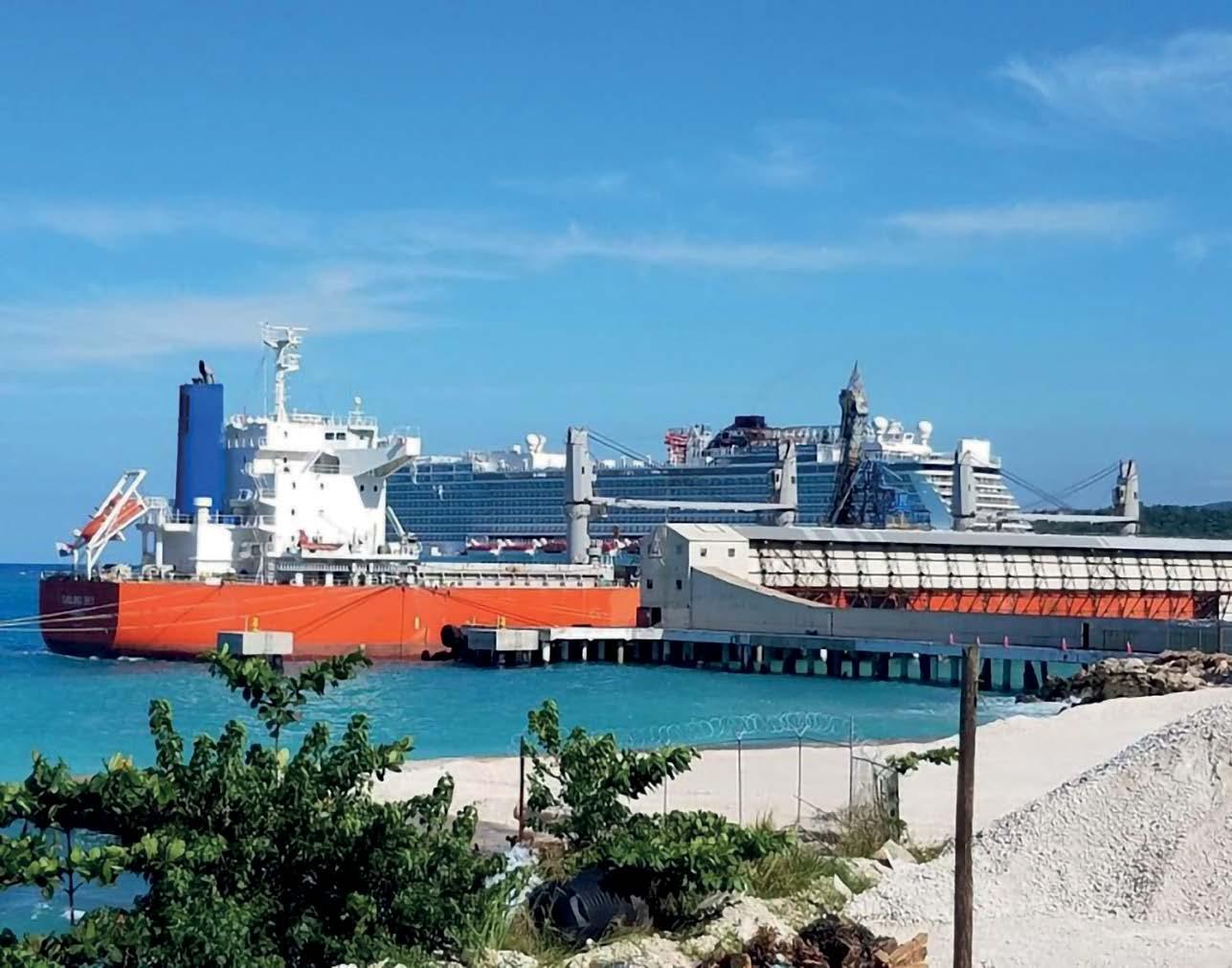

Our Services Include:
• Port and Operations Management
• Land Development
• Commercial Development & Property Management
• Custodial Management


Over 30 years of experience in the industry, our team of seasoned professionals know the ins and outs of the cargo business. From break bulk cargo to containerized shipments, we've got you covered.
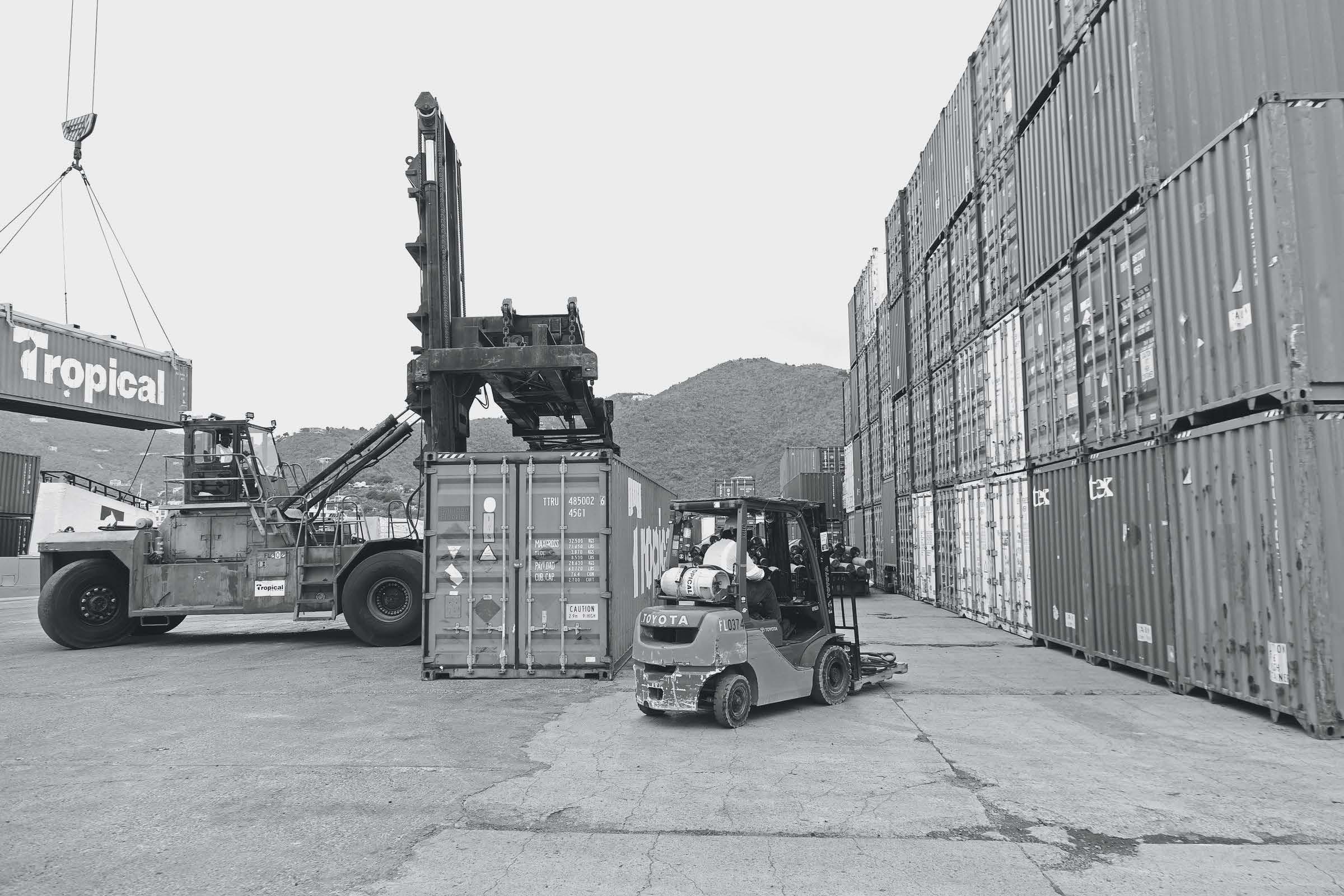
284.852.2500
2 Purcell Road
P.O. Box 4
Road Town, Tortola, VG1110
British Virgin Islands
across its less-than-container-load (LCL) and full-container-load (FCL) shipments to help its customers get the best deal with a completely integrated system. Through this system, customers benefit from more costeffective supply chain solutions supported by Tropical Shipping’s reputation for excellence throughout every single shipping operation.
Aside from direct shipping and transportation operations, Tropical Shipping is also a vital marine cargo insurance provider. The company’s marine insurance division is underwritten by Seven Seas Insurance Company and provides shippers across its operations competitive rates for protecting their cargo throughout shipping operations. It ensures that customers are met with top-quality pricing supported by its dynamic workforce operating across 32 locations spanning many ports across the region. This has been a vital aspect of the

company since its early days of operation in 1967 and continues to play a key role in ensuring that all cargo transported across the region is supported by a company that cares about every cargo operation and claim.
As Tropical Shipping has continued to grow, it has expanded its global logistics offerings through vital partnerships with global carriers. Through these strategic partnerships, Tropical Shipping has been able to move freight from ports across the world to destinations across The Bahamas and the Caribbean. As it continues to build up this international network, it has grown its reputation as the shipper of choice for cargo heading into and out of this region, and onto global markets. Tropical Shipping announced in September that it was enhancing its LCL services to Suriname and will now offer a weekly service from the Port of Palm Bean to Paramaribo. This new link further extends the company’s network across South America and provides yet another vital port that Tropical Shipping utilise to make cargo shipments even more effective, economical, and reliable.
Tropical Shipping also announced in September that it was beginning a strategic partnership with
Tibbetts Logistics in the Cayman Islands. Tibbetts Logistics has been appointed by Tropical Shipping to lead the logistics services for customers and further extend the supply chain offerings to customers in this region. The collaboration is aimed at strengthening Tropical Shipping’s long-term commitment to the region by simplifying its business operations in the Cayman Islands and optimising supply chain management by utilising Tibbetts Logistics’ understanding of local distribution networks. By utilising Tibbetts Logistics’ expertise across the Cayman Islands, Tropical Shipping can then adopt its network in partnership with it to deliver even more shipping solutions further across its network in South America.
What we have seen across Tropical Shipping’s operations is a commitment to put its customers
first and deliver shipping solutions that are integrated, comprehensive and efficient. Through its vast networks both by land and sea, the company is committed to ensuring that cargo travelling from Canada and South Florida can reach vital markets in The Bahamas and the Caribbean. Its expertise in customised shipping solutions and dedication to partnering with local logistics providers across the region has enhanced its position and provided it with a firm reputation as the most trusted cargo and freight shipper across the region for over 5 decades. We look forward to seeing how Tropical Shipping continues to expand its operations over the coming years to further develop its networks across the region, and access even more vital markets across the America, Caribbean and The Bahamas.
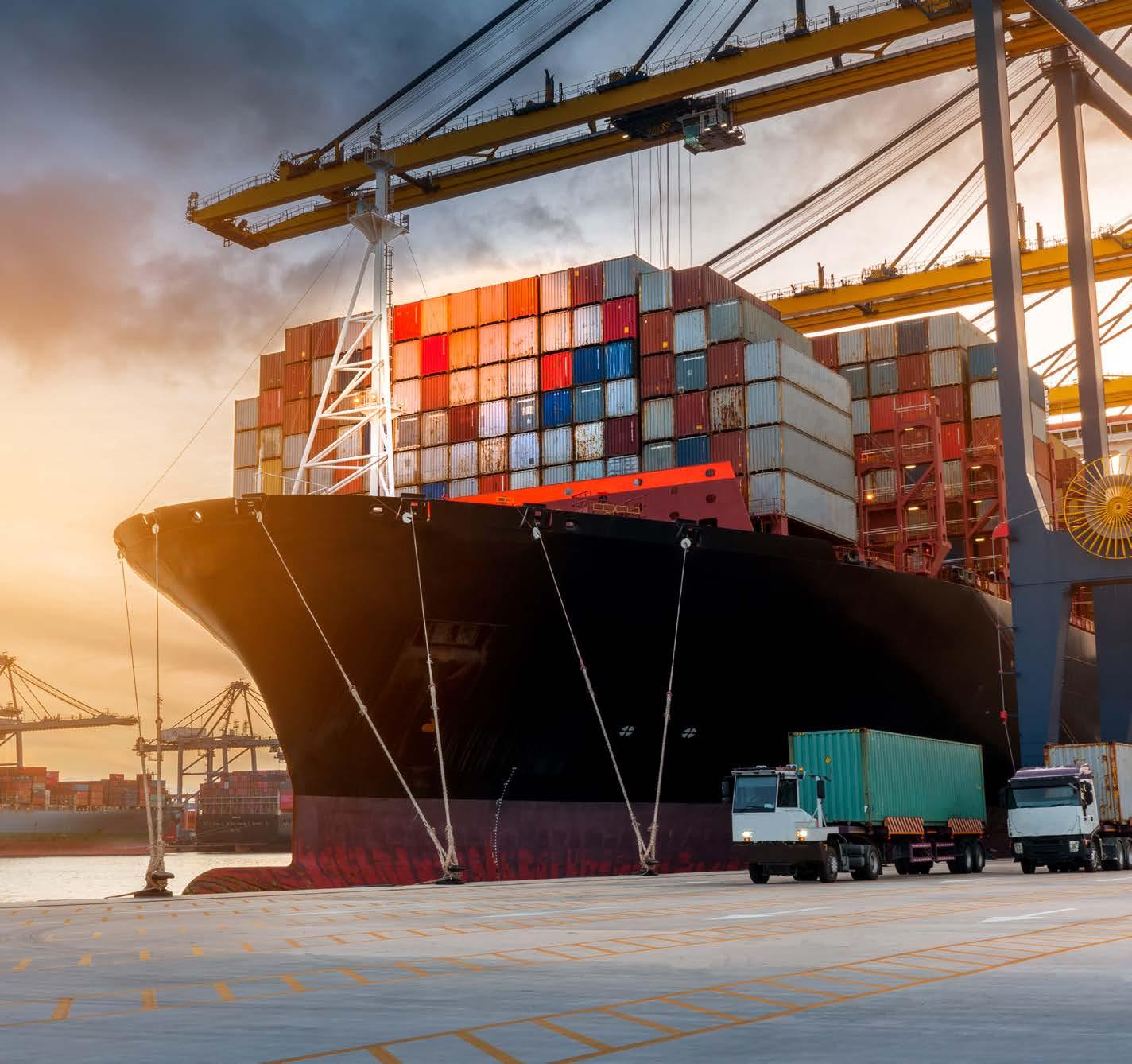


Banks and financial institutions play a vital role in all of our lives every day; from personal savings and loan applications to giant global conglomerates utilising banking services to carry out all of their transactions. No matter the person or business a regulated, developed and supported financial sector is crucial to ensuring continued economic success on every level. This was a key concern in the Caribbean where it previously relied on external providers for financial services. Therefore, the Caribbean Association of Banks (CAB) was established in 1974 to provide a unified voice that would protect, promote and strengthen the region’s financial institutions by focusing on regulation, education and advocacy. Now 50 years after its establishment, CAB leads the Caribbean financial sector with its commitment to ensuring that Caribbean banks and financial institutions are given the necessary network to achieve success every day for their customers.

CAB’s legacy has extended across the Caribbean Region for the last 50 years but was first formed as the Caribbean Association of Indigenous Banks. This establishment came following a decision at the Head of Government Conference in 1973, and the Inaugural Meeting of the Standing Committee of Ministers responsible for the finance sector. They noticed the need for a governing body that would oversee the industry and move away from the region’s reliance on external providers for financial services. With the ability to take more direct control over the Caribbean financial market, the company, which would later change its name to CAB, could then have more influence over the industry on issues impacting the region and implement its own regulatory frameworks to support the region’s economic future.
Today, the company brings together a community of 56 banks and financial institutions, 17 service members comprising regional and international technological and professional institutions as its members, with the addition of 6 associate members. Also under its membership are three honorary members, which include the Caribbean Development Bank, CARICOM, and the Caribbean Centre for Money and Finance. CAB’s members operate across 20 countries, the majority of which are in the Caribbean and South America, with a few members based strategically in Canada and the USA. The main function of CAB is to promote and strengthen the Caribbean sector which it achieves through lobbying and negotiation with local and international industry and governmental figures, along with CARICOM’s Council of Finance and Planning (COFAP) which allows its members to have more influence on policy decision making to impact the industry.
To continue to expand its network, CAB focuses on marketing across conferences, online and with the delivery of its mailing lists/newsletter to share its role in the industry and promote Caribbean financial services across international markets. CAB’s annual conference is its fundamental networking event which brings together heads of financial institutions, government officials and governing bodies to share in discussions around the Caribbean’s banking industry. This year the conference, hosted in October, celebrated 50 years of operations for CAB and allowed for vital talks into the development of banking for the future of the industry.
However, the annual conference is not CAB’s only vital meeting of industry heads to discuss
the financial sector, CAB also leads the CEO and Director Forum which focuses on tackling issues and challenges facing the Caribbean’s banks. The forum began in 2016 to tackle the growing issue of de-risking across the region’s financial sector. De-risking refers to the constraints and potential termination of banking relationships with clients across the world to mitigate risk, which results in international banking institutions being prevented from providing services in many regions. The meeting was attended by CEOs, directors, compliance professionals, technical service providers, a US legal representative and a potential provider of correspondent banking services. The first meeting looked into the issue of de-risking explored potential solutions and developed a set of actions in response to this threat.
The CEO and Director Forum has remained a vital part of CAB’s operations, with the company holding their 8th conference in June focused on fortifying resilience against challenges endangering the financial services sector. The themes of the meeting focused on ‘Building Resilience Today: Securing






Tomorrow’ and working towards a unified goal of moving the developing the Caribbean financial sector for the future. Speaking at the recent CEO and Director Forum, Ms Leesa Kow, Chairperson of CAB, said “As an Association we must continue to confront the challenges and prepare for opportunities, including the clear trade opportunities emerging in countries such as Guyana, so that we can stimulate and facilitate increased trade between our CARICOM nations. Our adoption of the technology and adaptation to the changing environment will be key to us taking advantage of all opportunities and so we must be prepared.” Leesa also went on to talk about how important the Forum is to get these kinds of vital dialogues going amongst industry leaders and their international counterparts. Her comments once again reinforce just how vital these initiatives and events are for CAB and the entire banking sector in the Caribbean.
Alongside its key marketing and networking operations, CAB is committed to developing the finance industry for the future through education. To ensure that customers receive the best possible financial services across the region, CAB provides its members and their employees with a range of webinars and programs to help them develop skills and qualifications to further benefit the sector. Its current webinars include one on privacy and data governance in the Caribbean financial sector, and another providing a single day bootcamp to improve productivity and accuracy by using Excel.
All of the training programs are provided to CAB by the Caribbean Governance Training Institute (CGTI) which is the number one governance and training certification institute in the region and therefore is the exclusive training provider with CAB.
However, for employees and members who already have extensive knowledge of the banking industry, CAB also provides a Chartered Banker programme. The programme is aimed at professionals who have already been working in the industry for a decade, and specifically in the banking and financial sectors for at least 5. The 12-week course provided the candidate with an accreditation that recognises their expertise, experience and contribution to banking. This hopes to help more existing bakers achieve chartered banker status and, in the process, develop the Caribbean’s reputation as a leading chartered banker hub.
Ultimately, CAB provides a unified and proactive voice working towards the development of the Caribbean’s financial sector. With vital banks and financial institutions under its members, the company has continued to push towards advocacy through marketing and networking. However it seems like CAB celebrates 50 years of operation, its push towards continued education and professional development of the financial sector remains a top priority. We look forward to see how CAB continues to bring together key players within the region to develop the Caribbean financial sector as a hub for economic and professional success.





100 years of excellence in medical and industrial gases, our reliability and commitment to innovation make us the trusted partner of large industries
A century of expertise and leadership
In medical and industrial gas solutions.
Unmatched supply reliability
Always on time, in the right form, and with toptier quality.
Strict safety standards
With internationally recognized certifications.
For a hundred years, the oxygen of Central America and the Caribbean!
